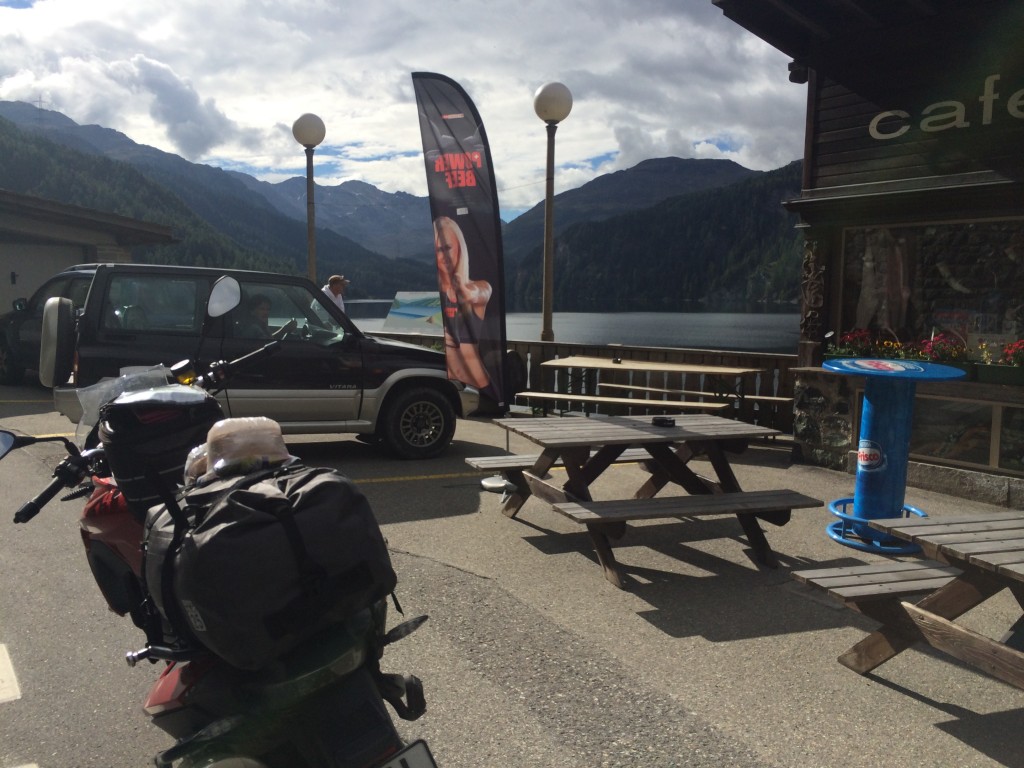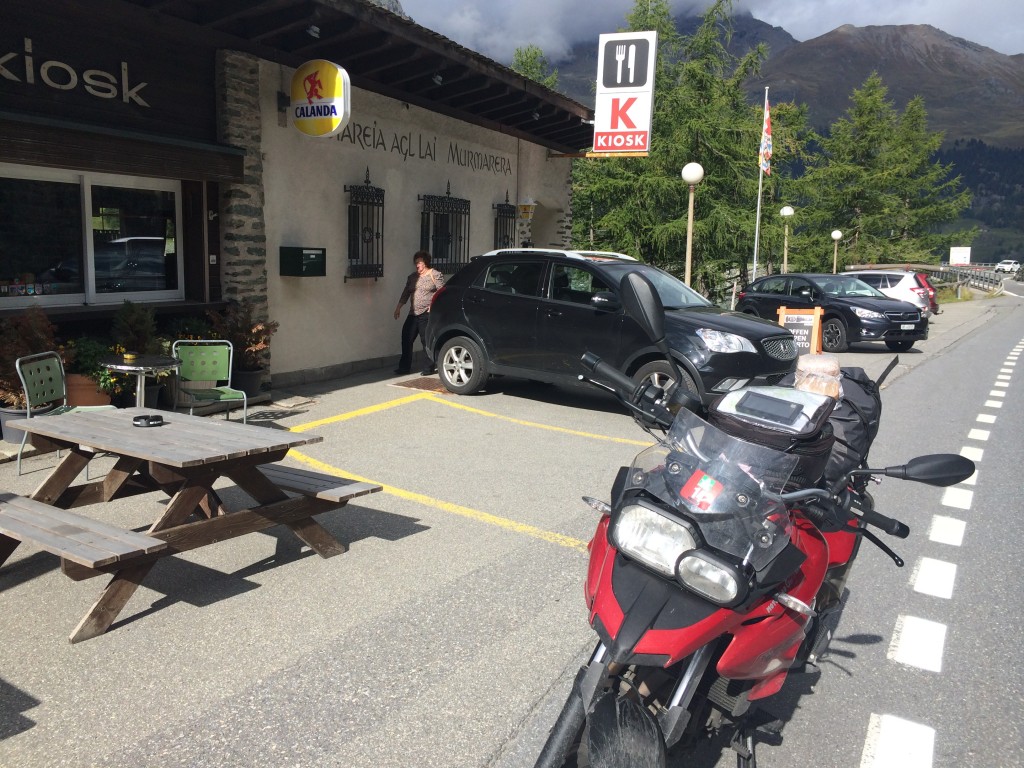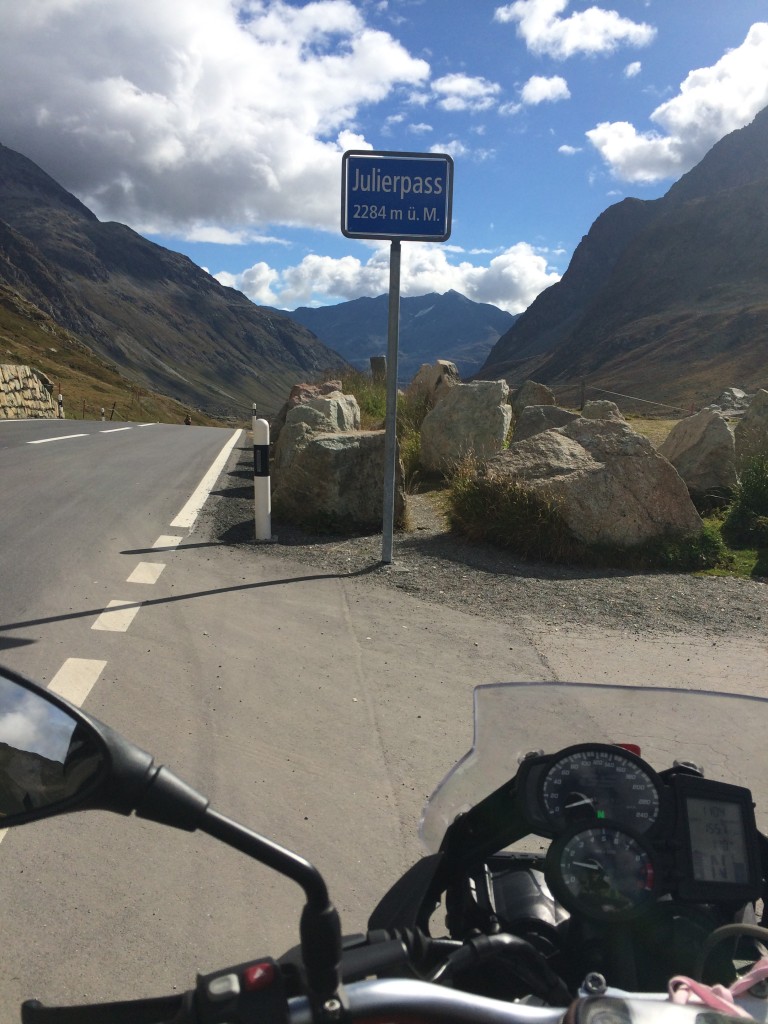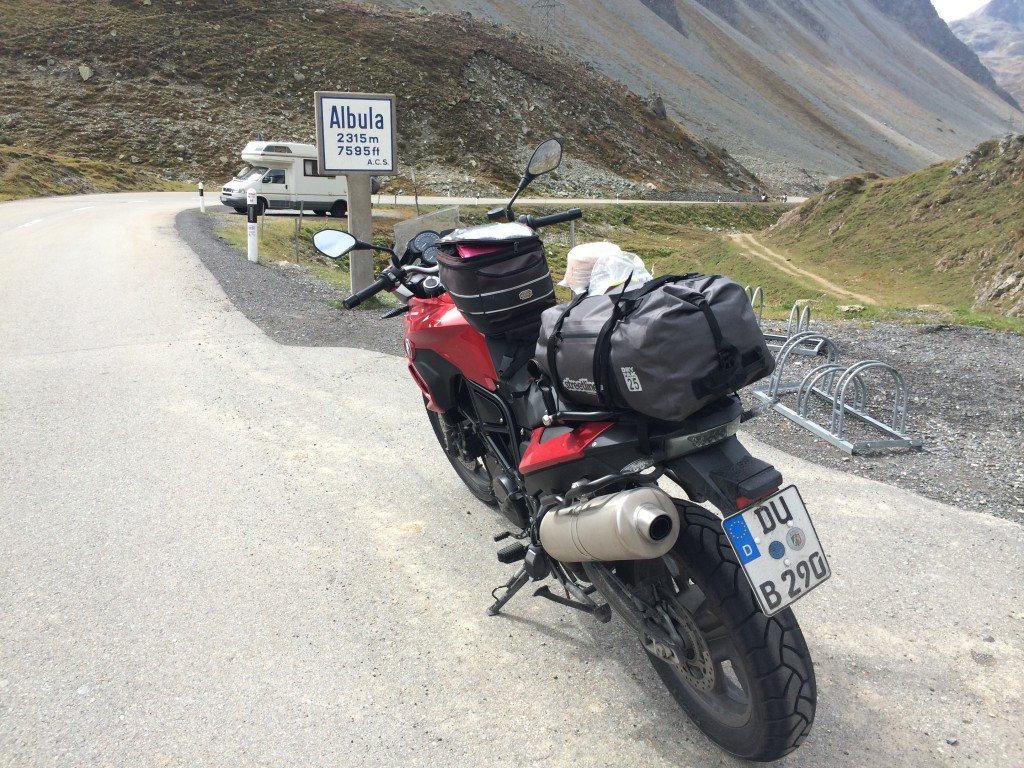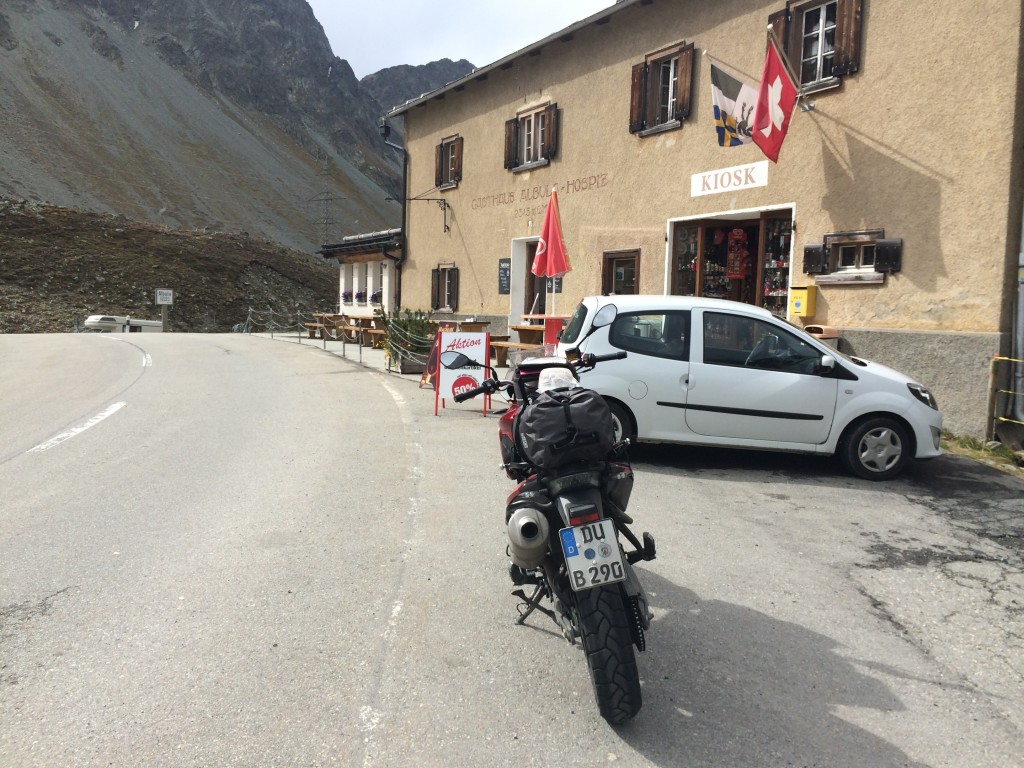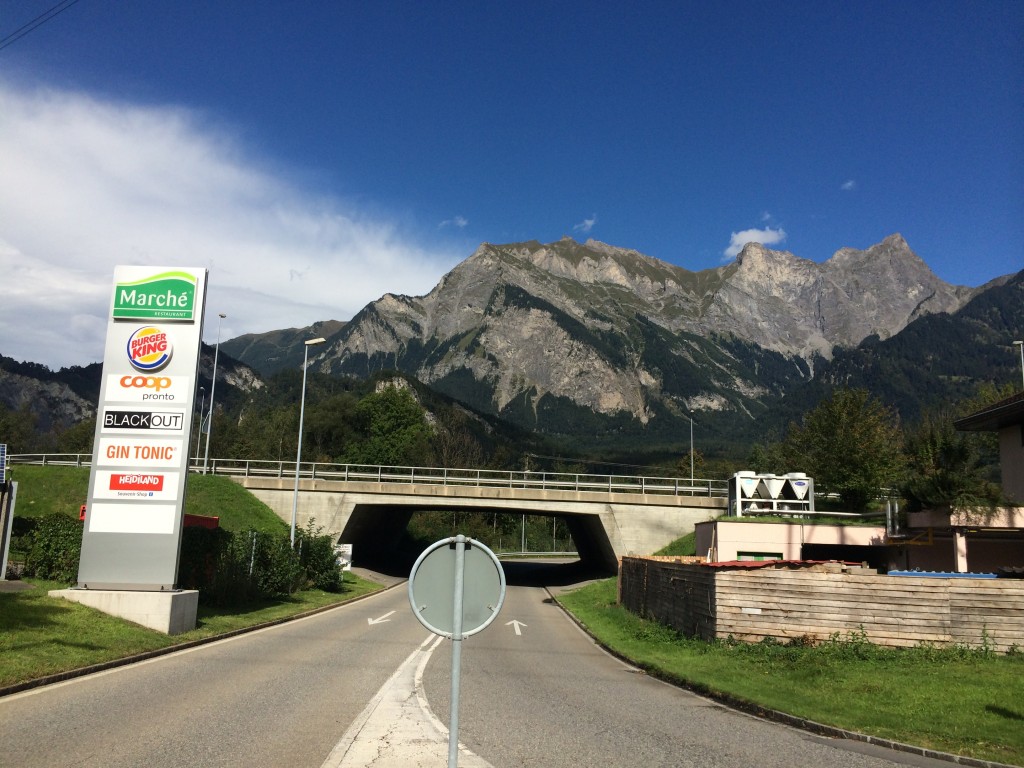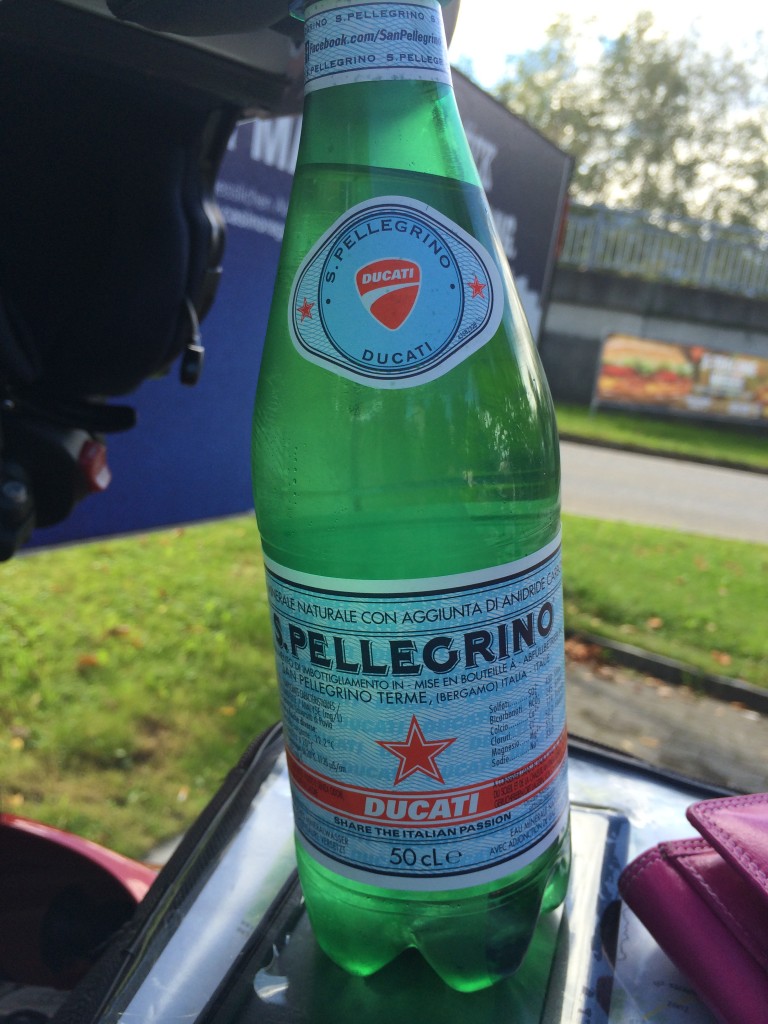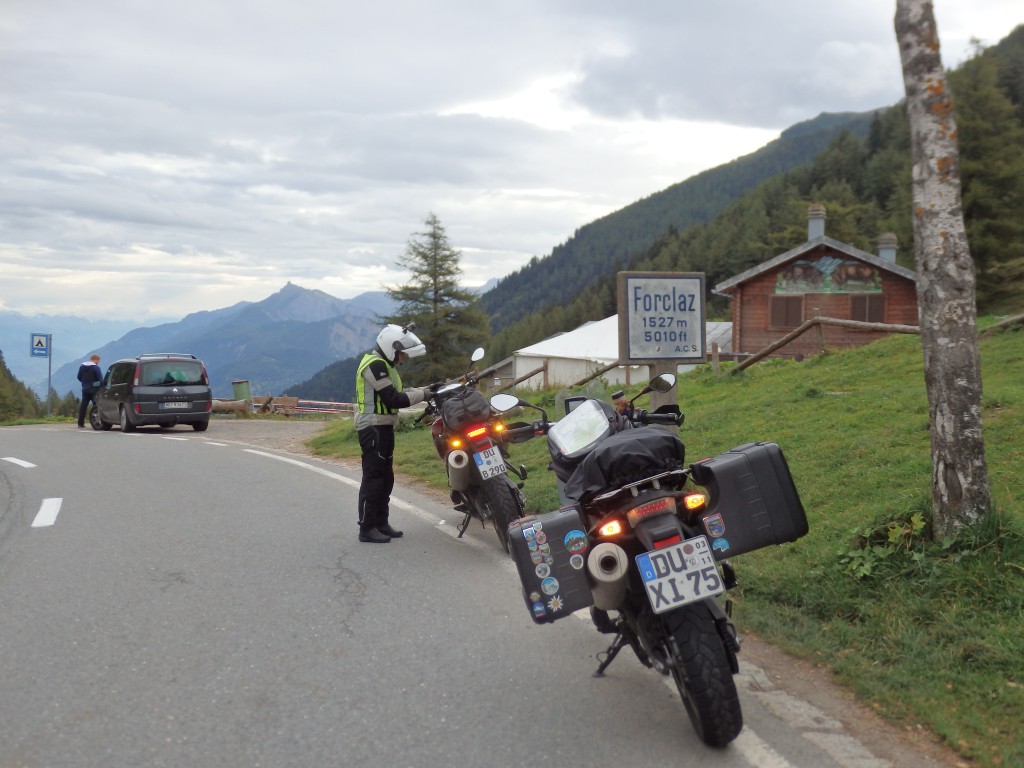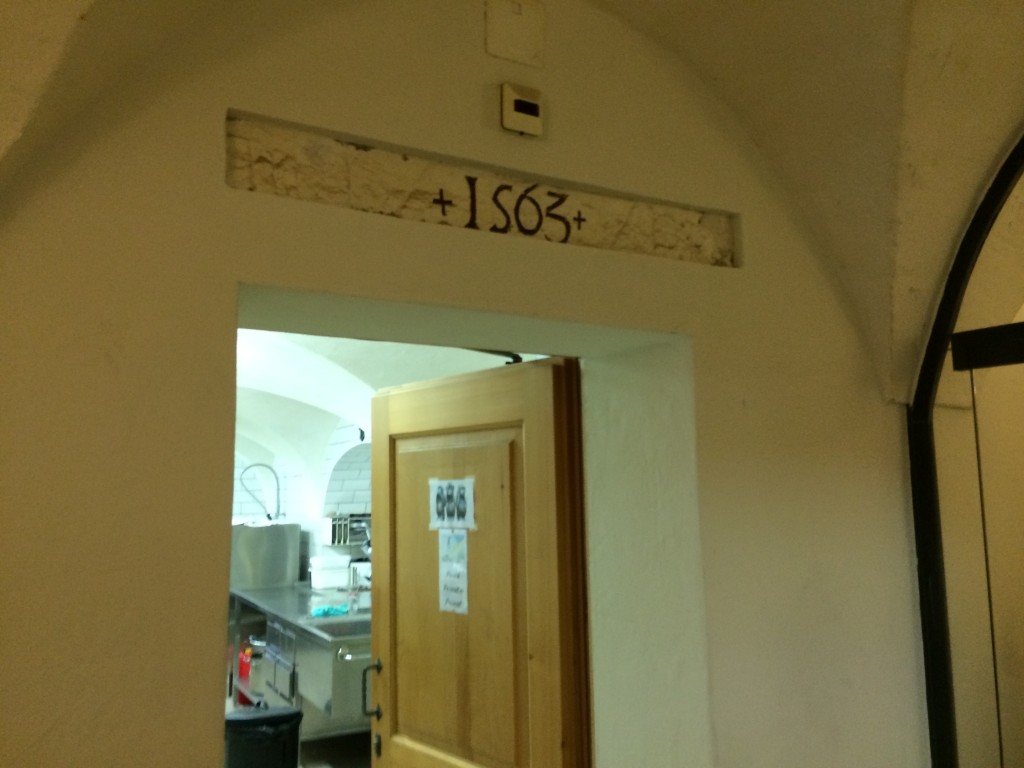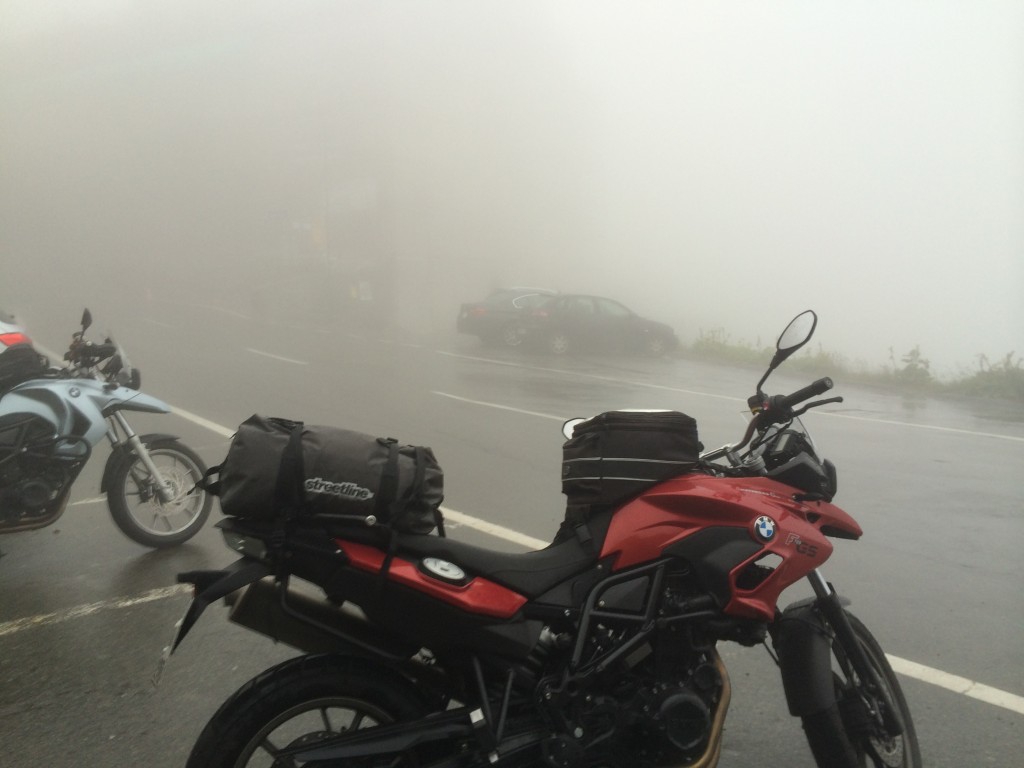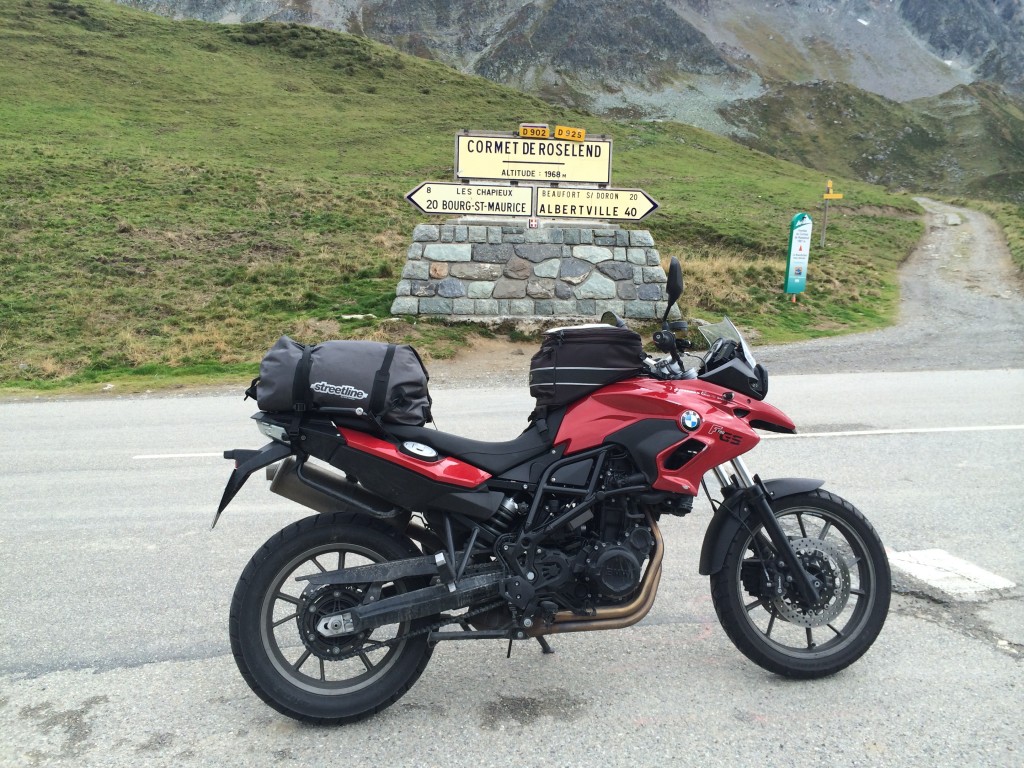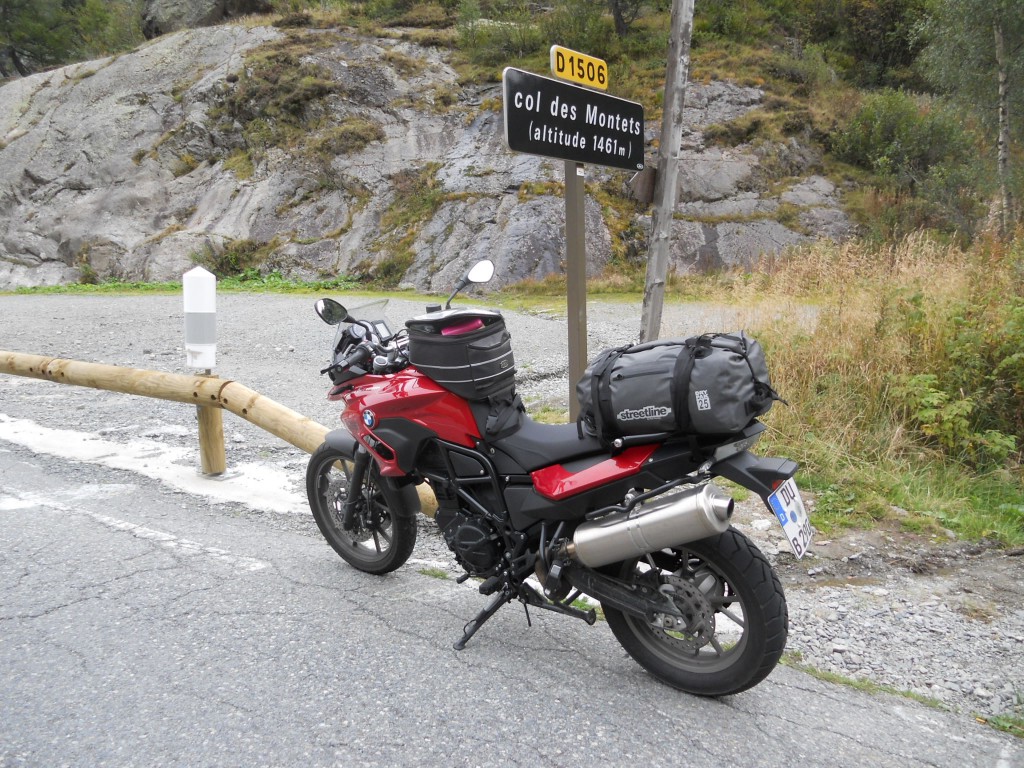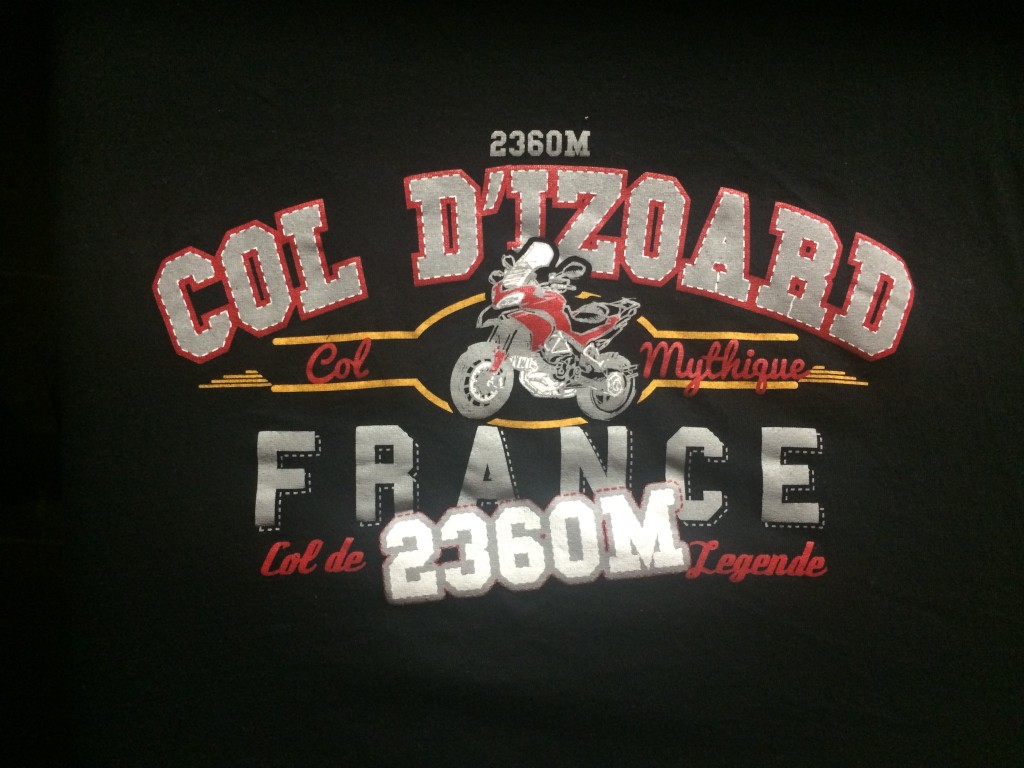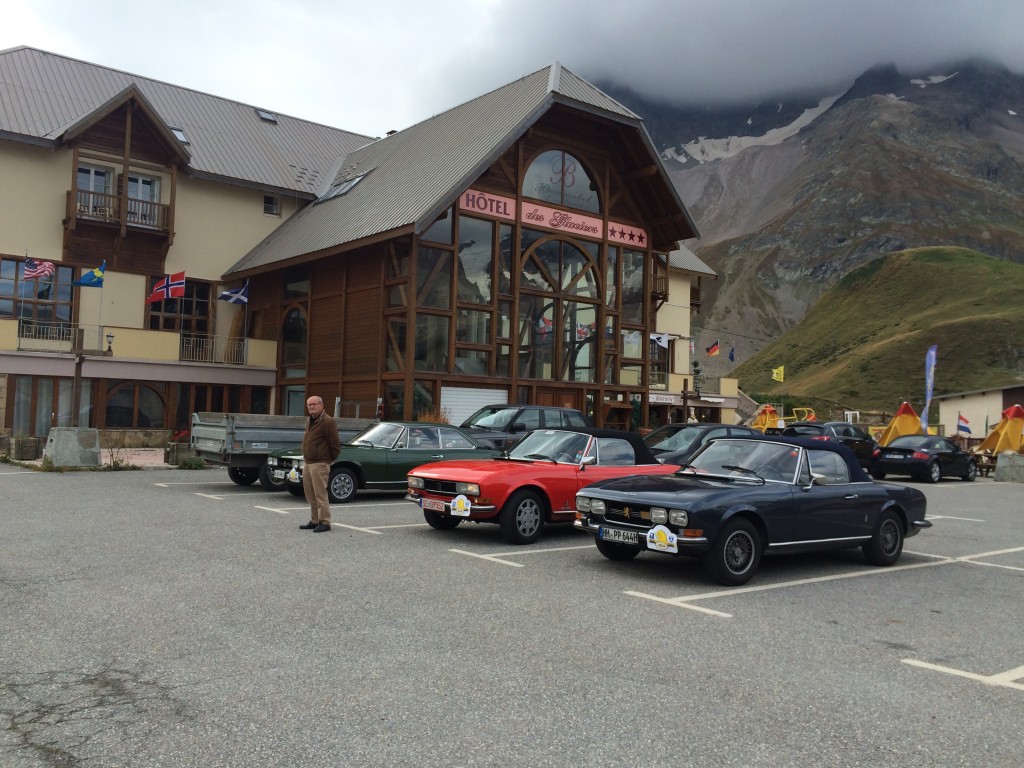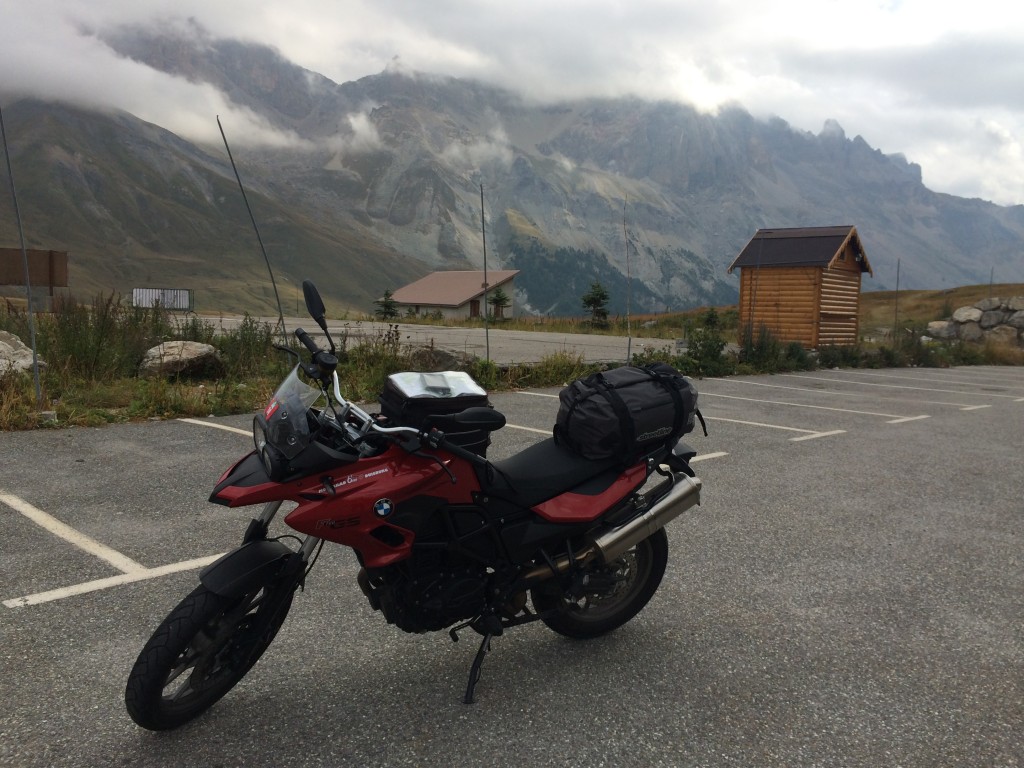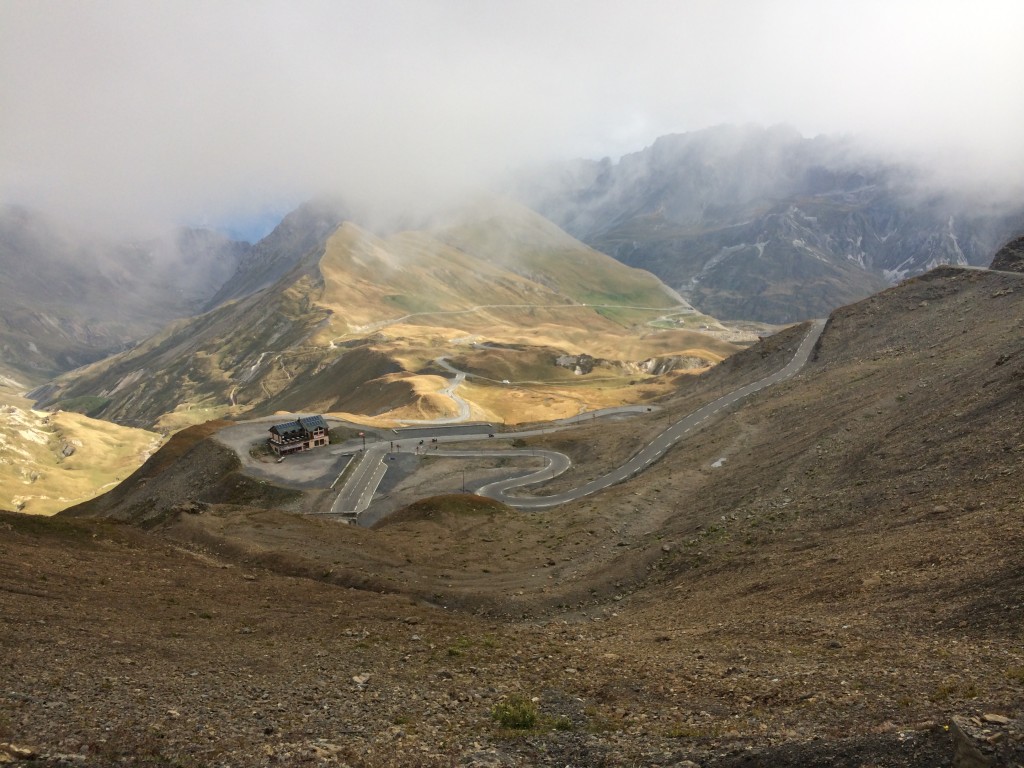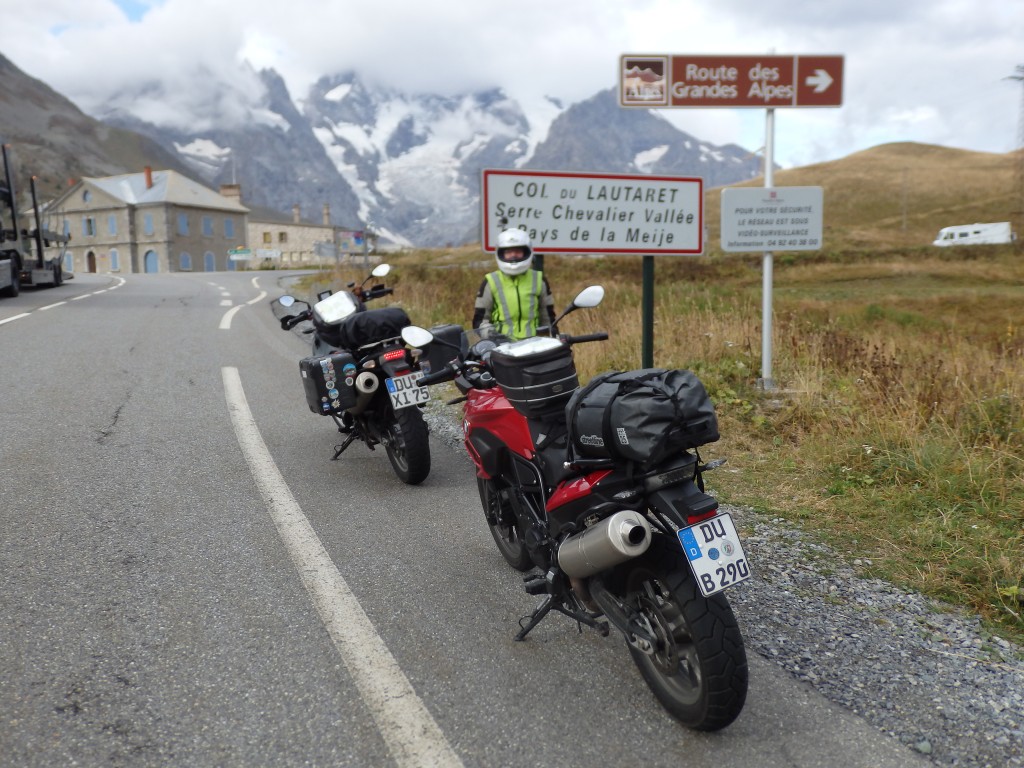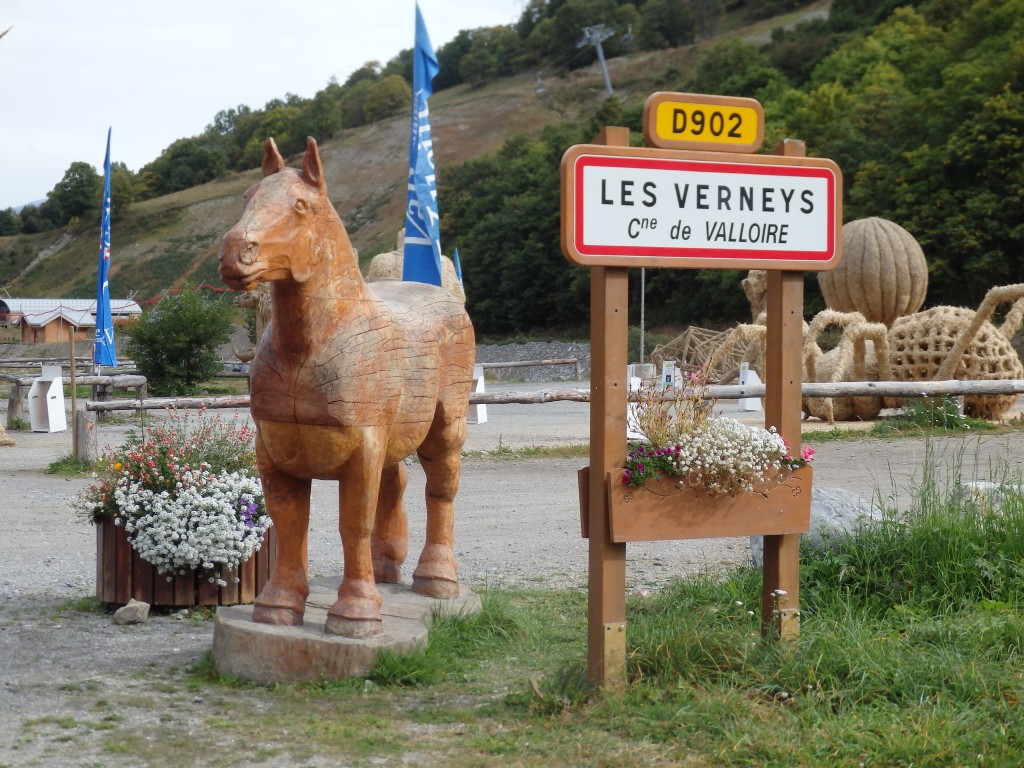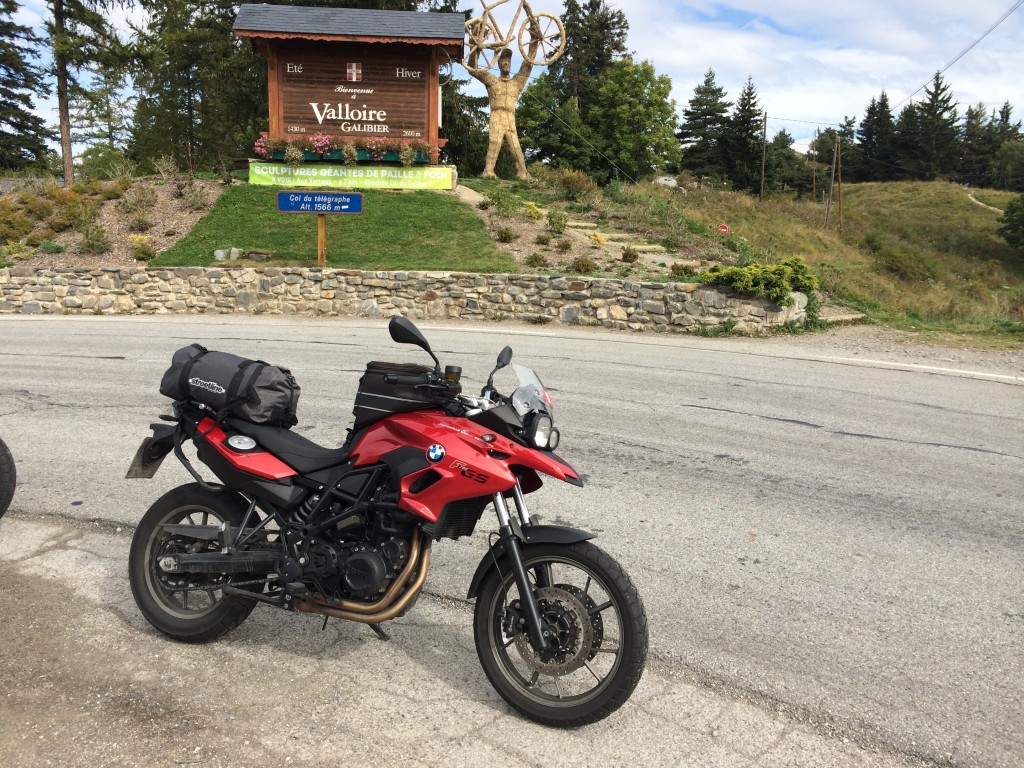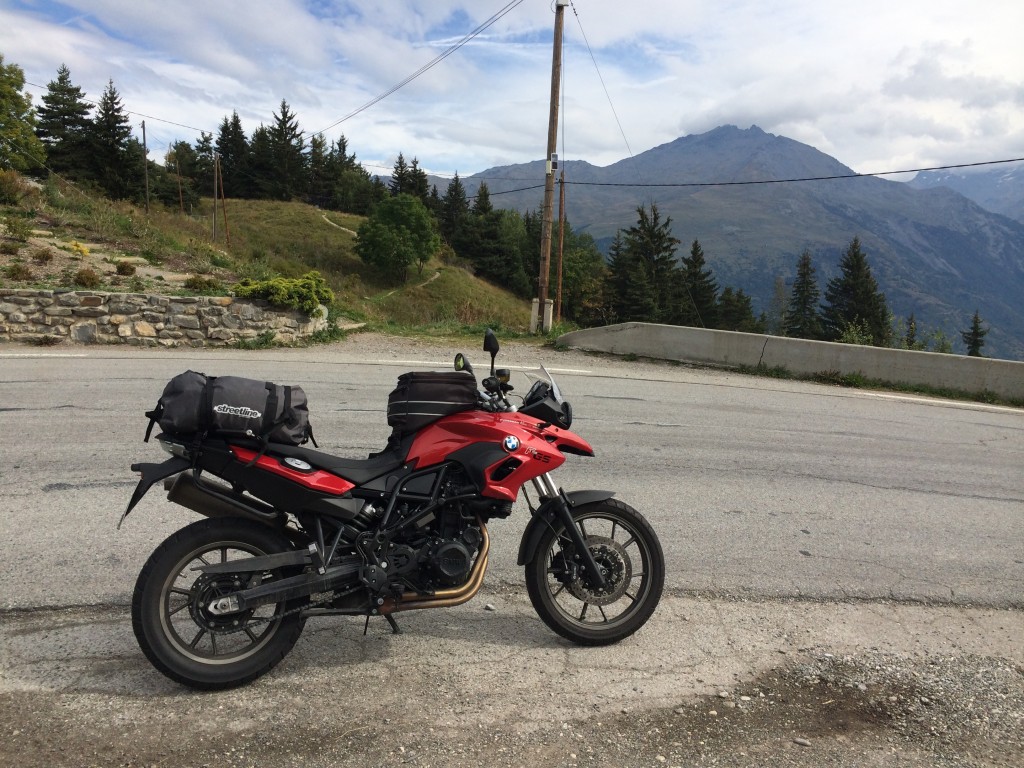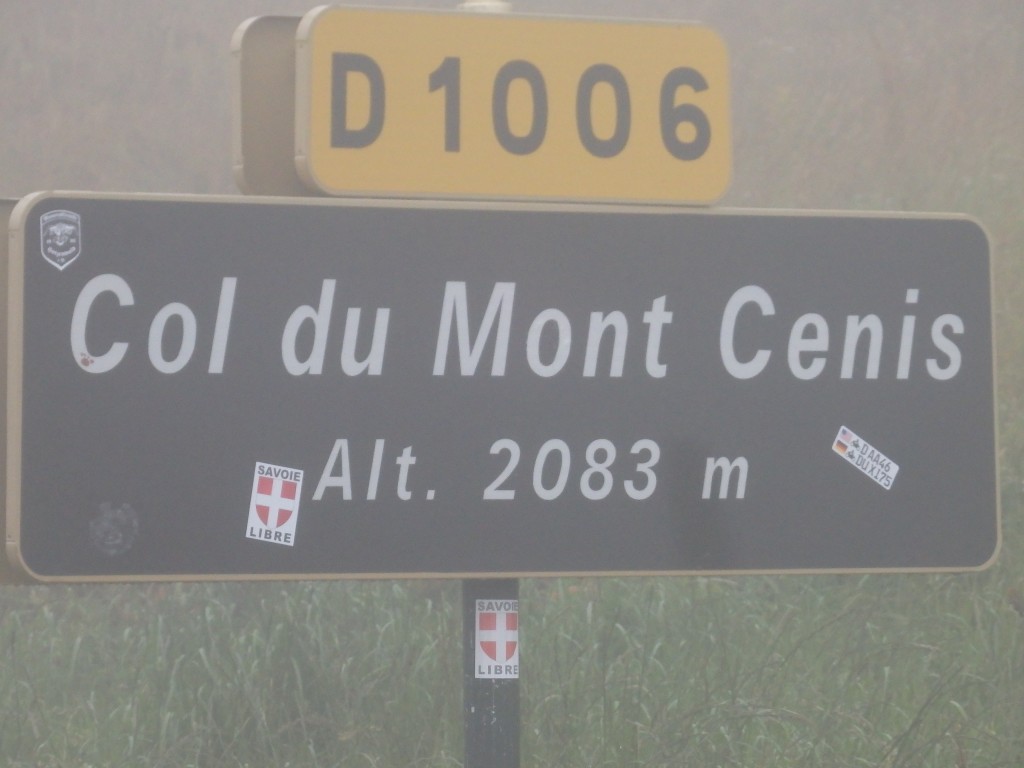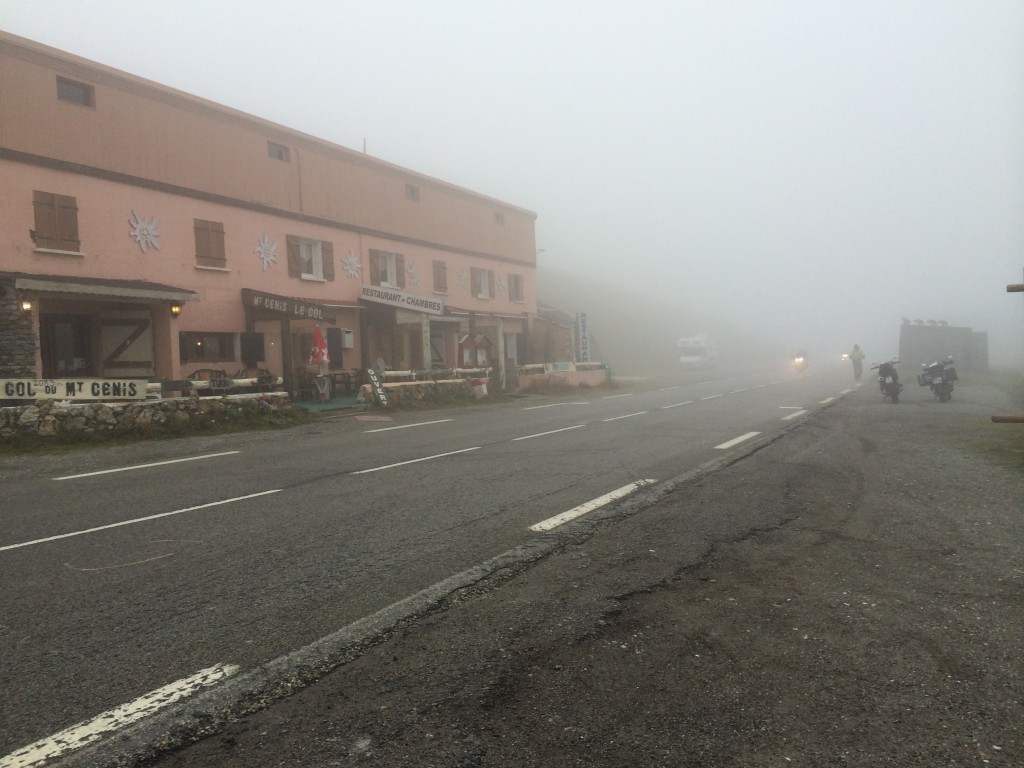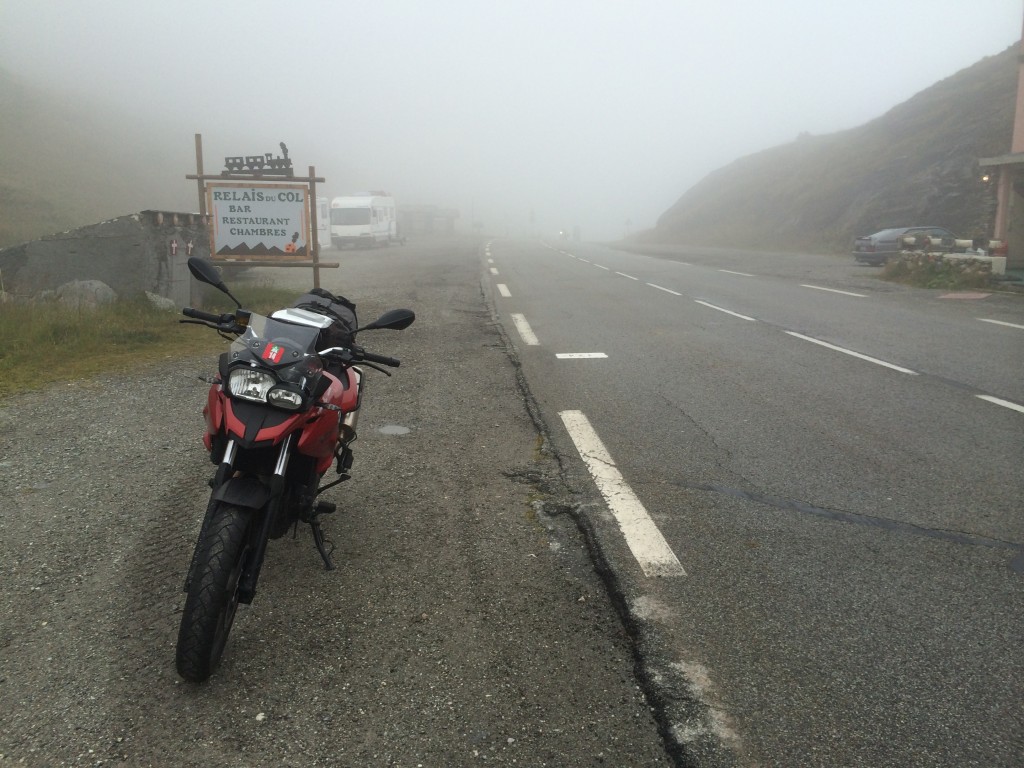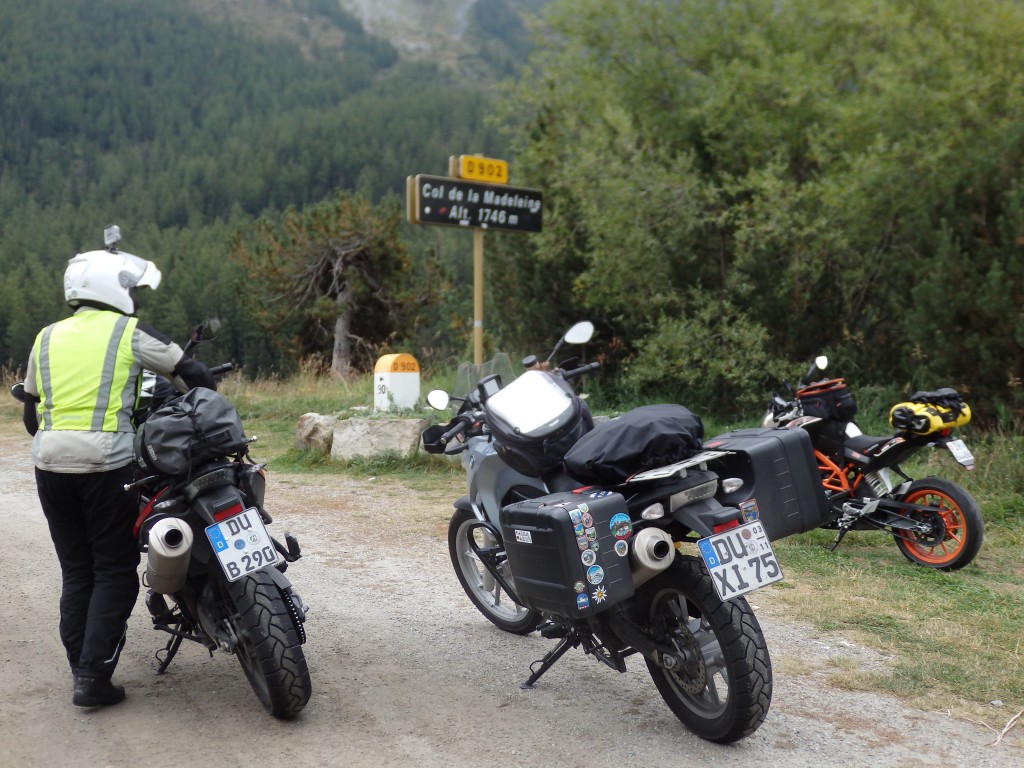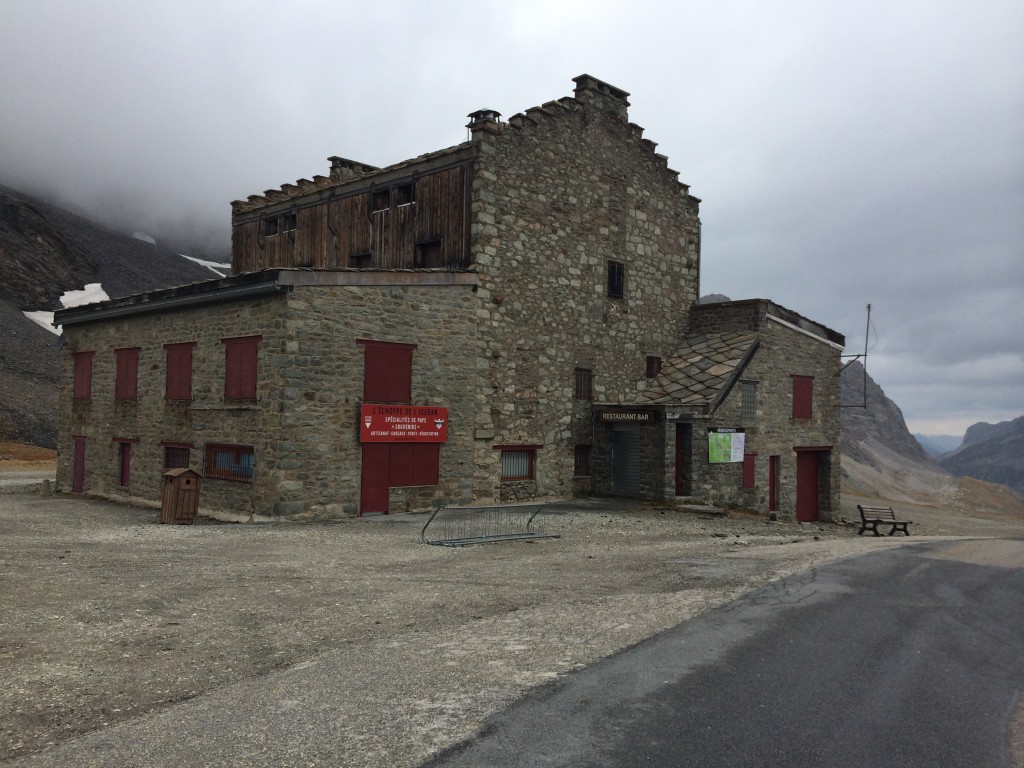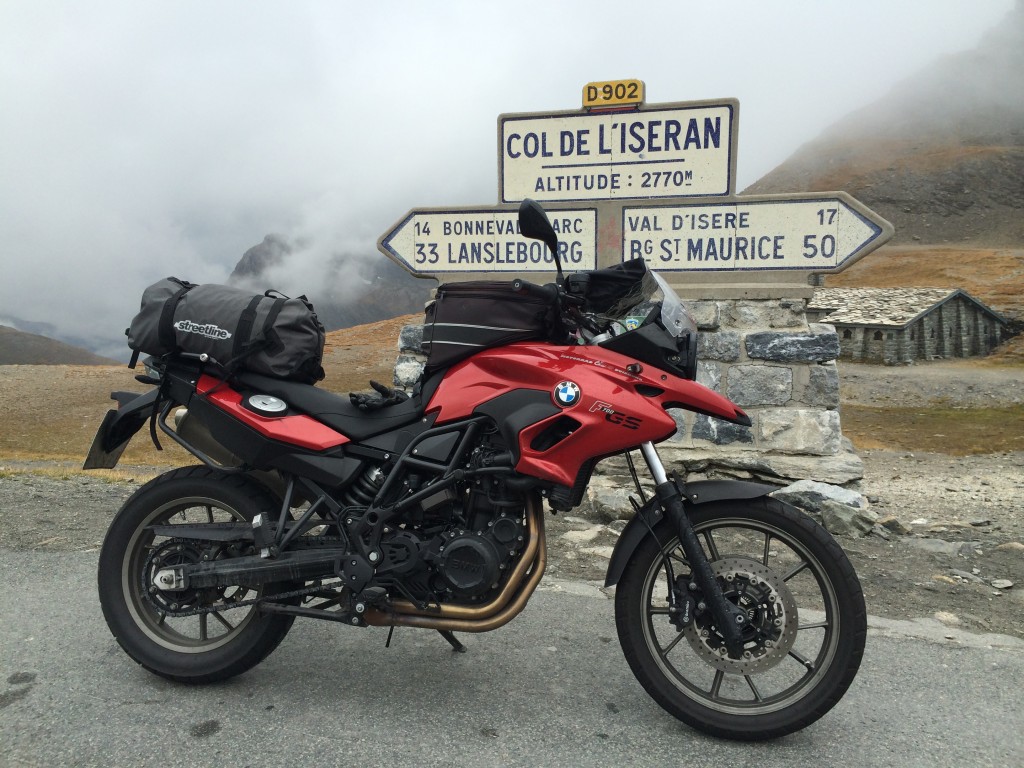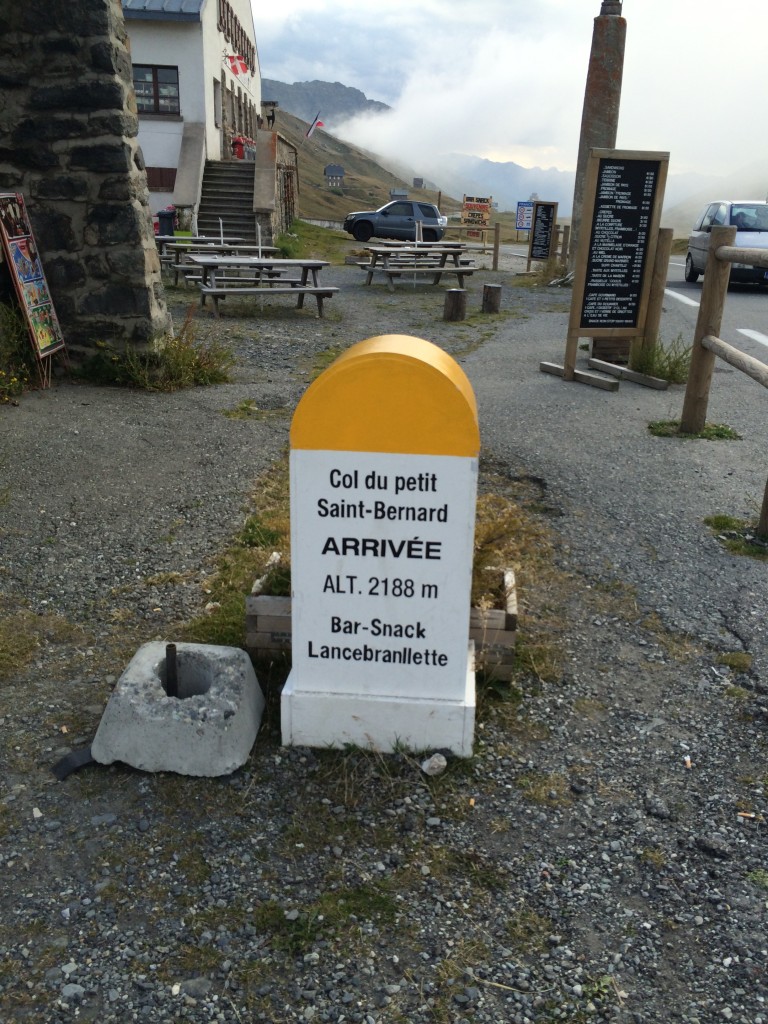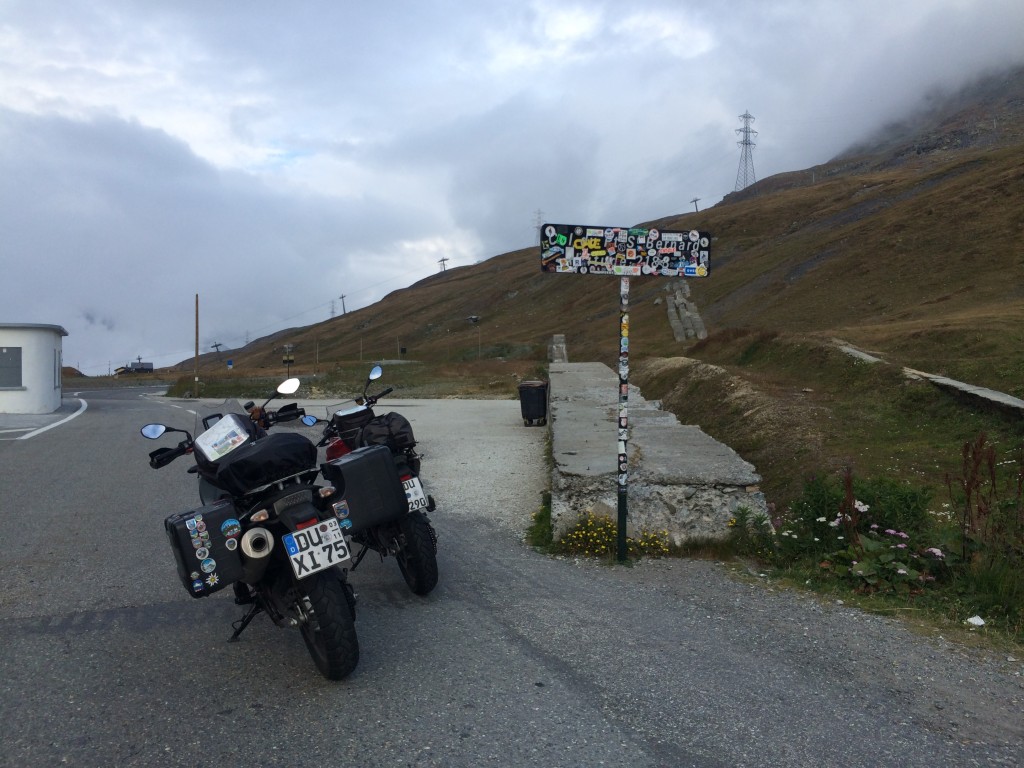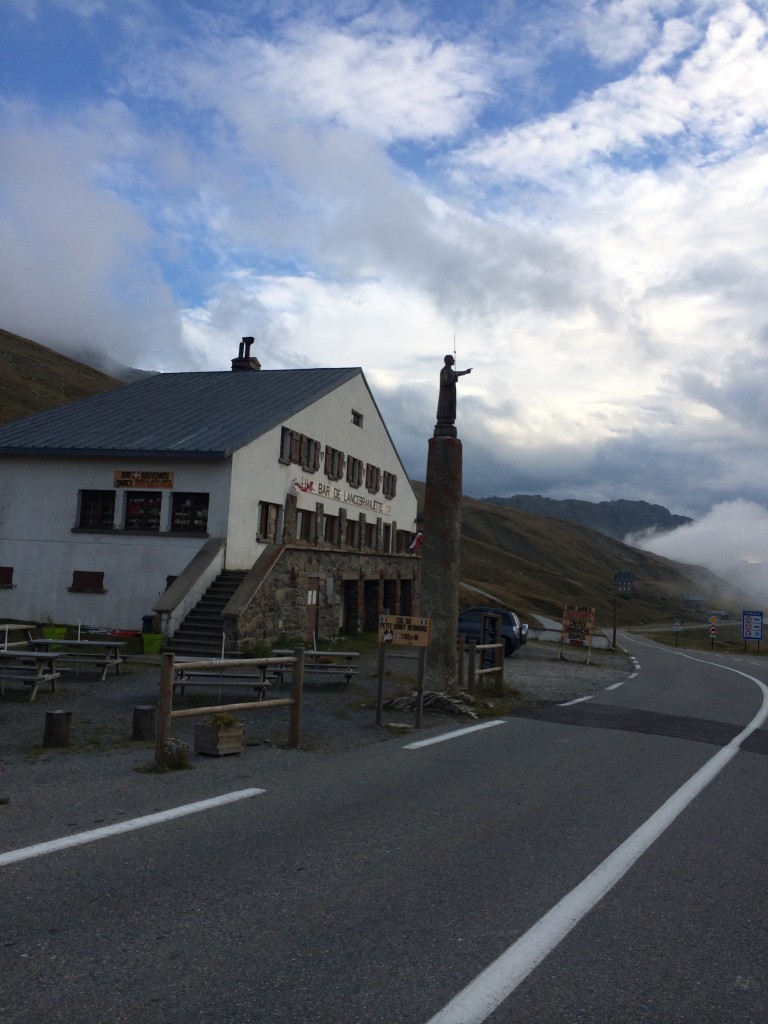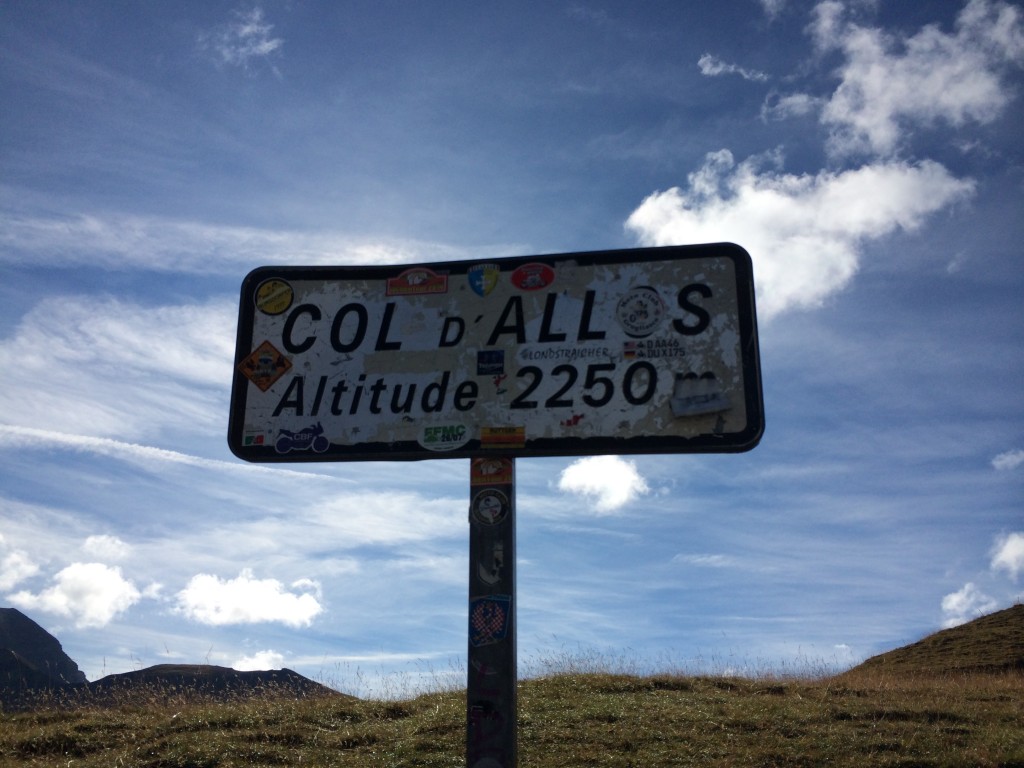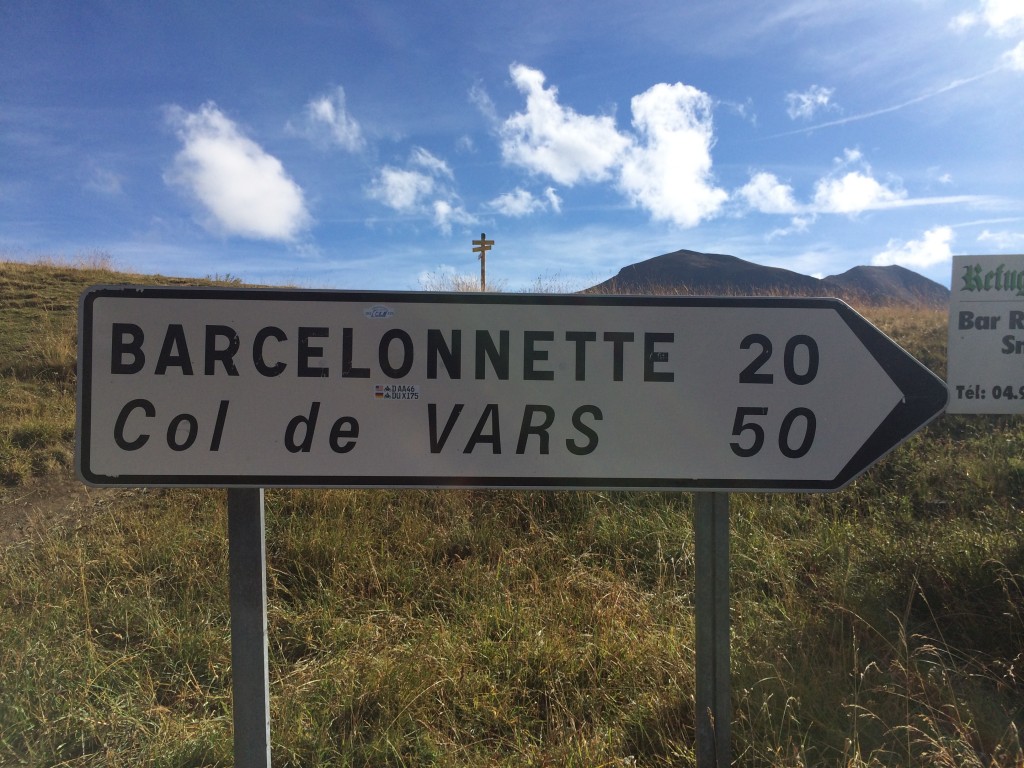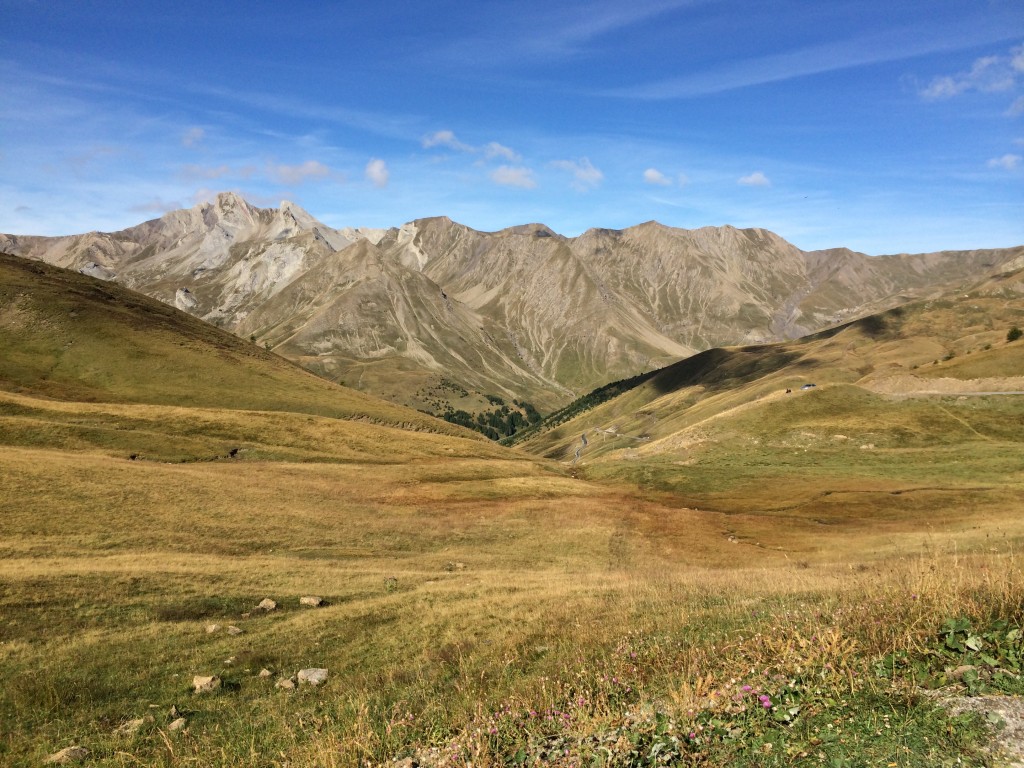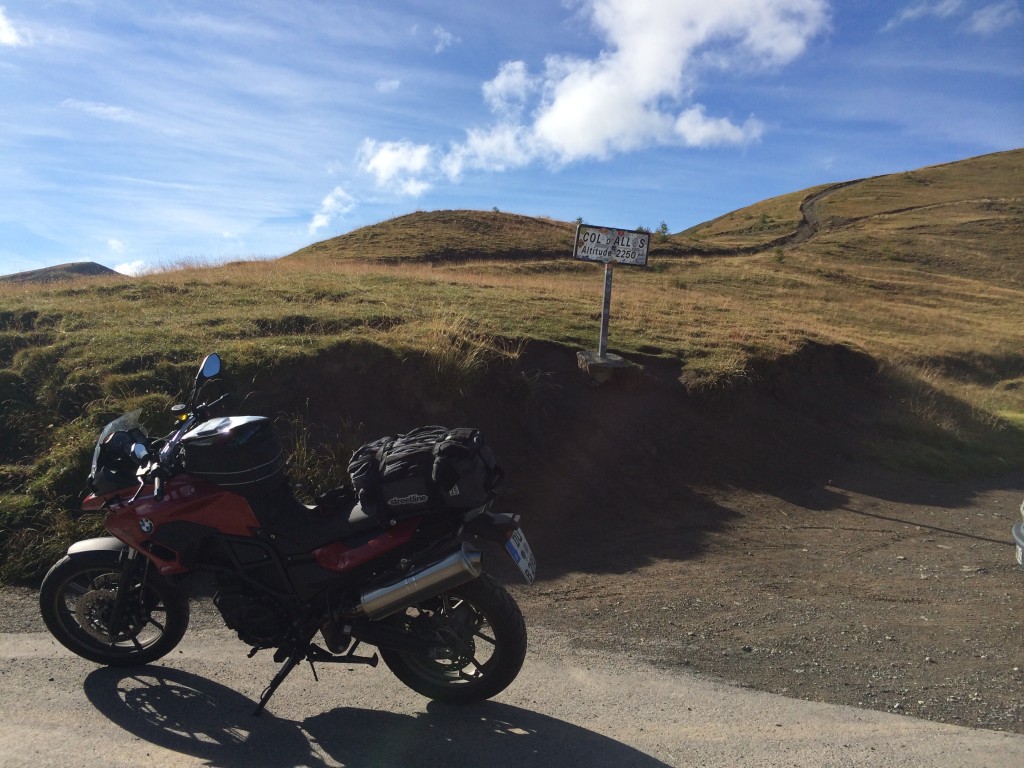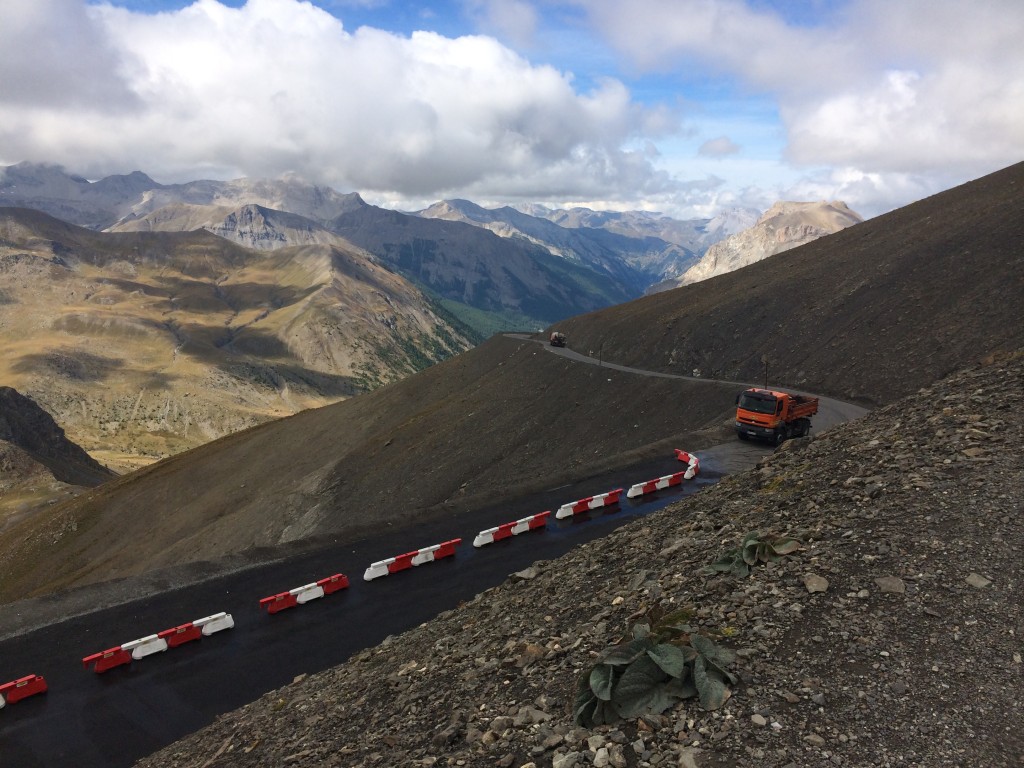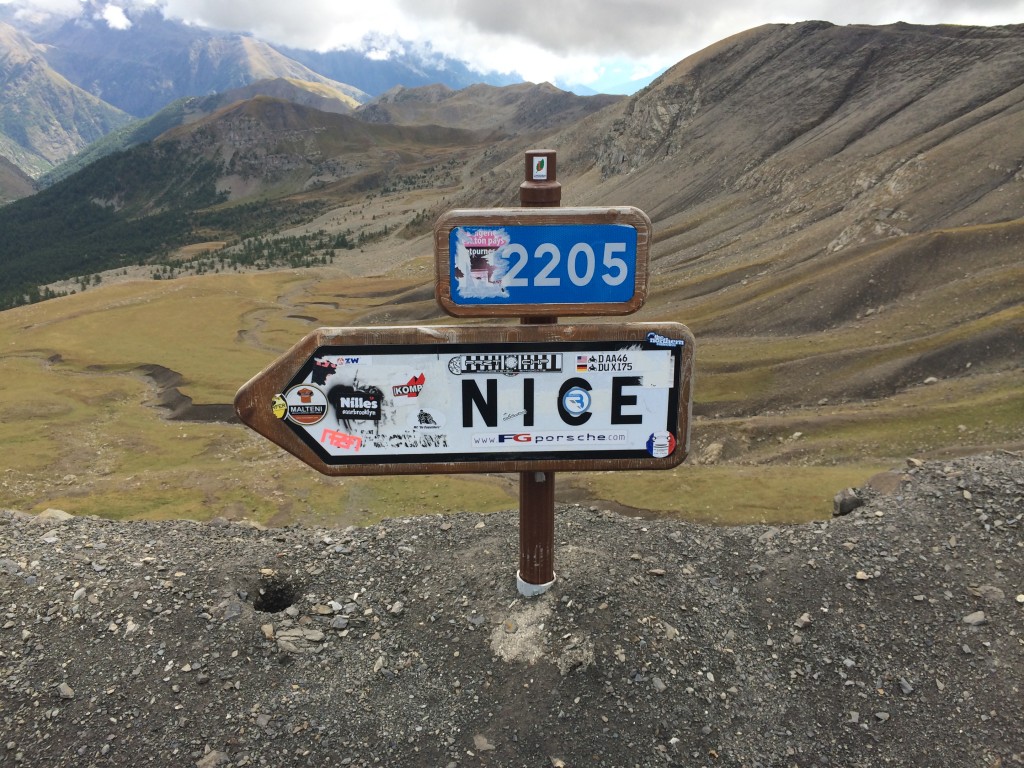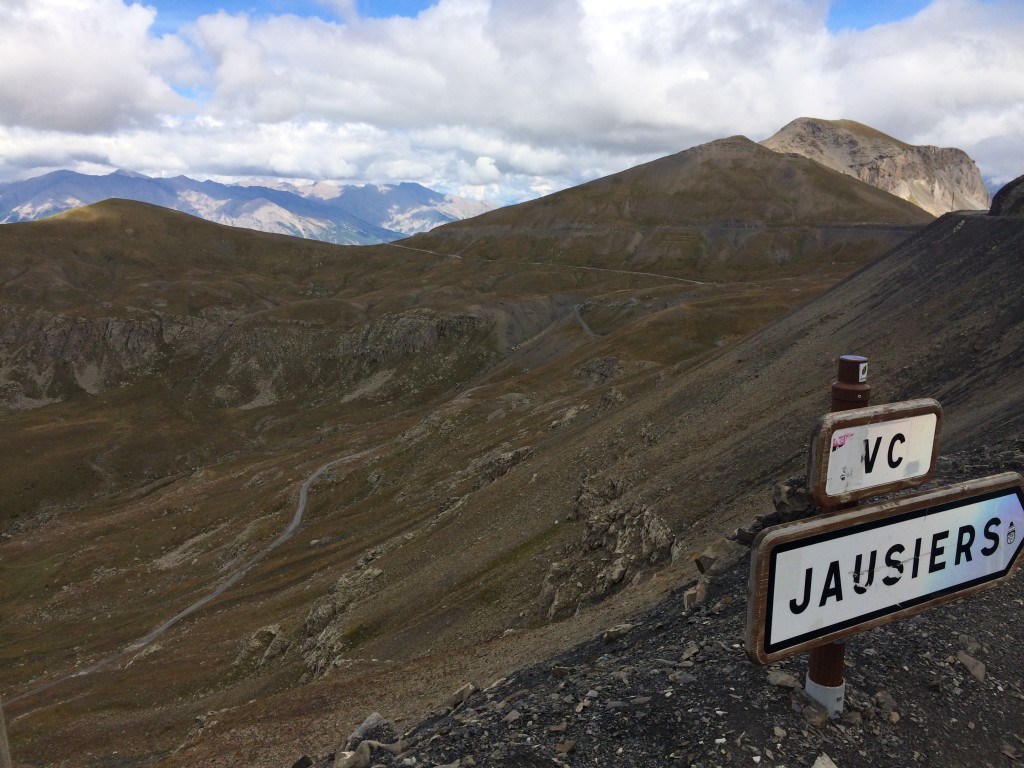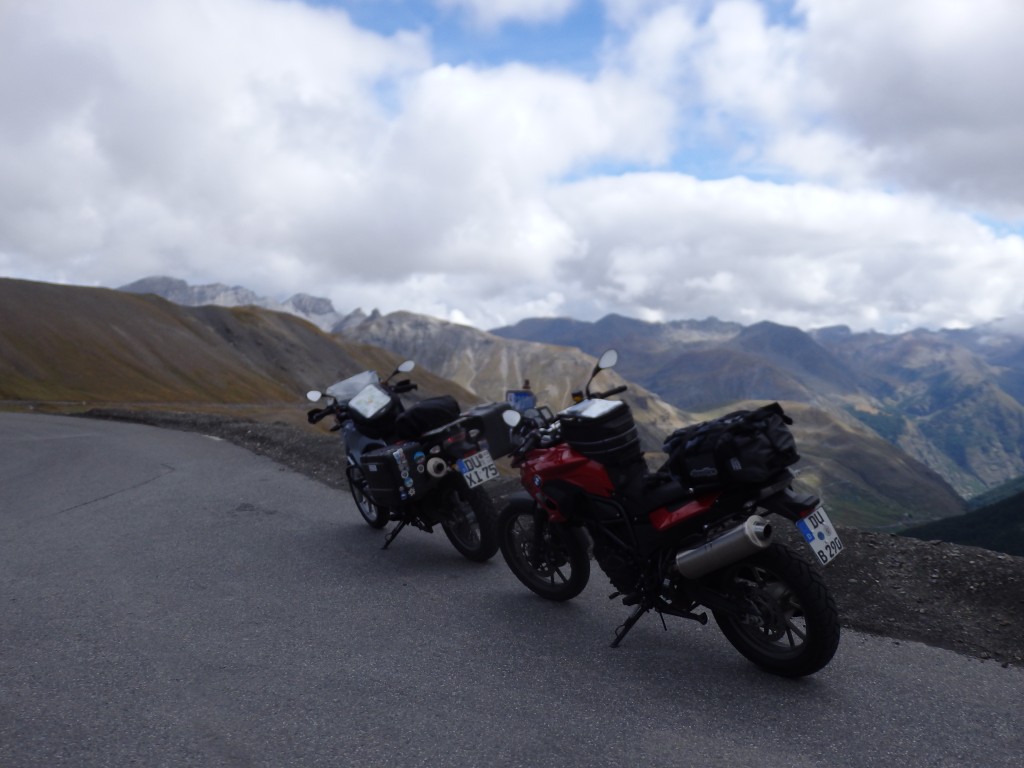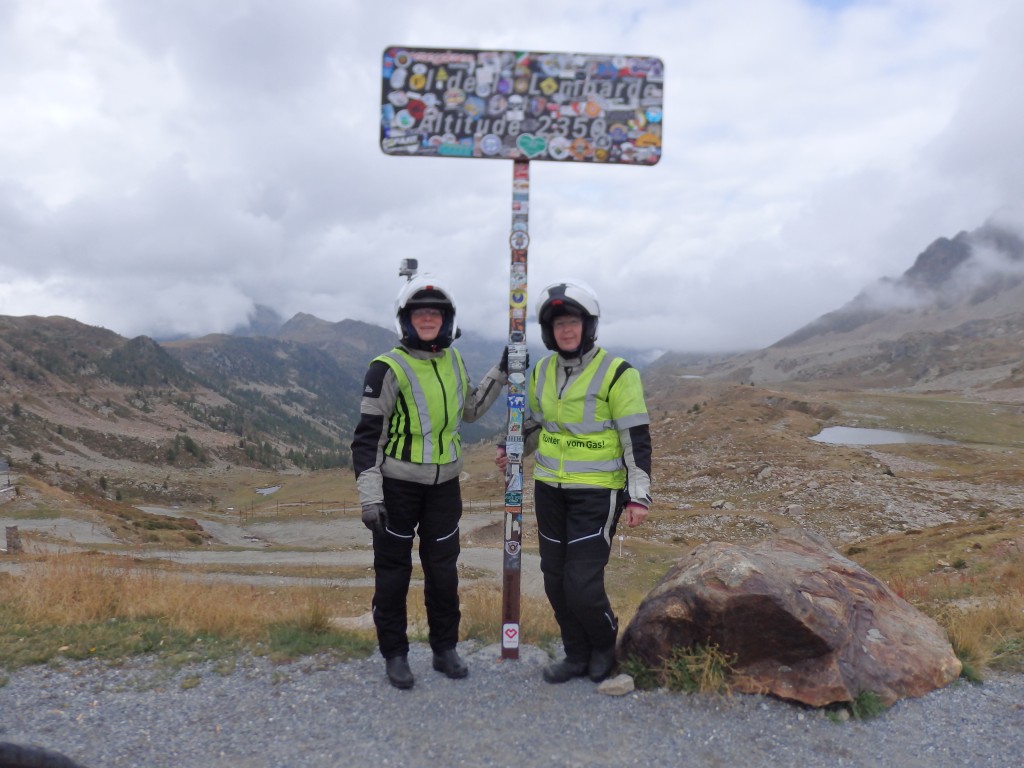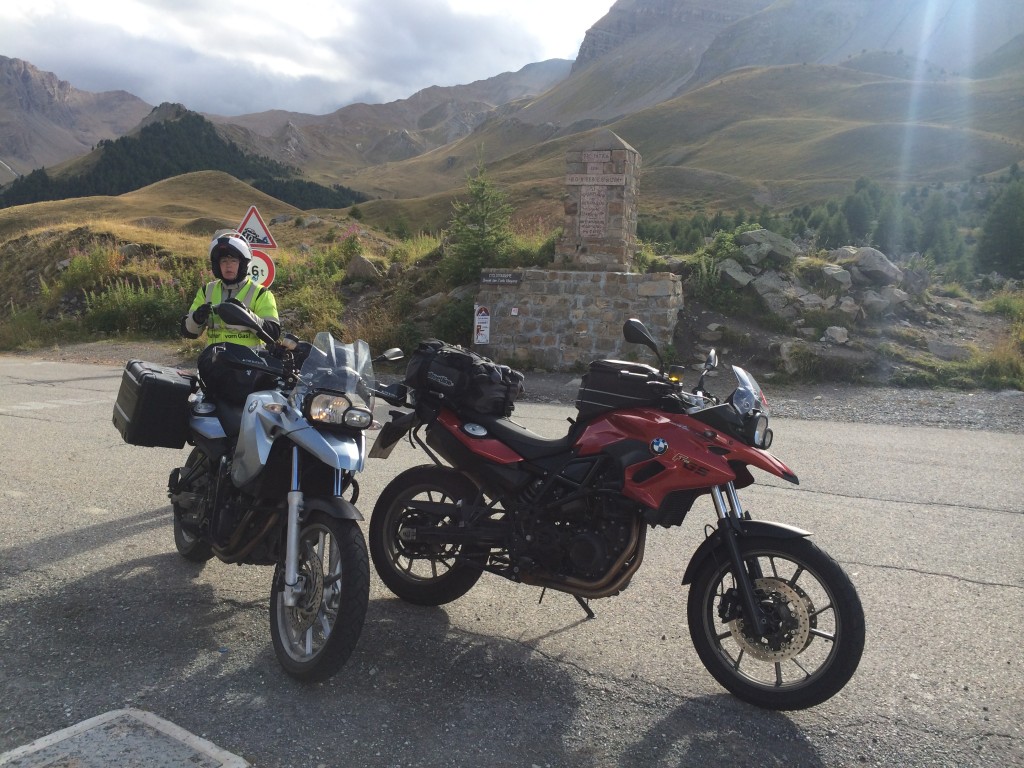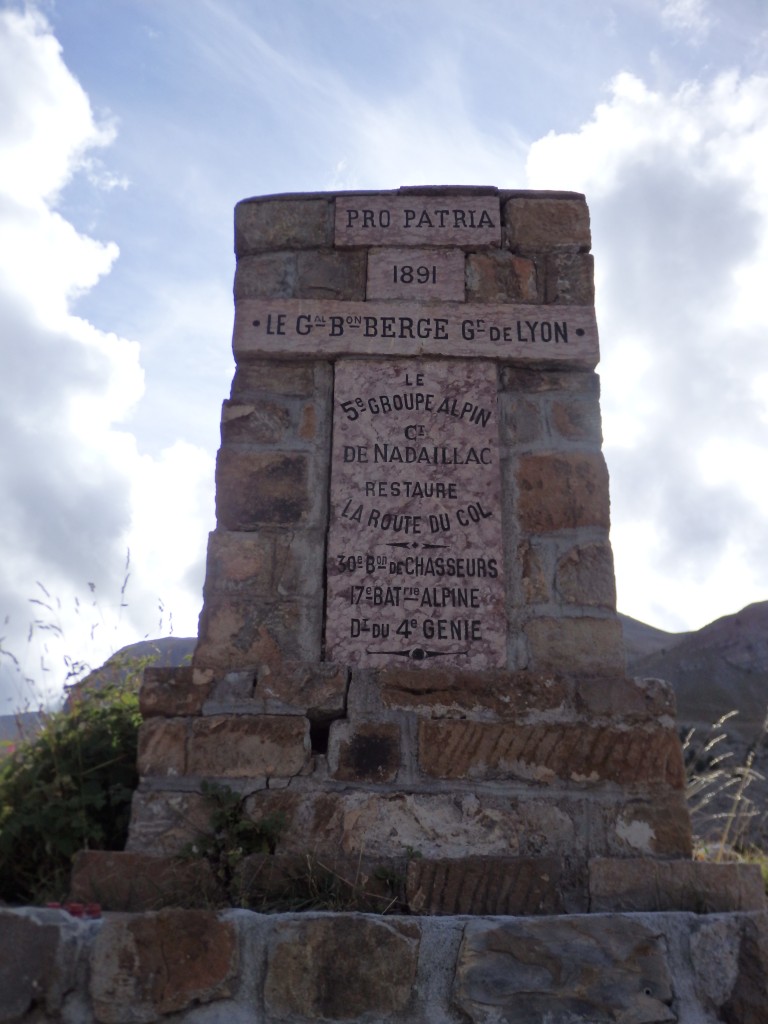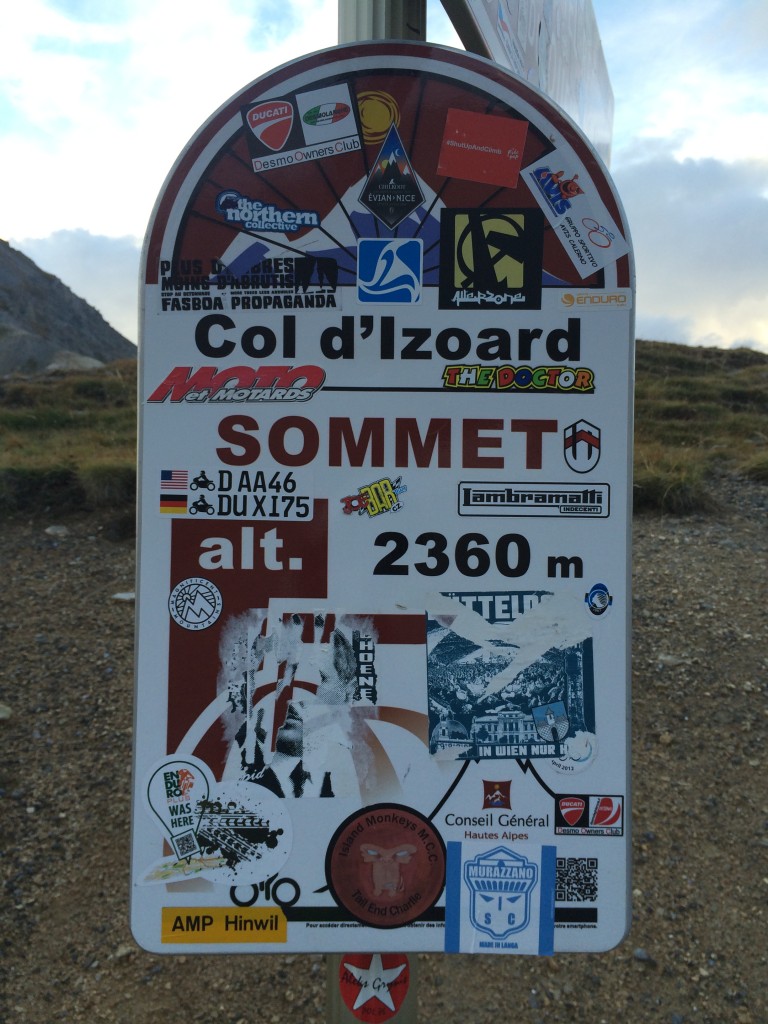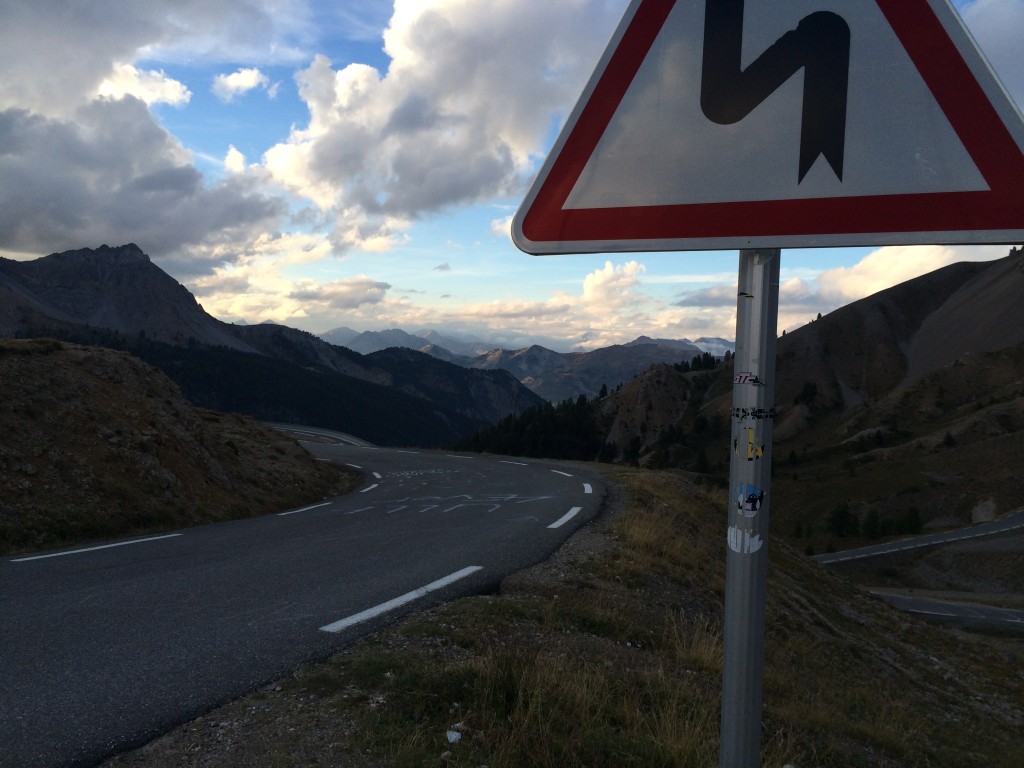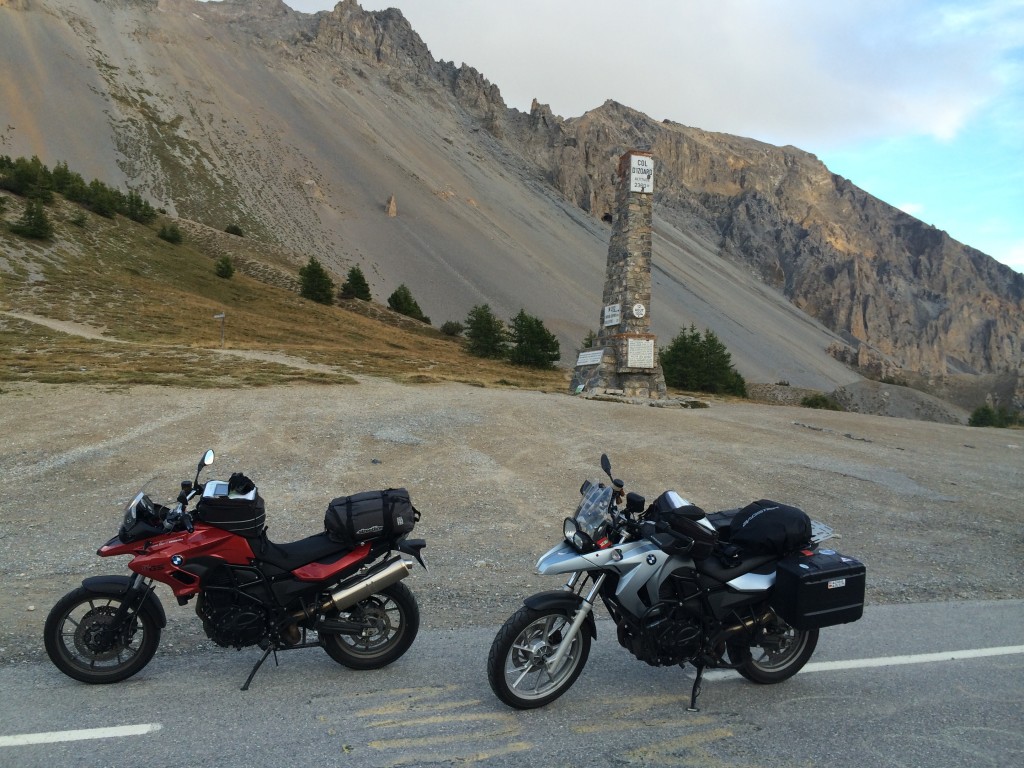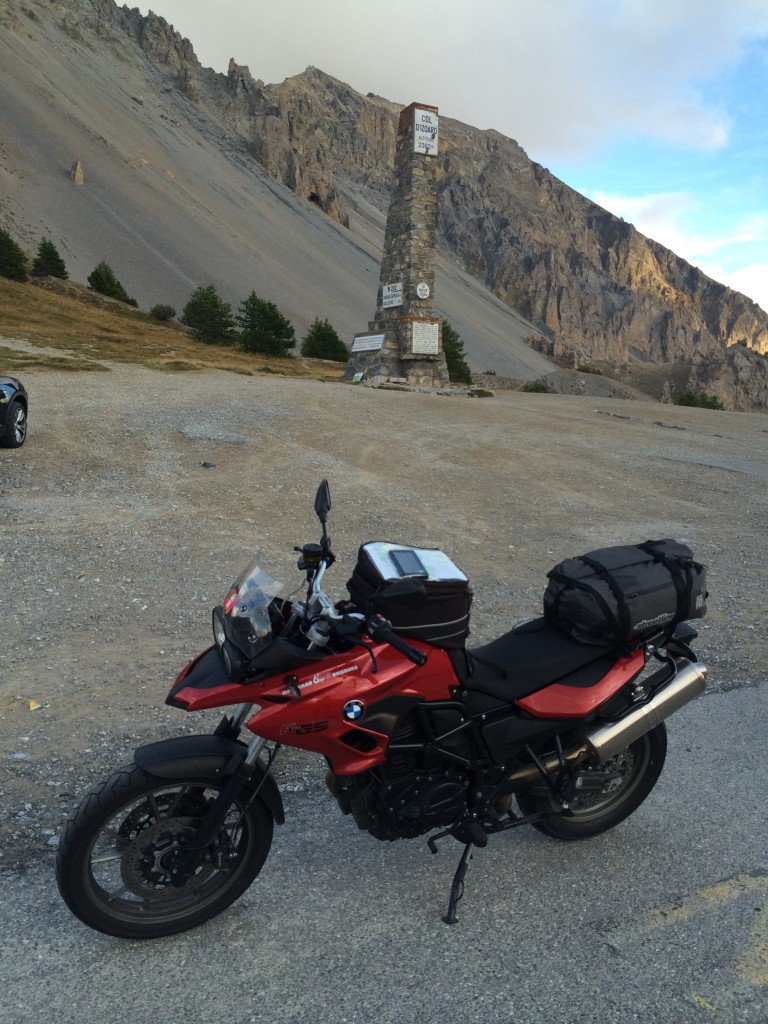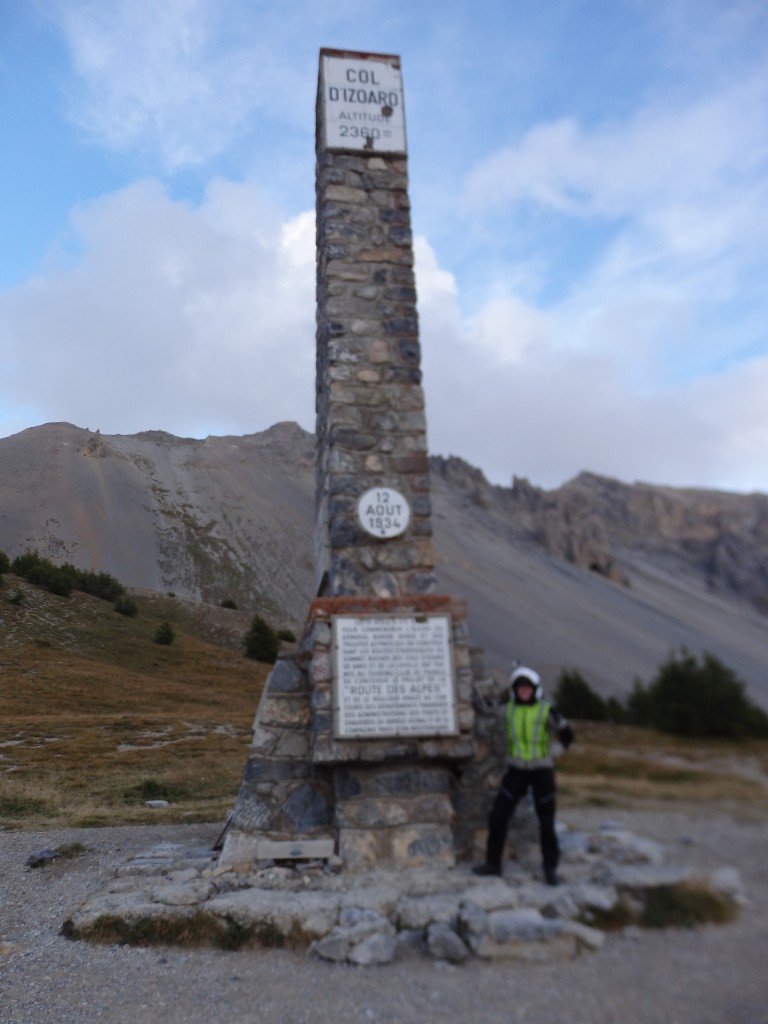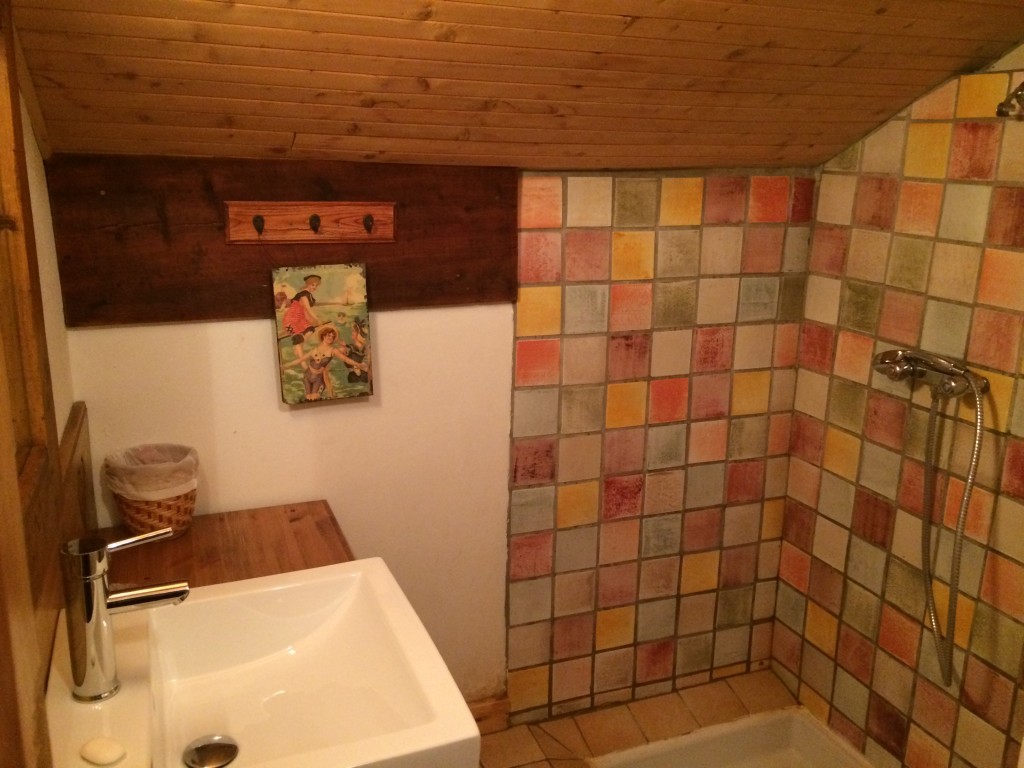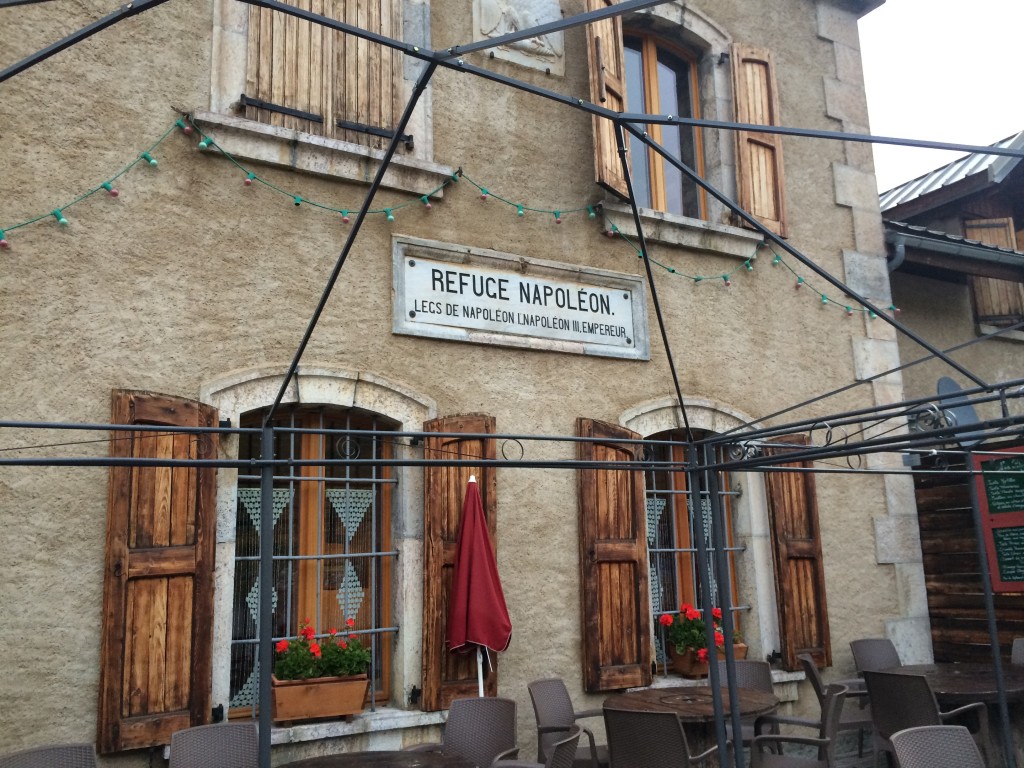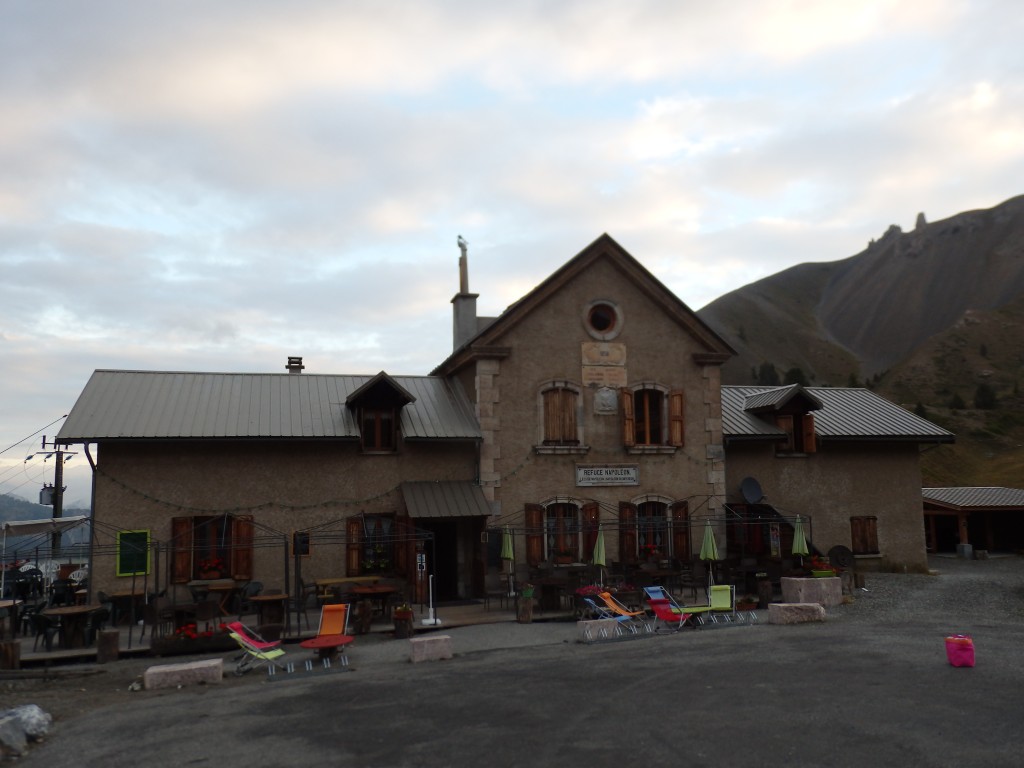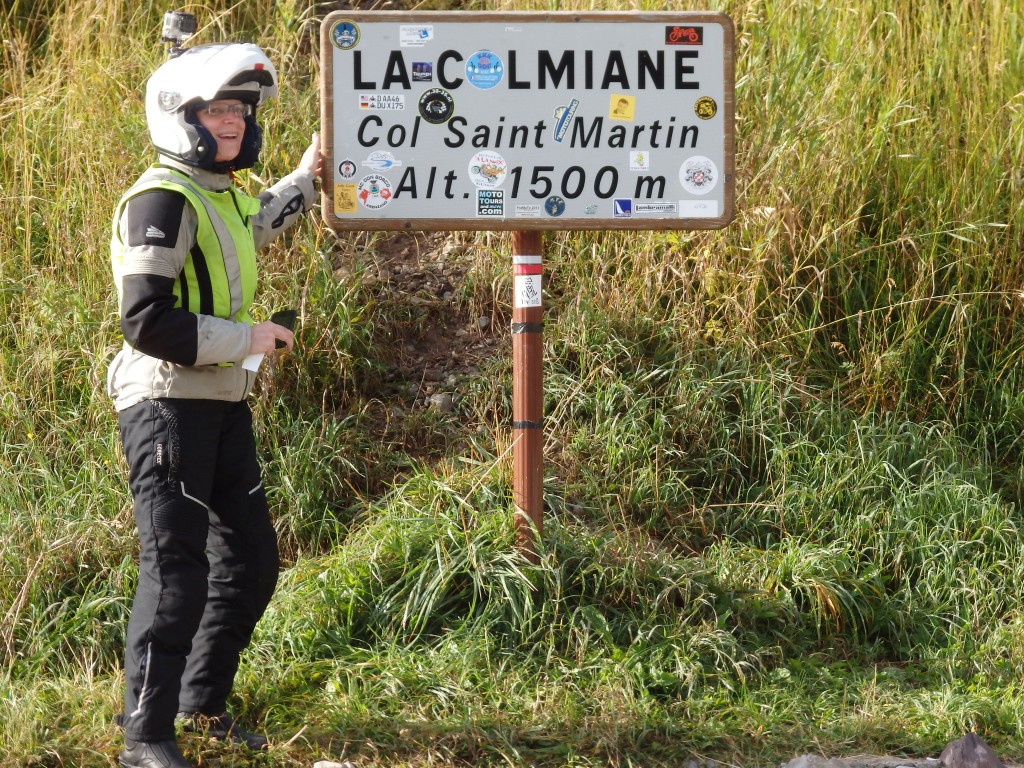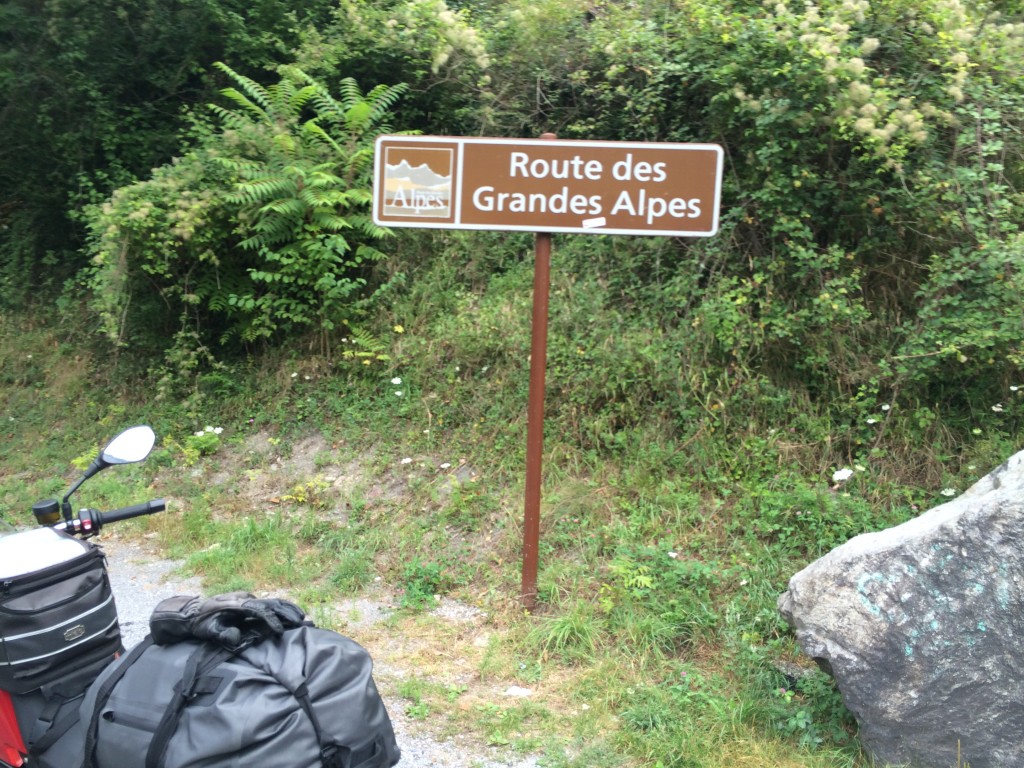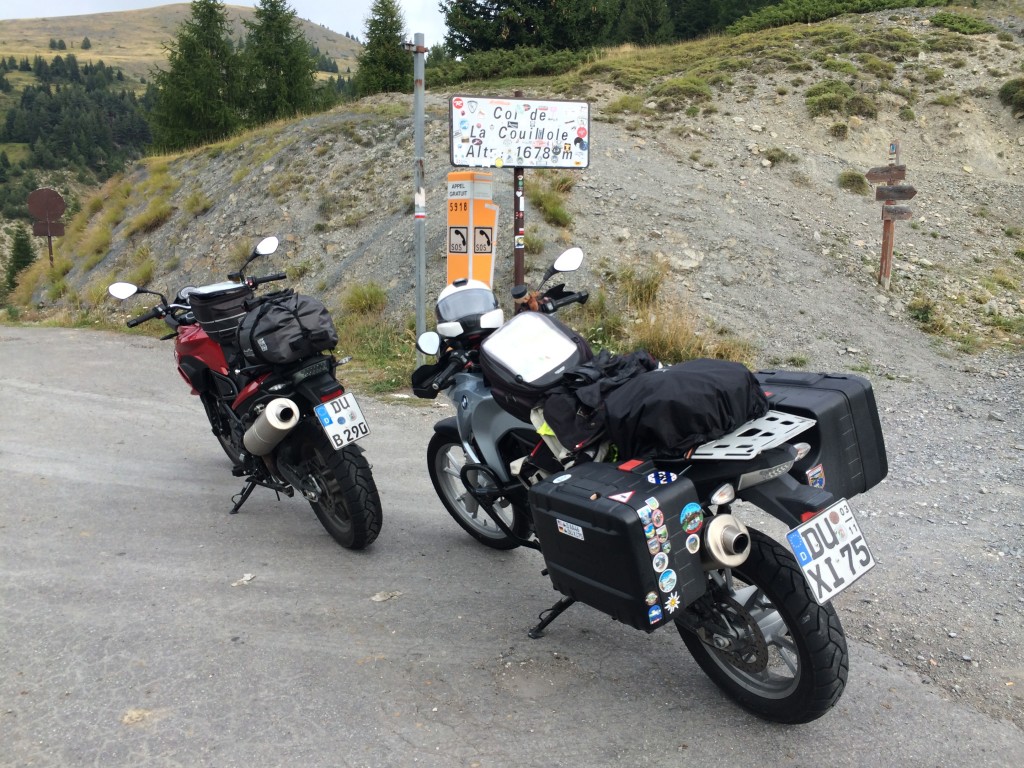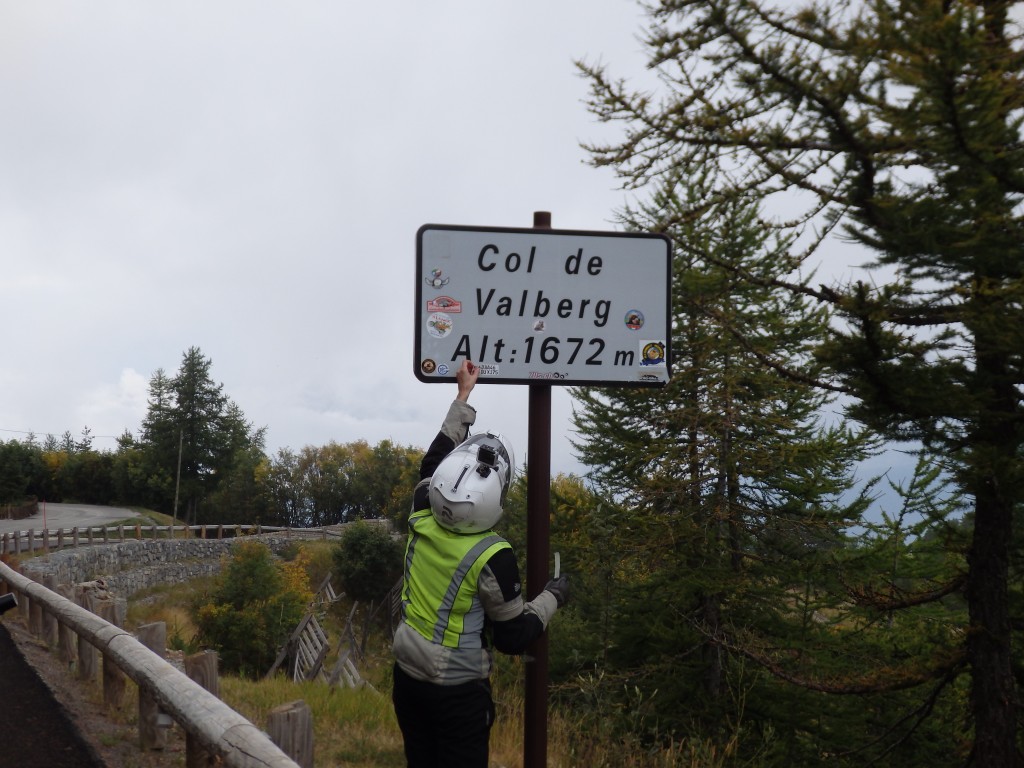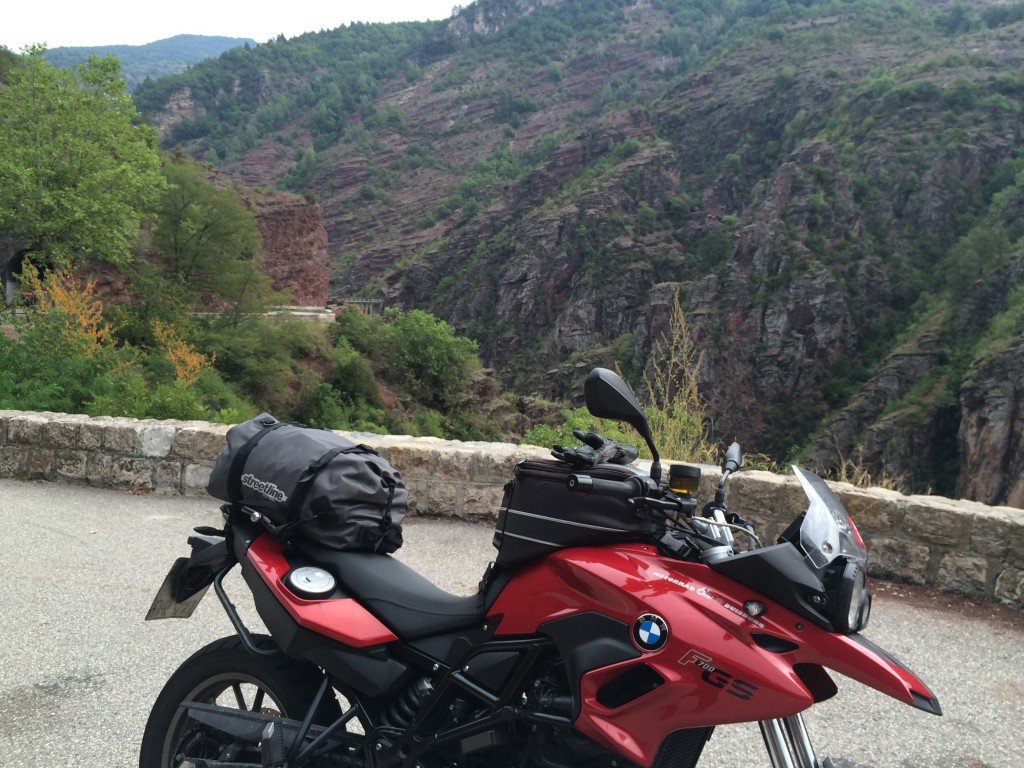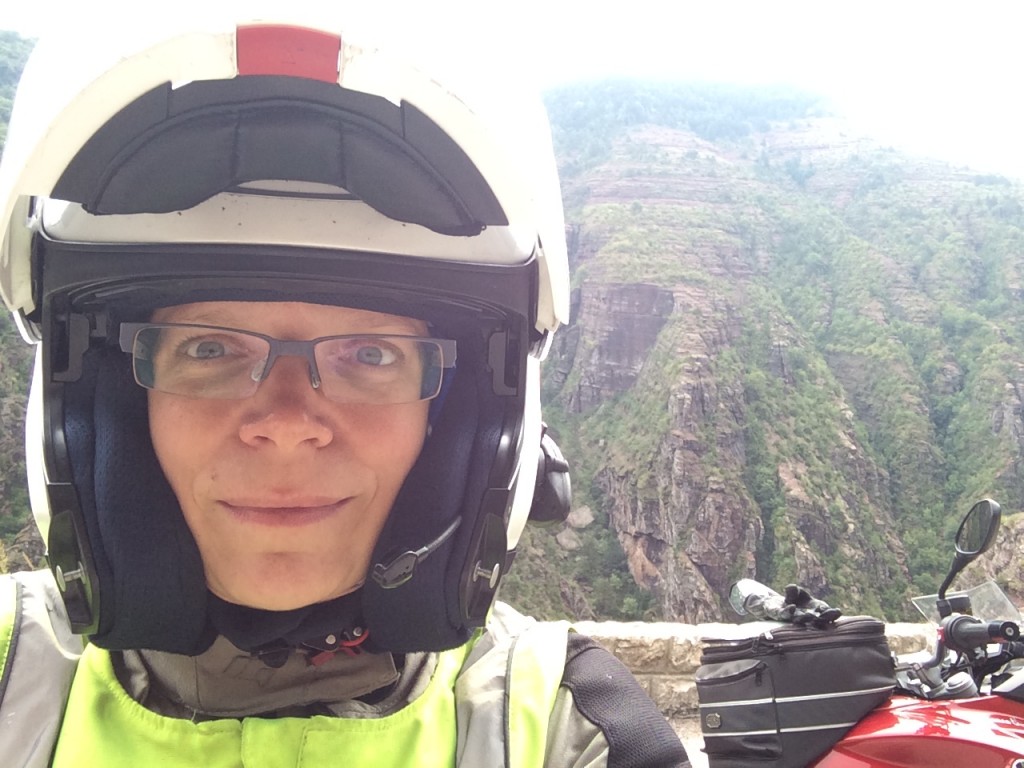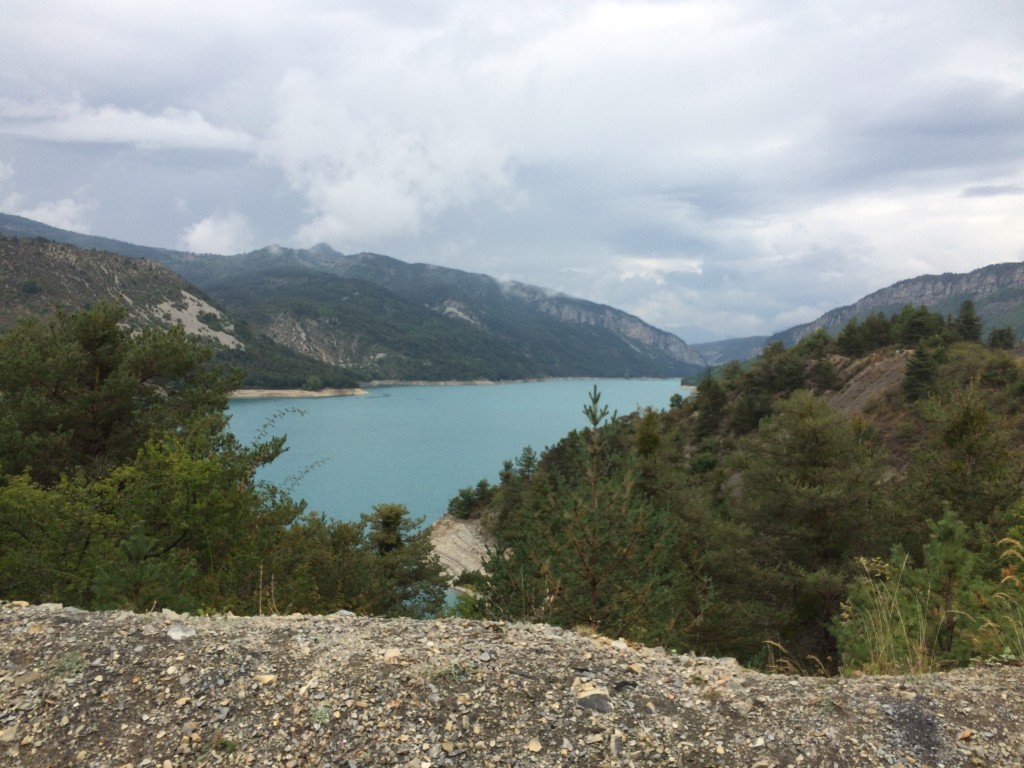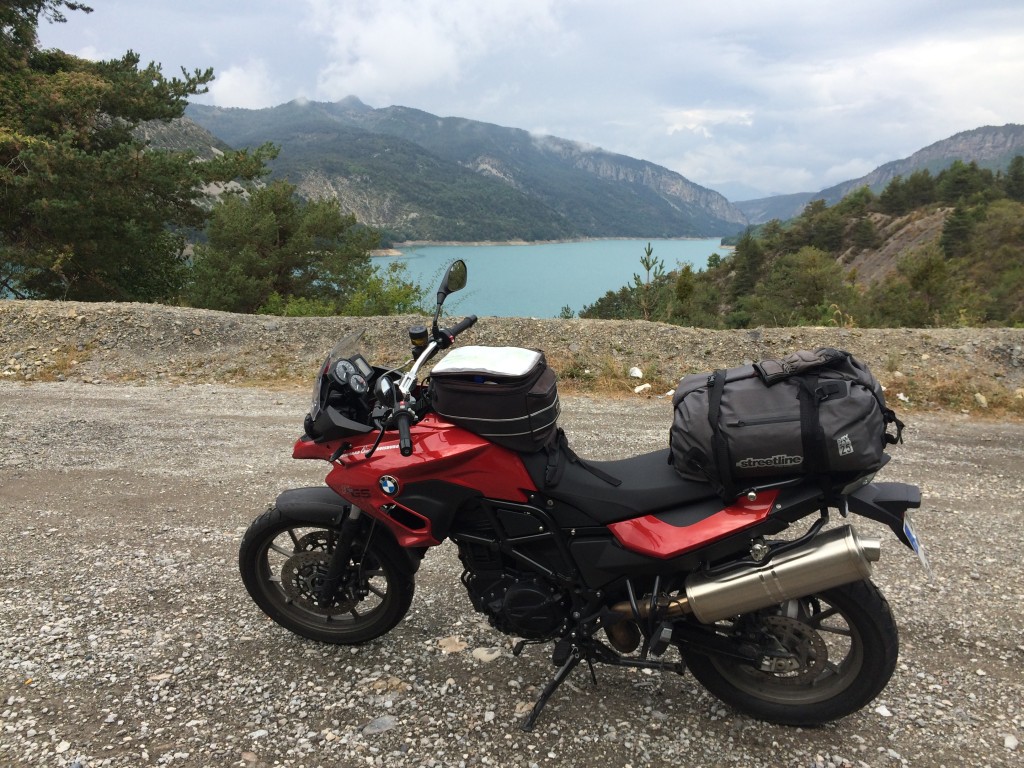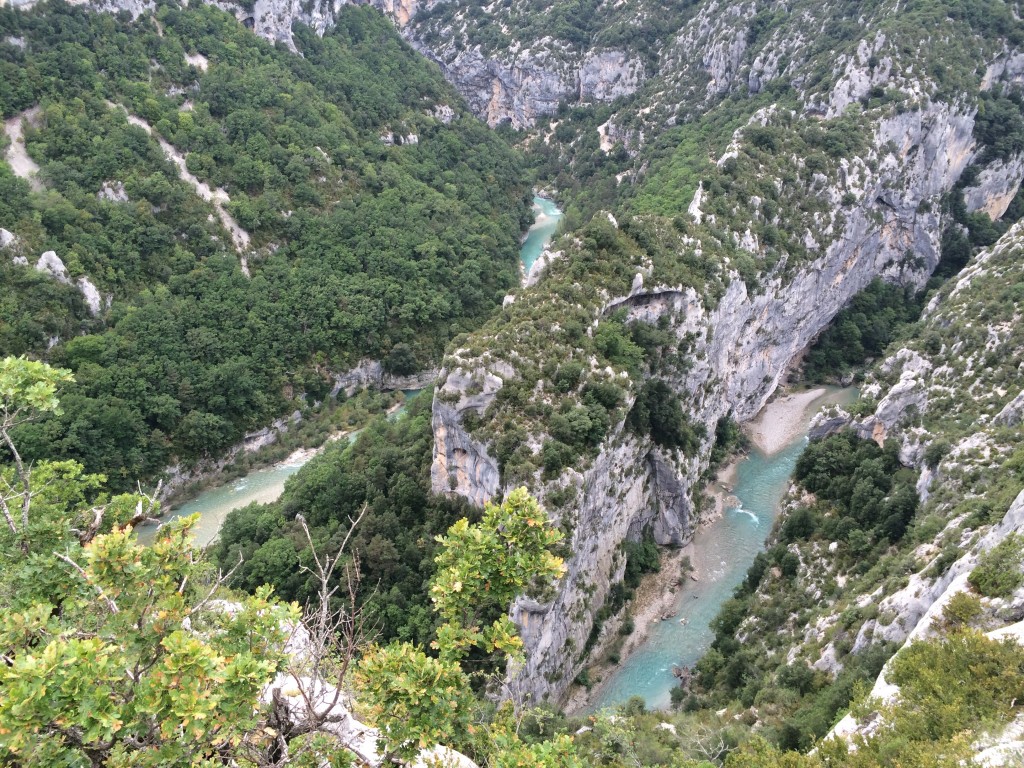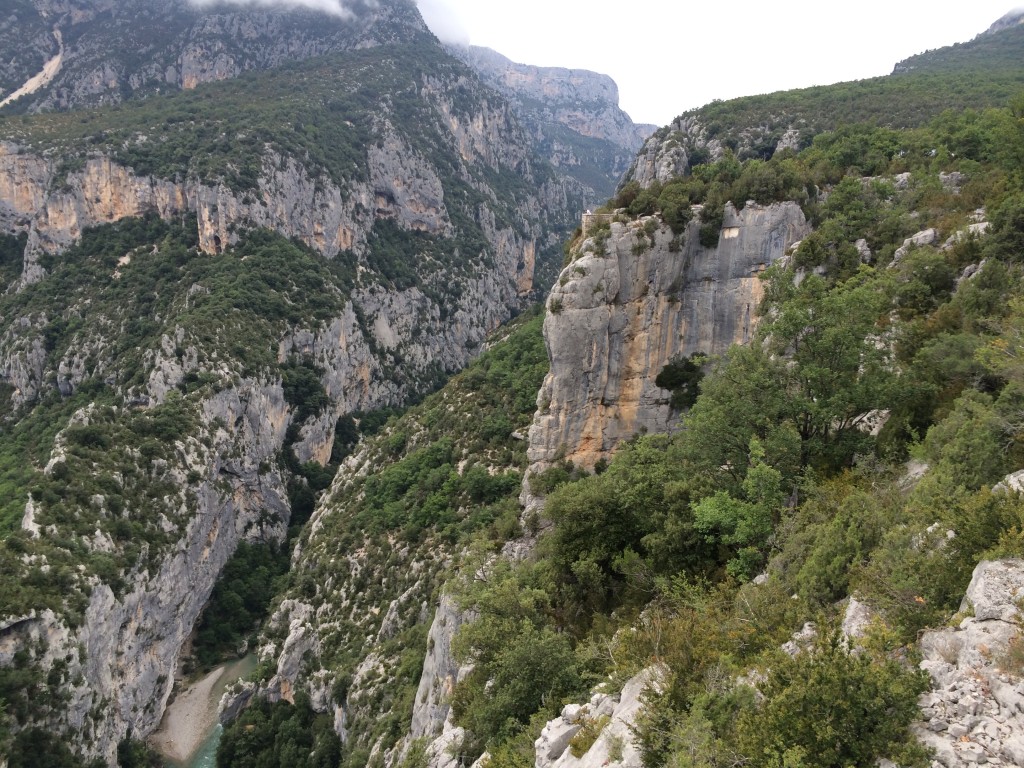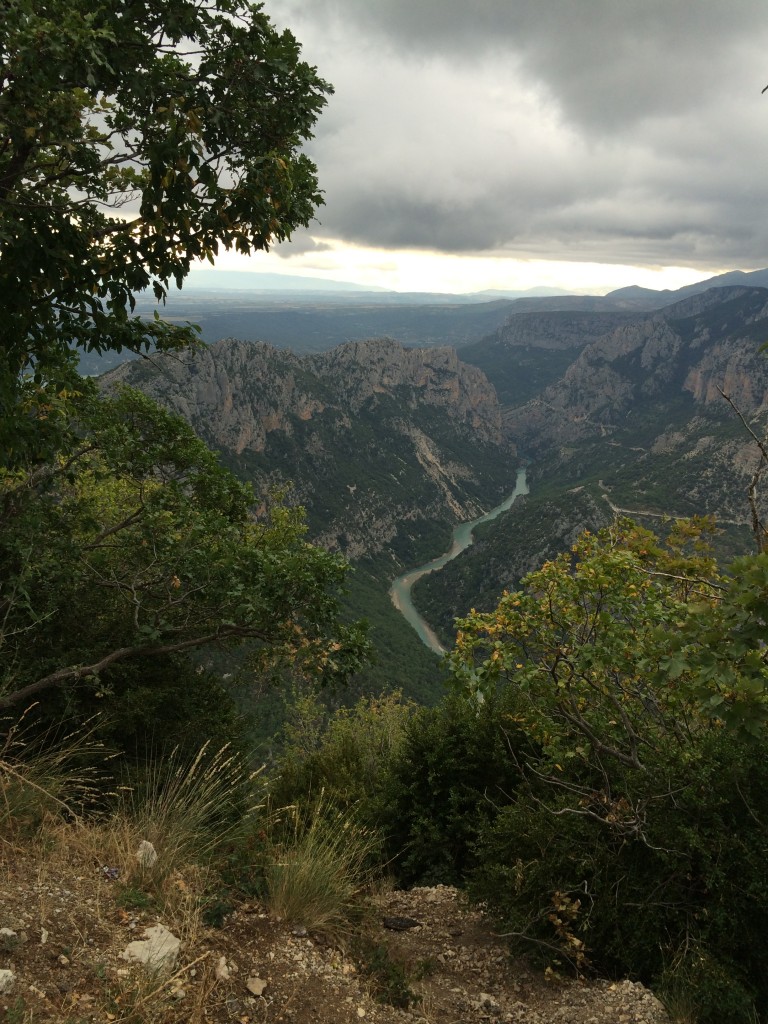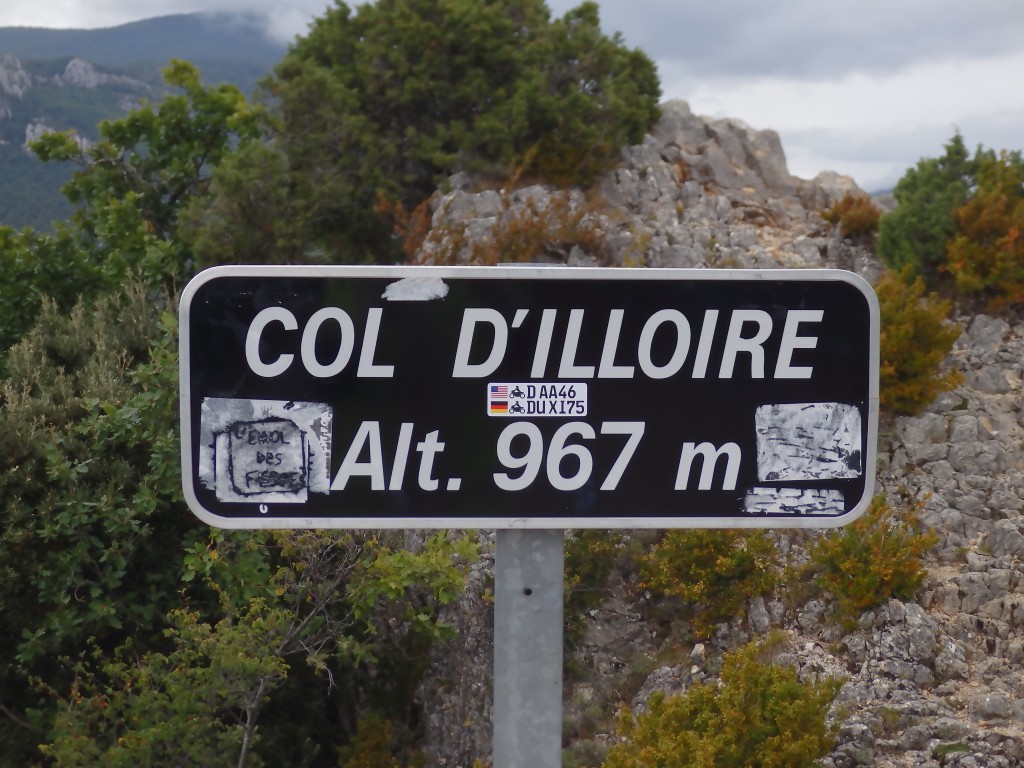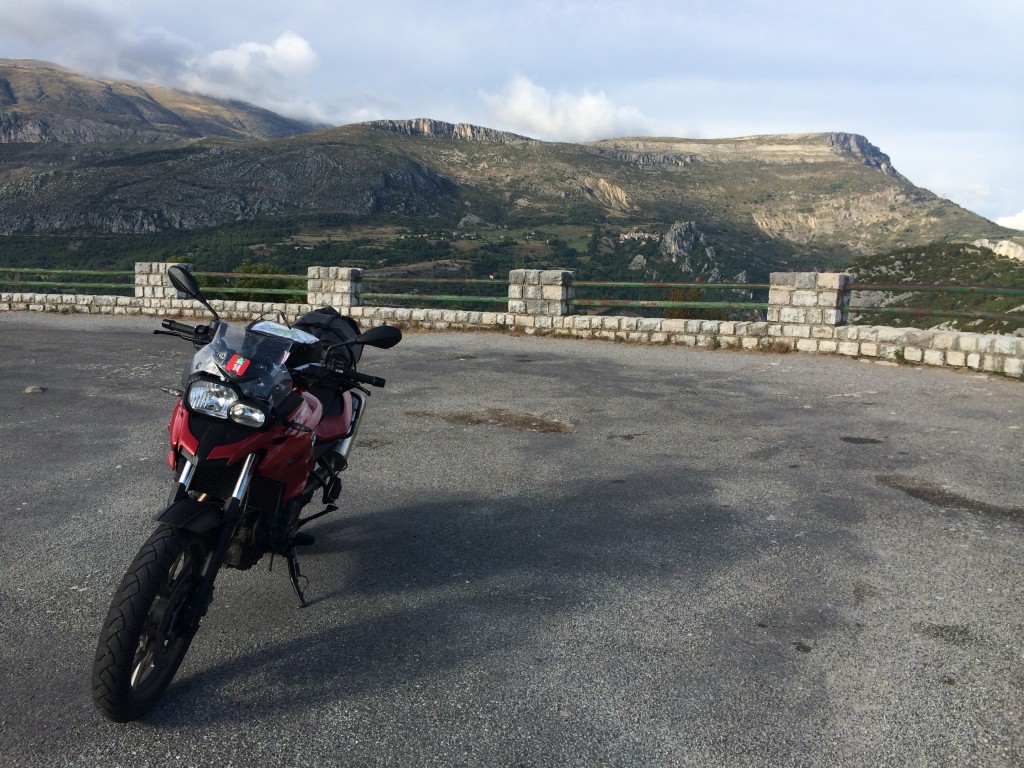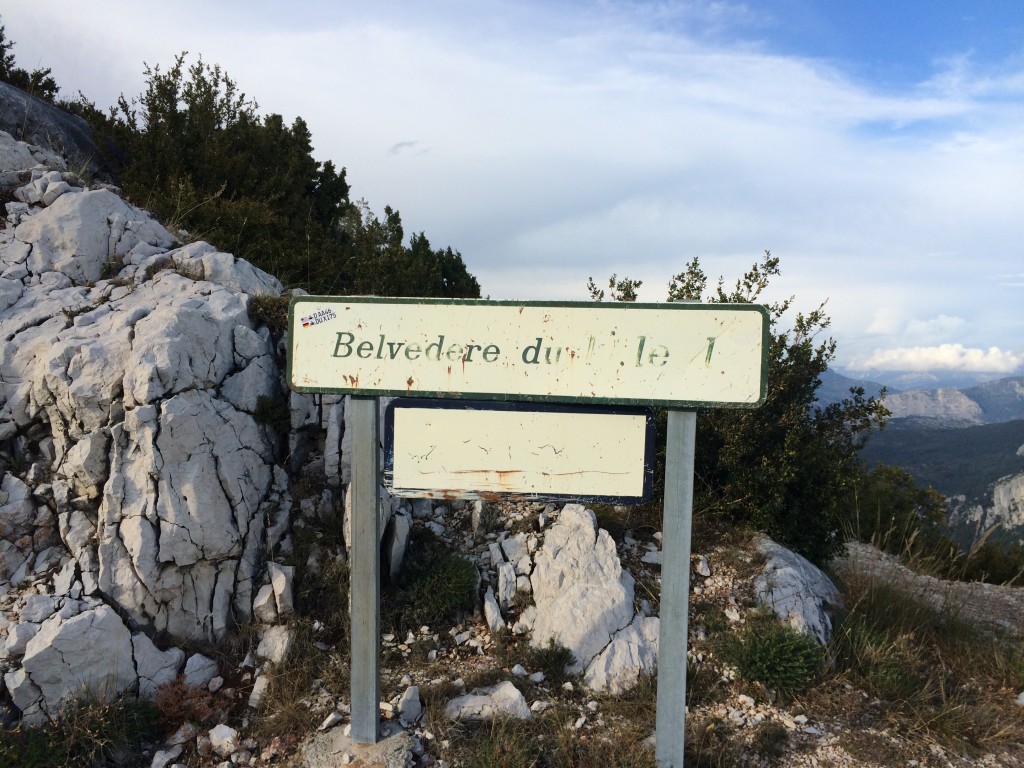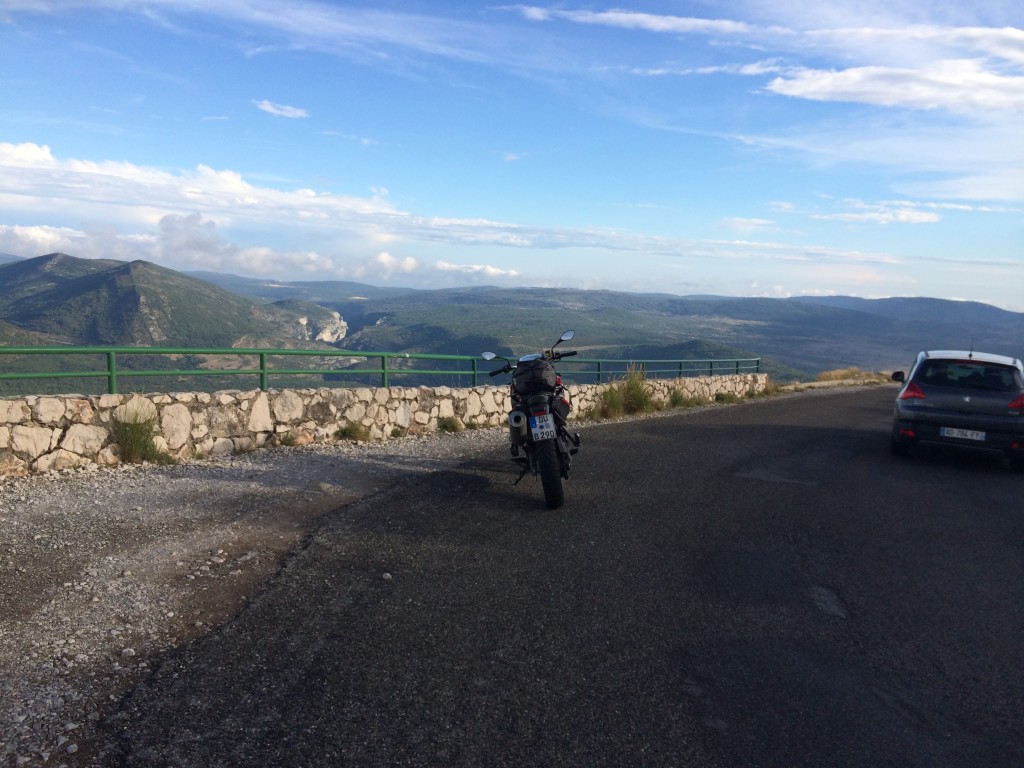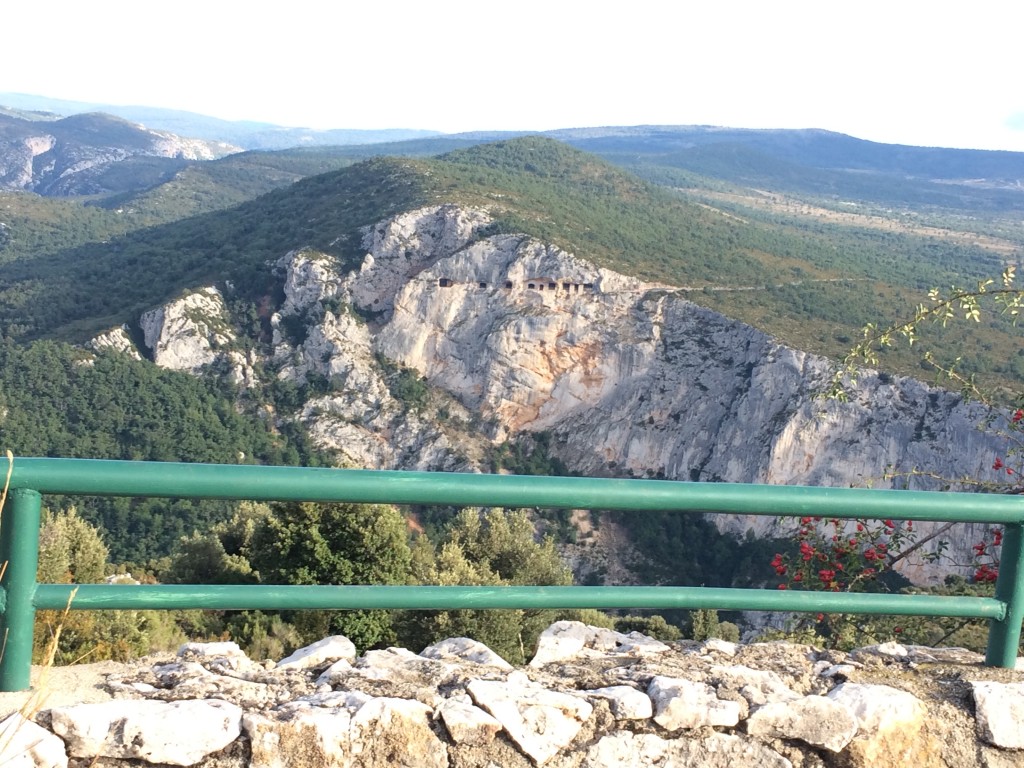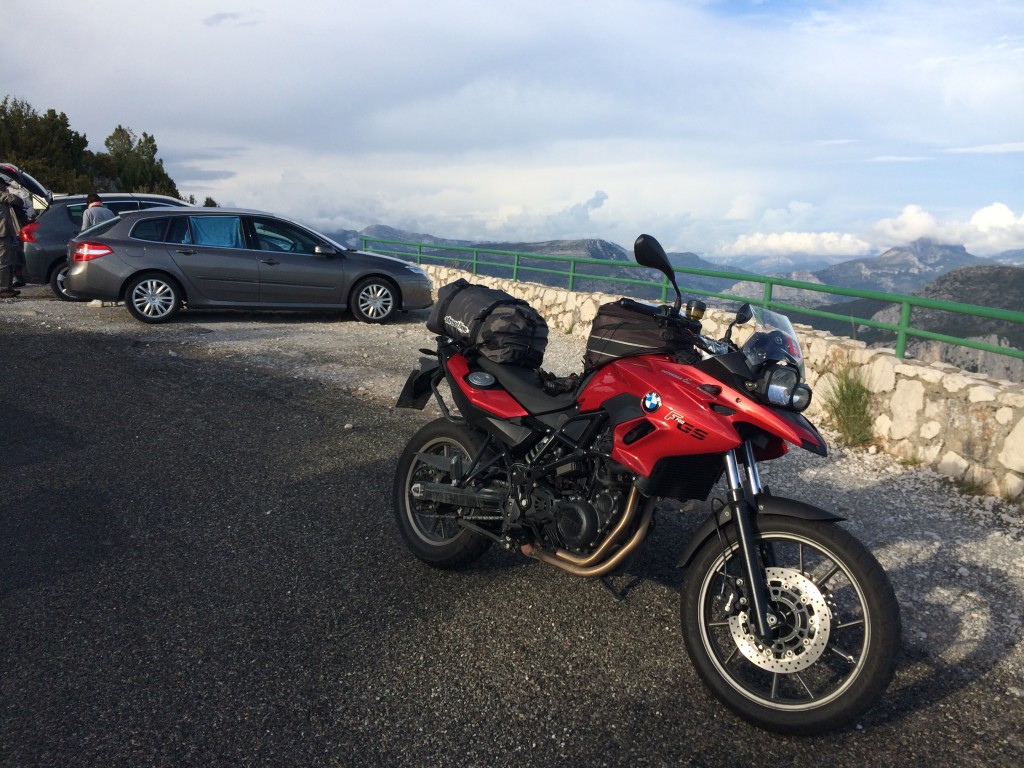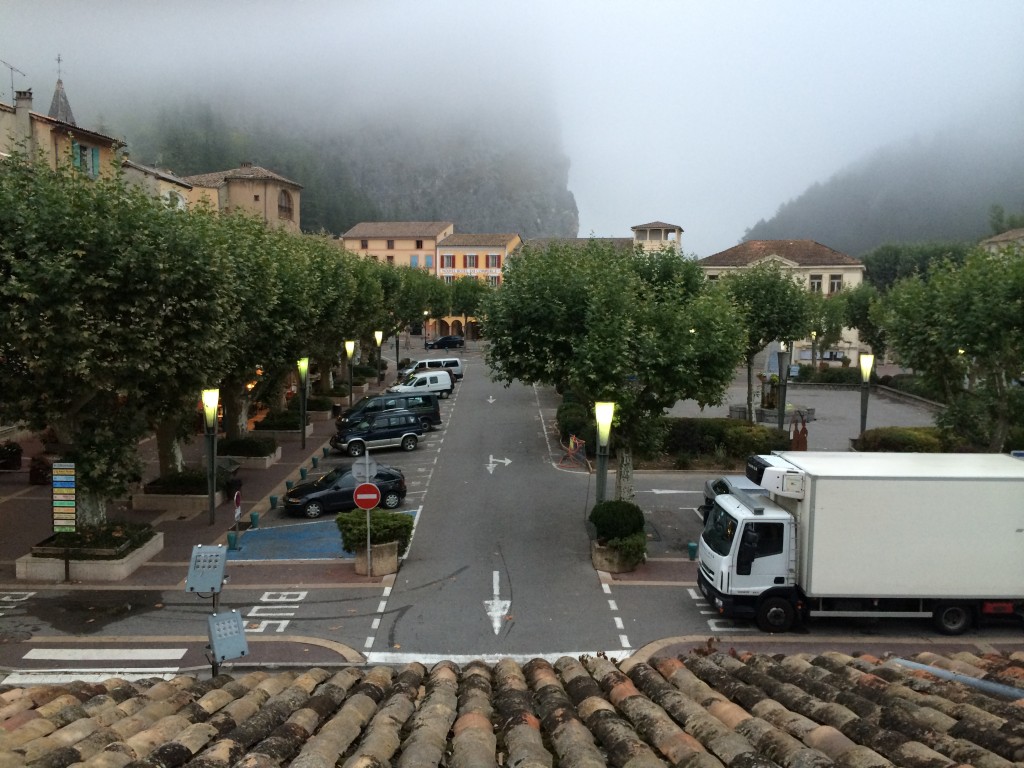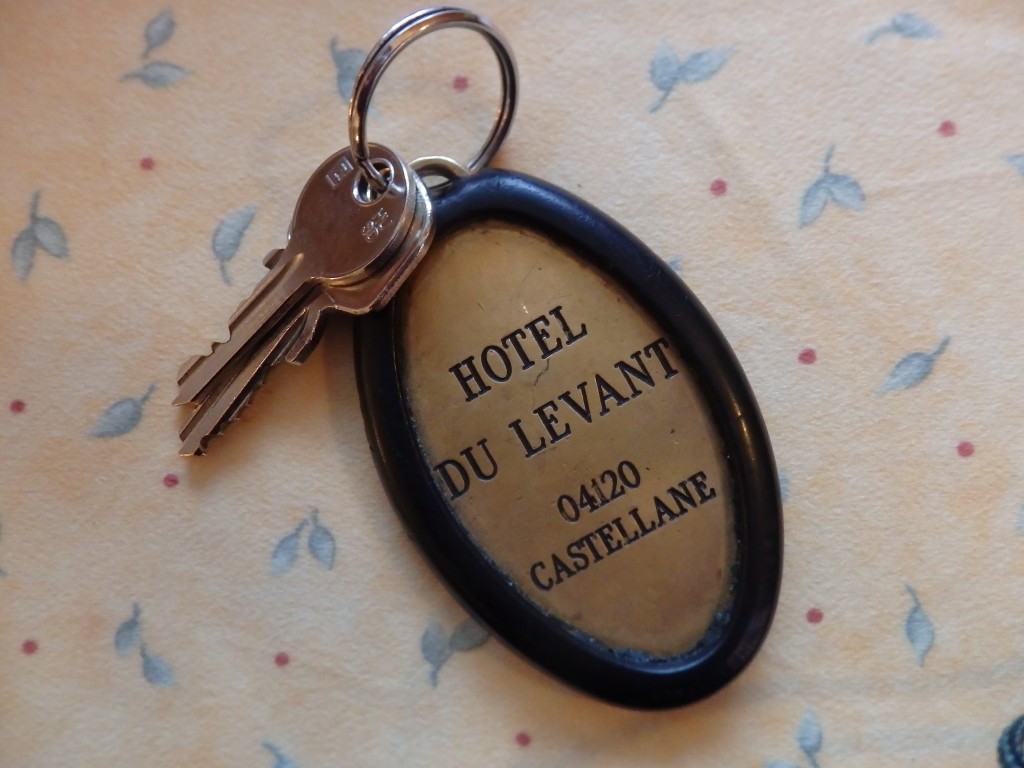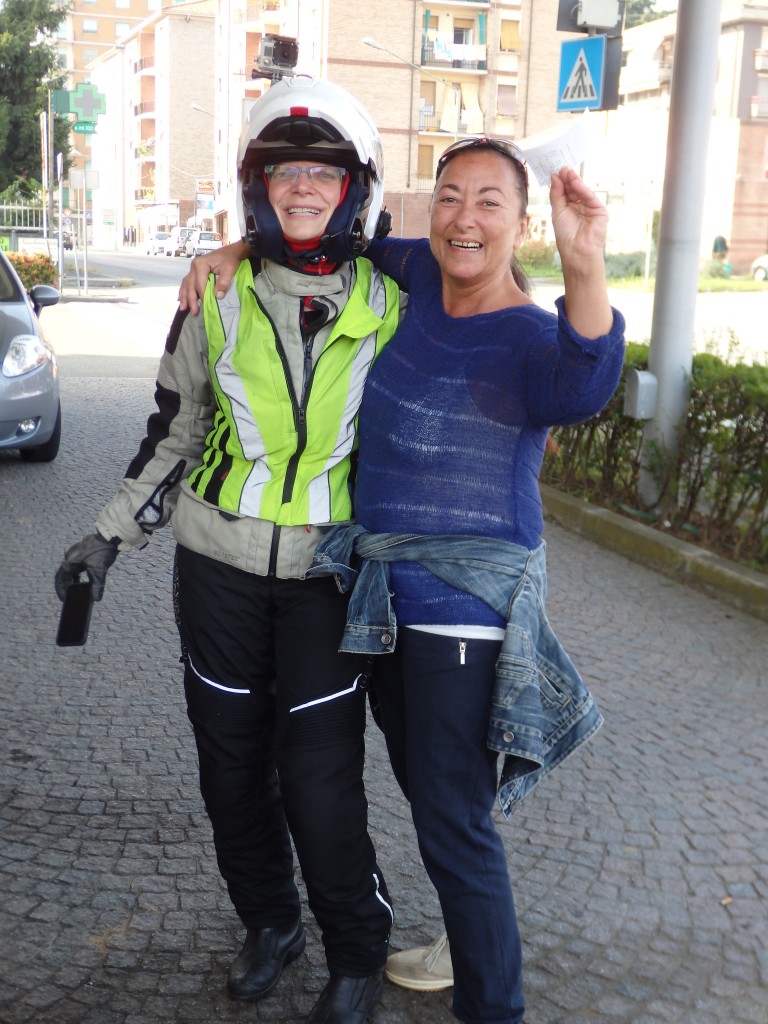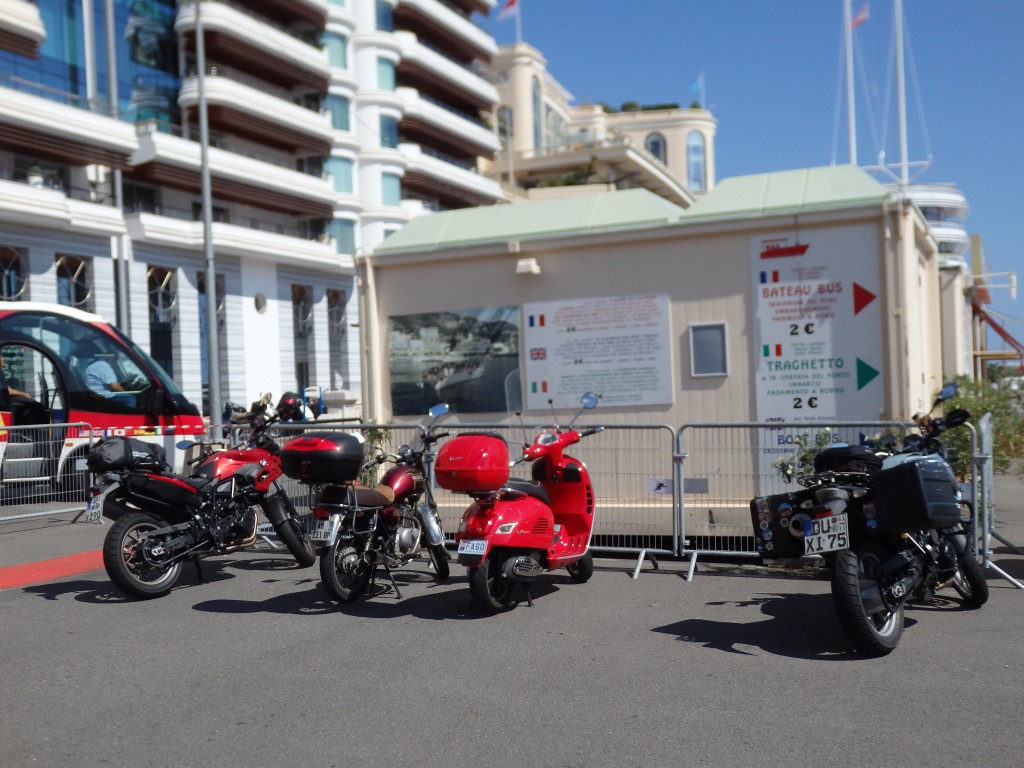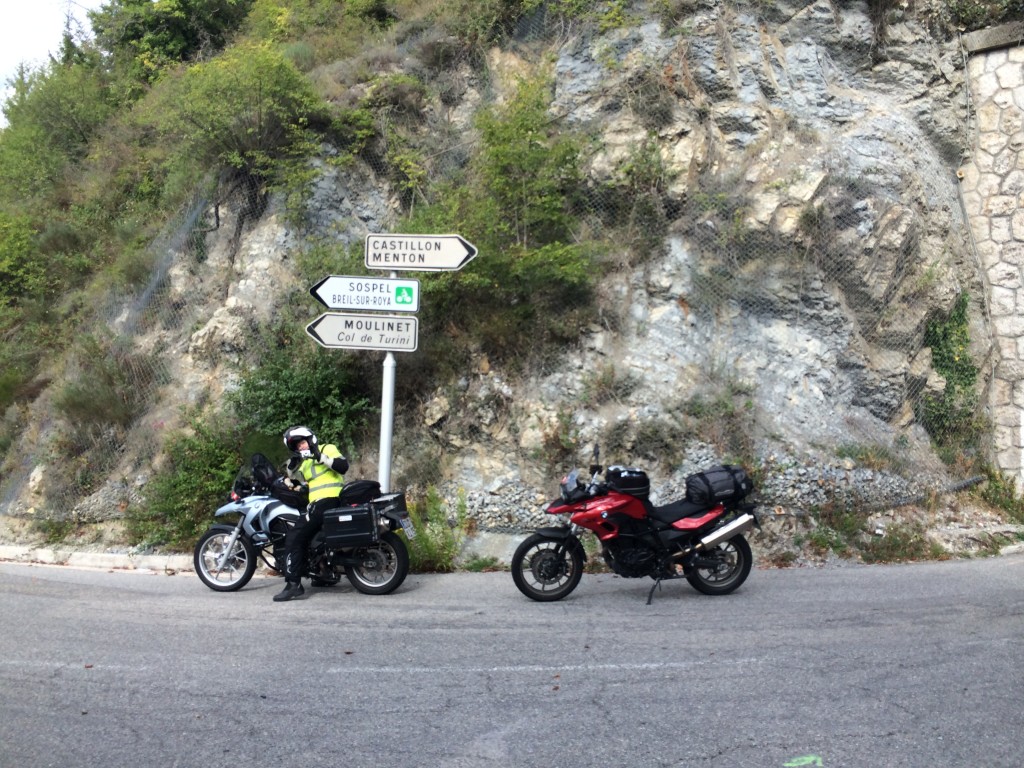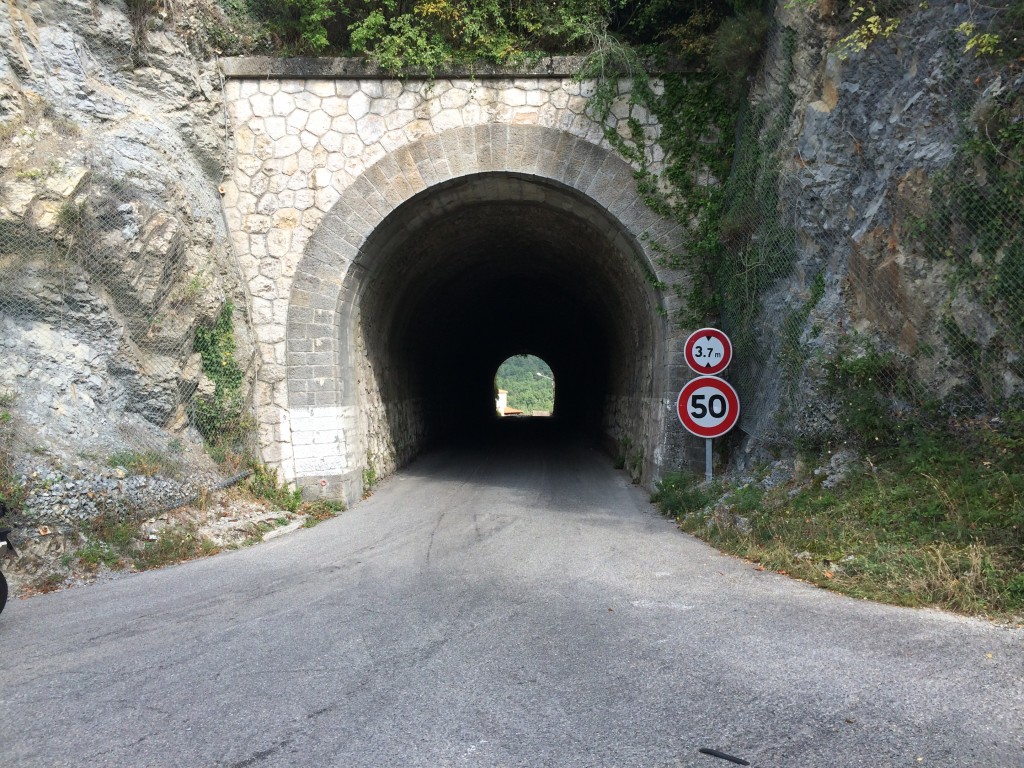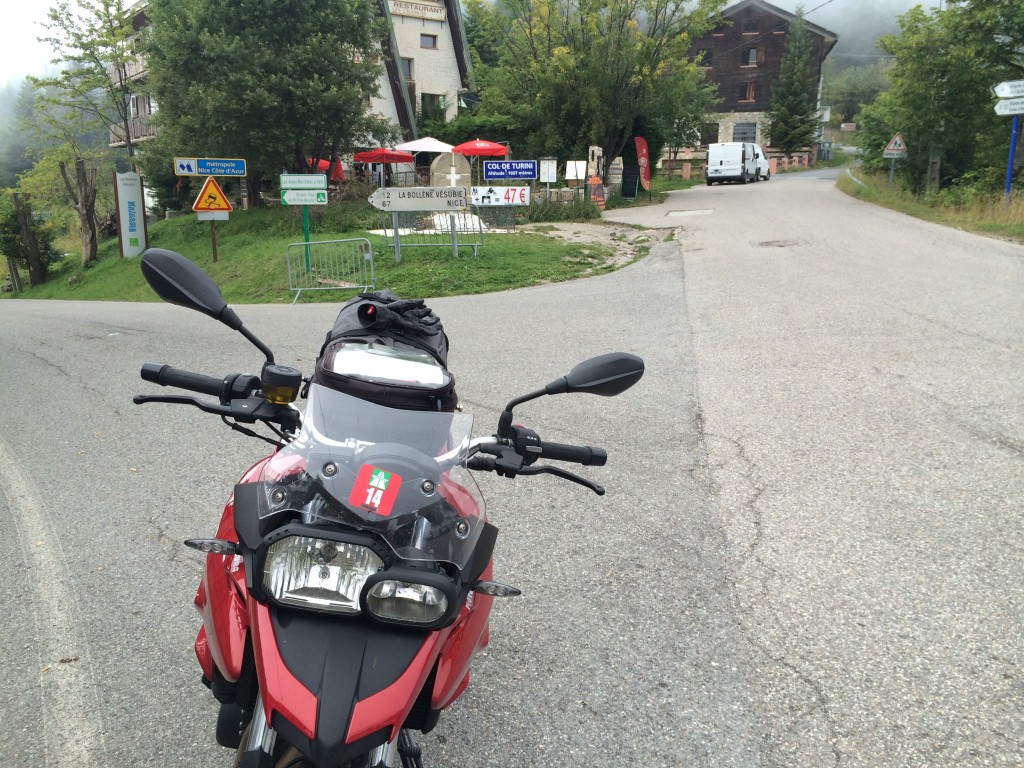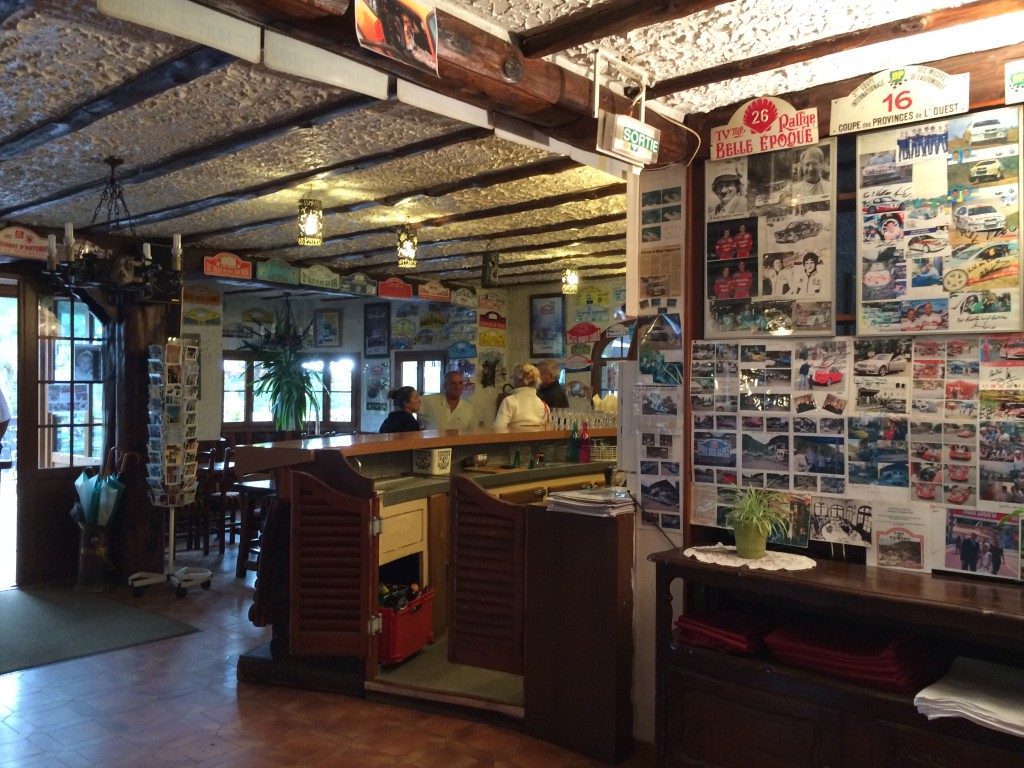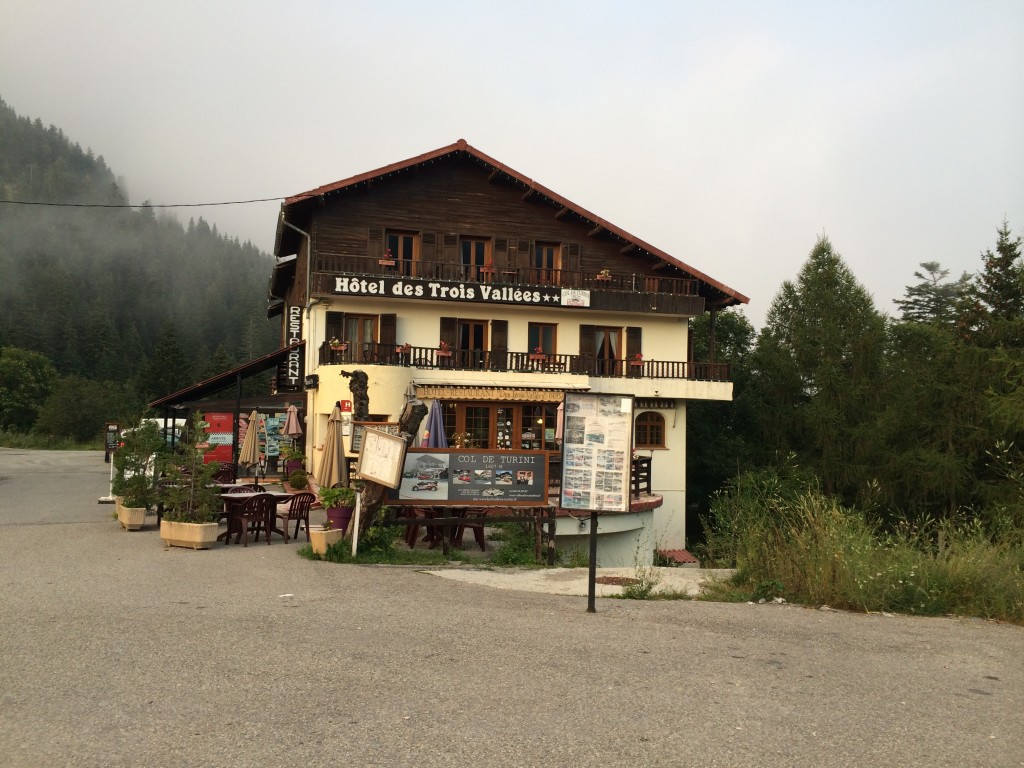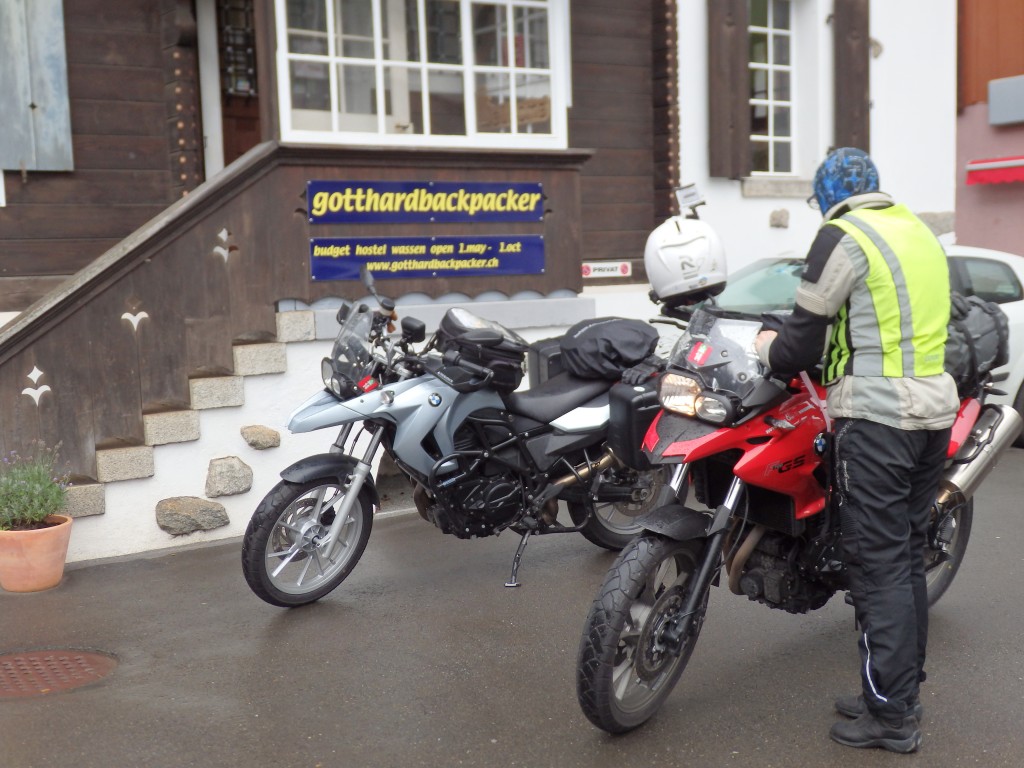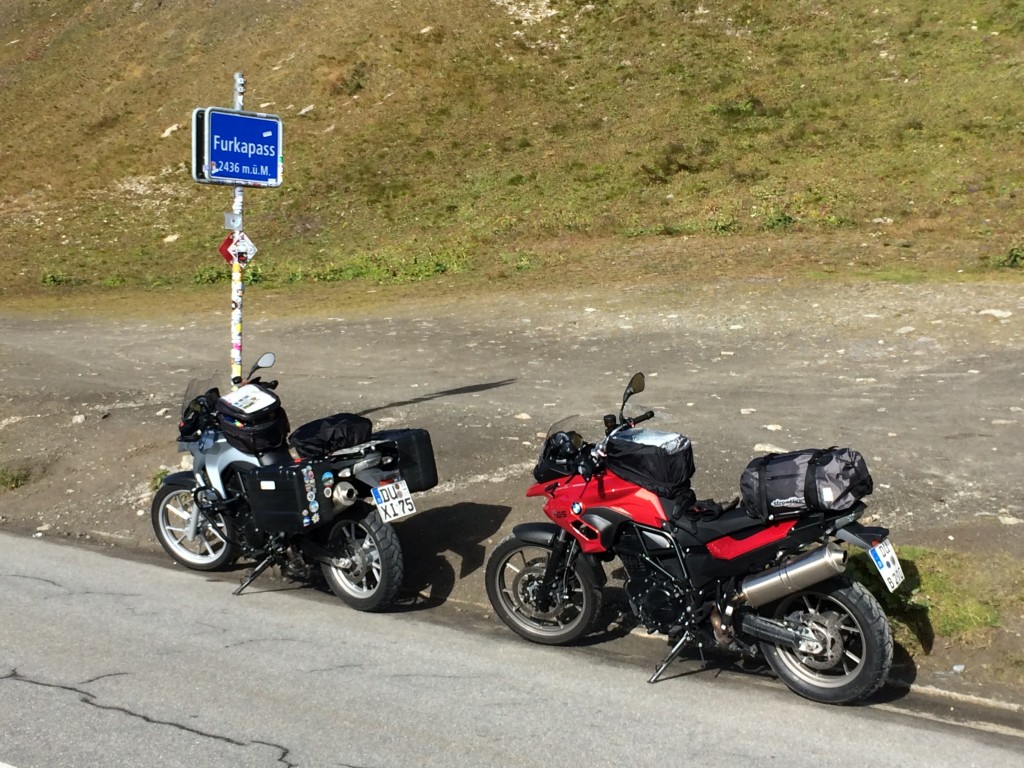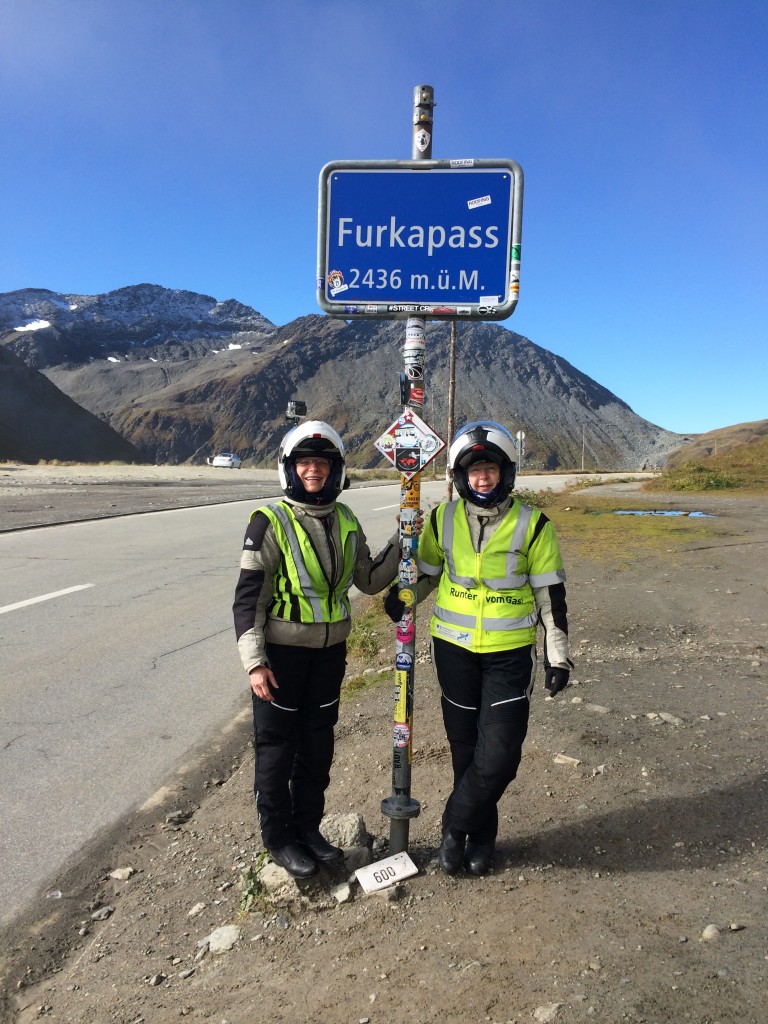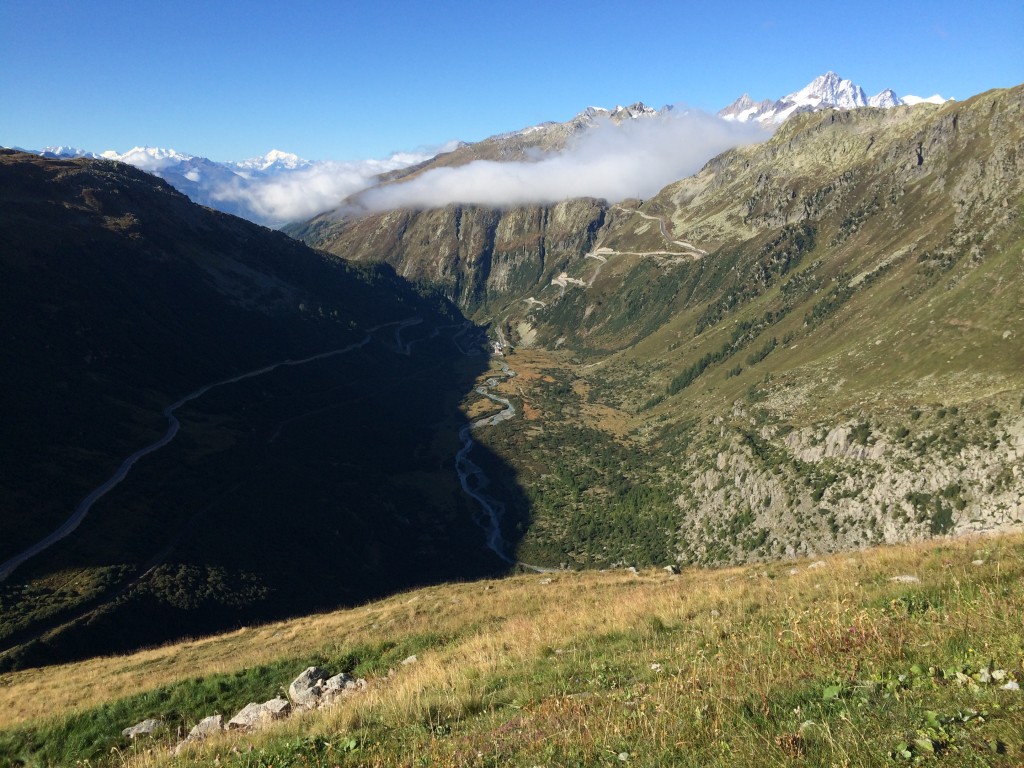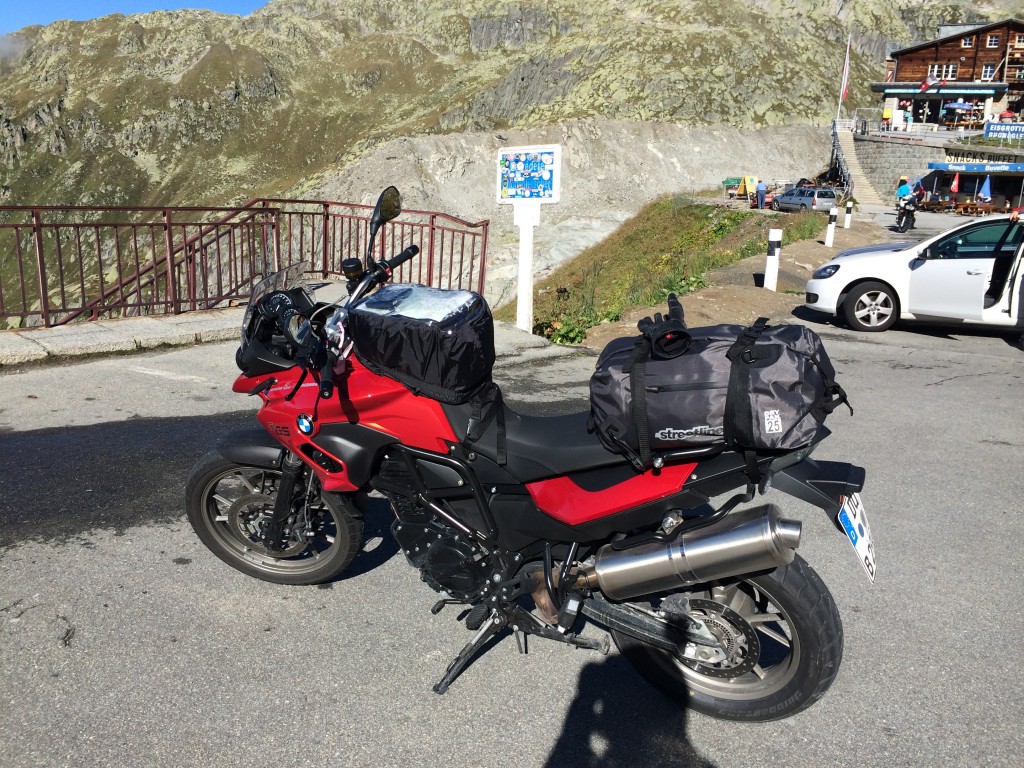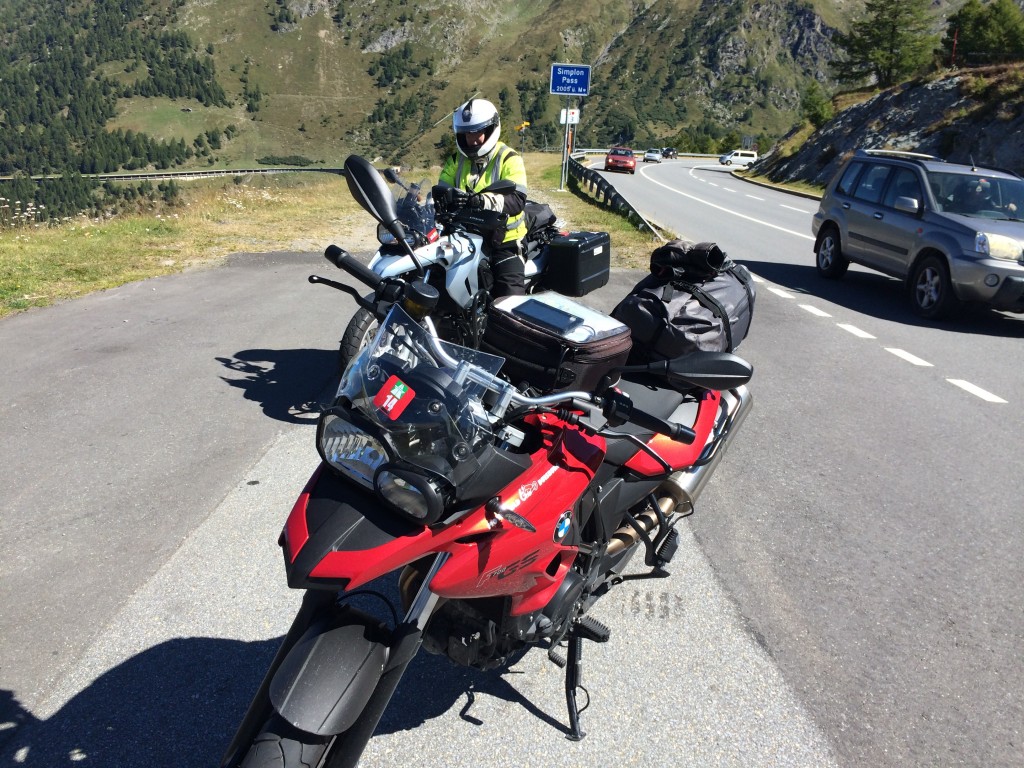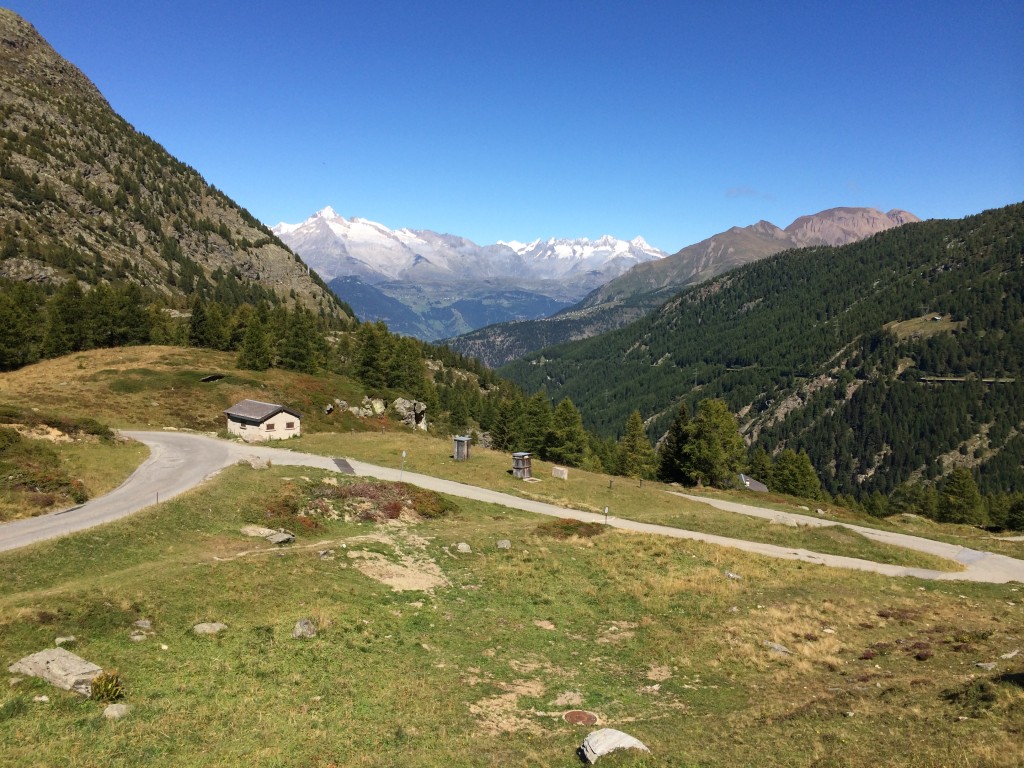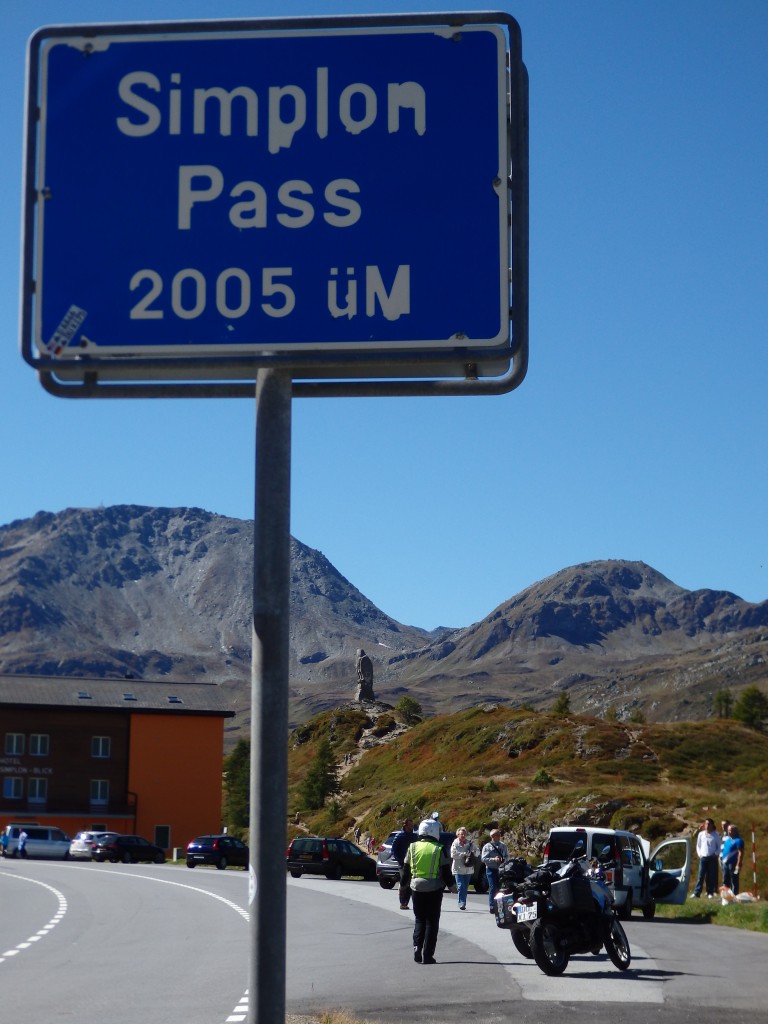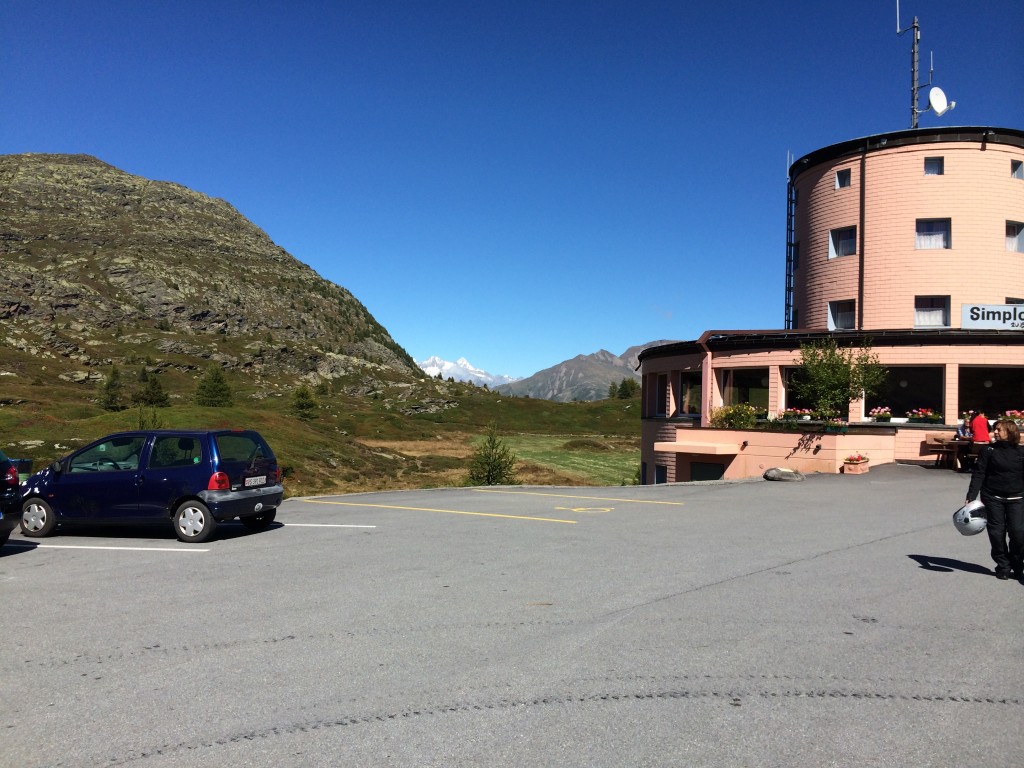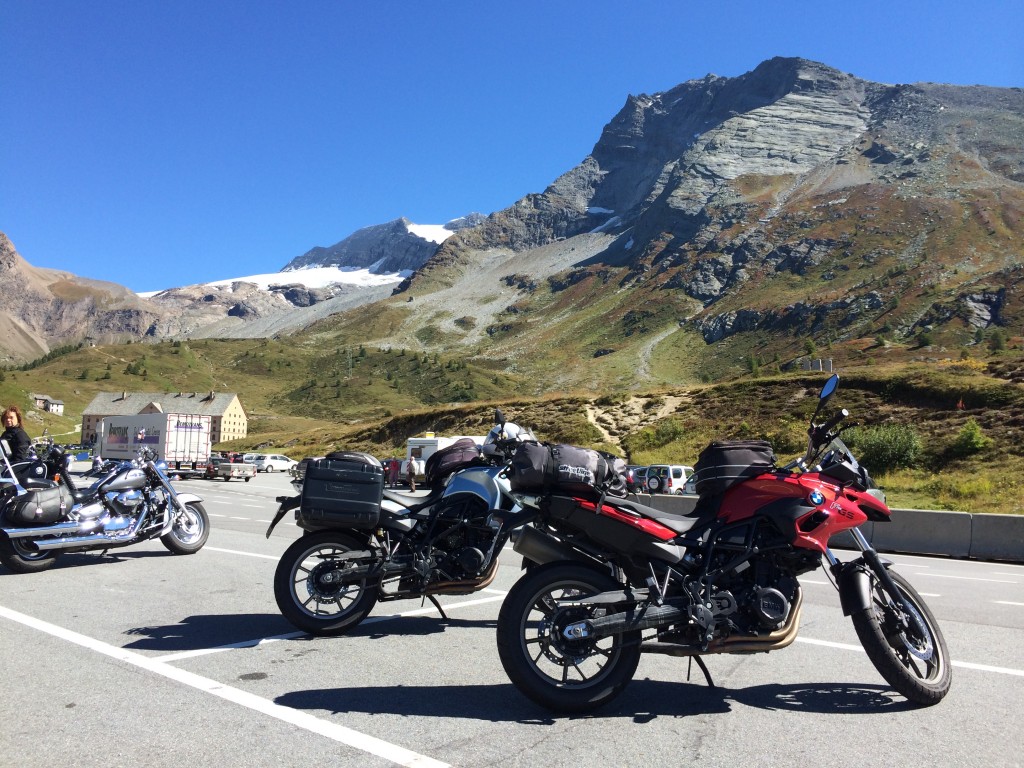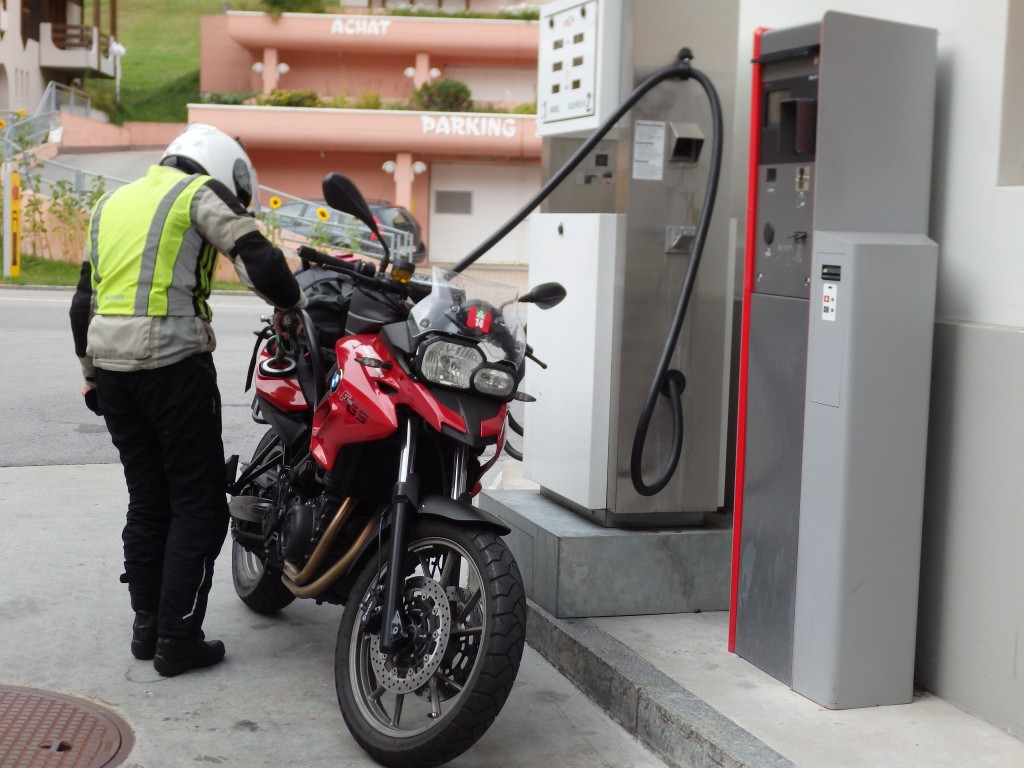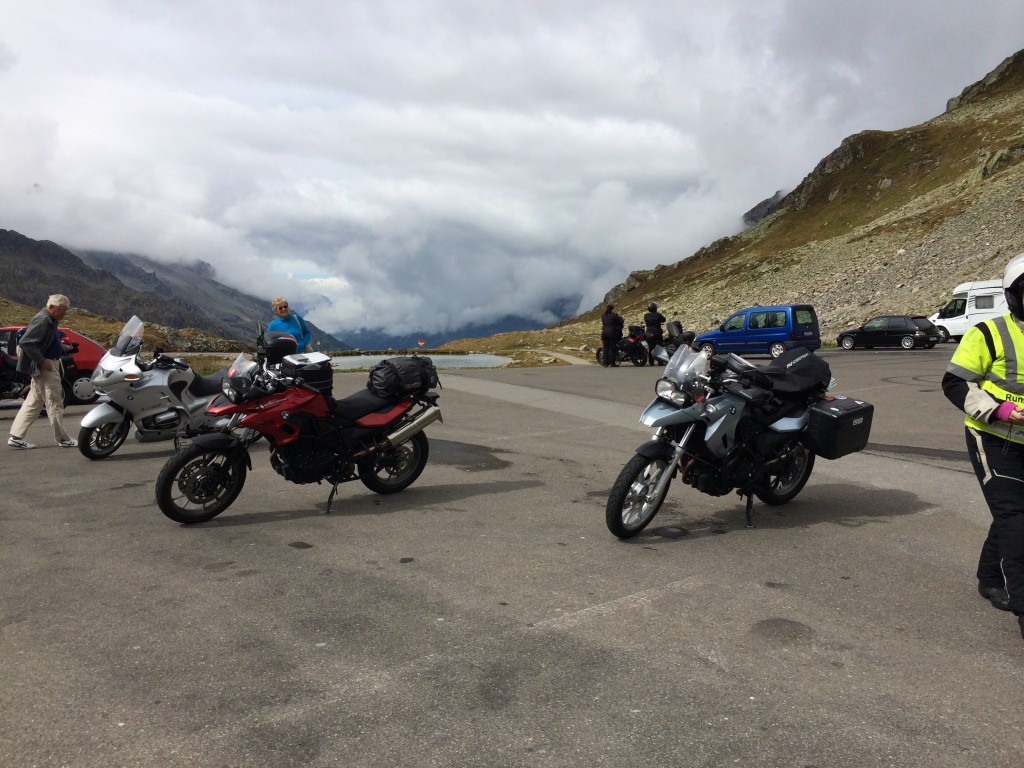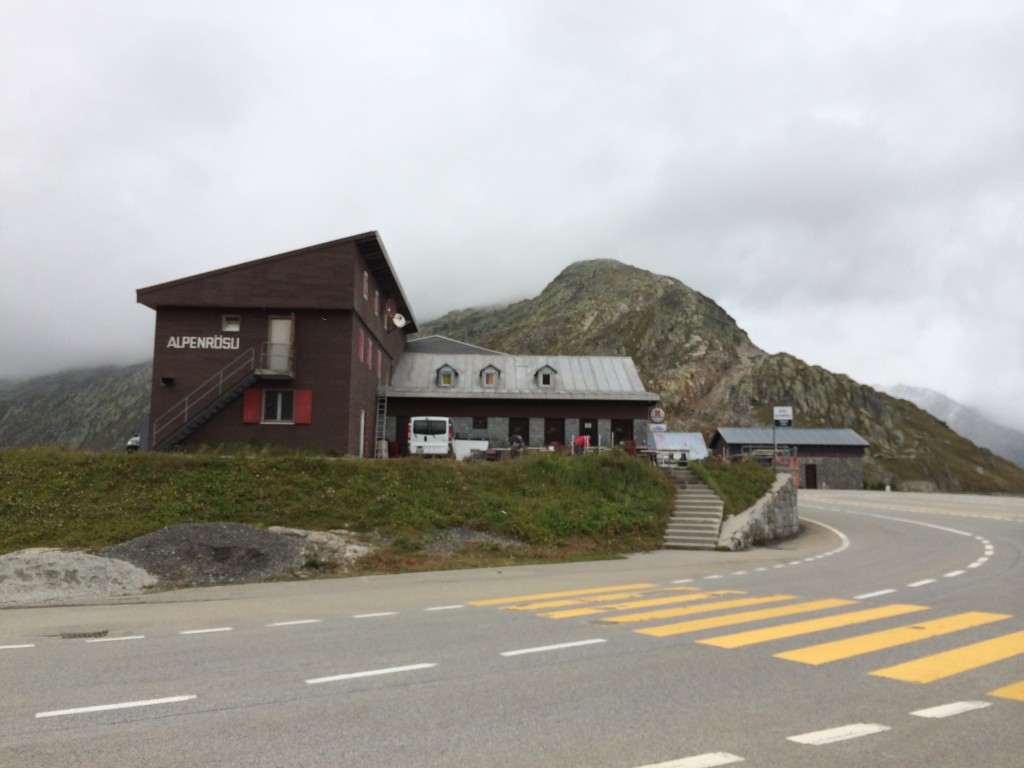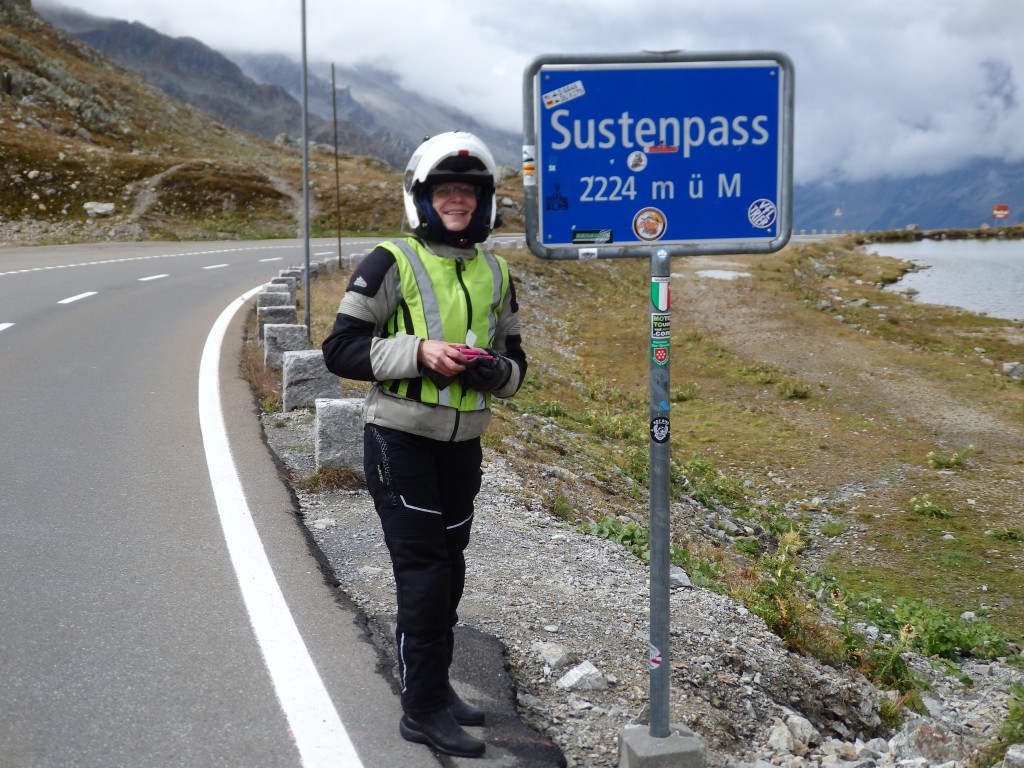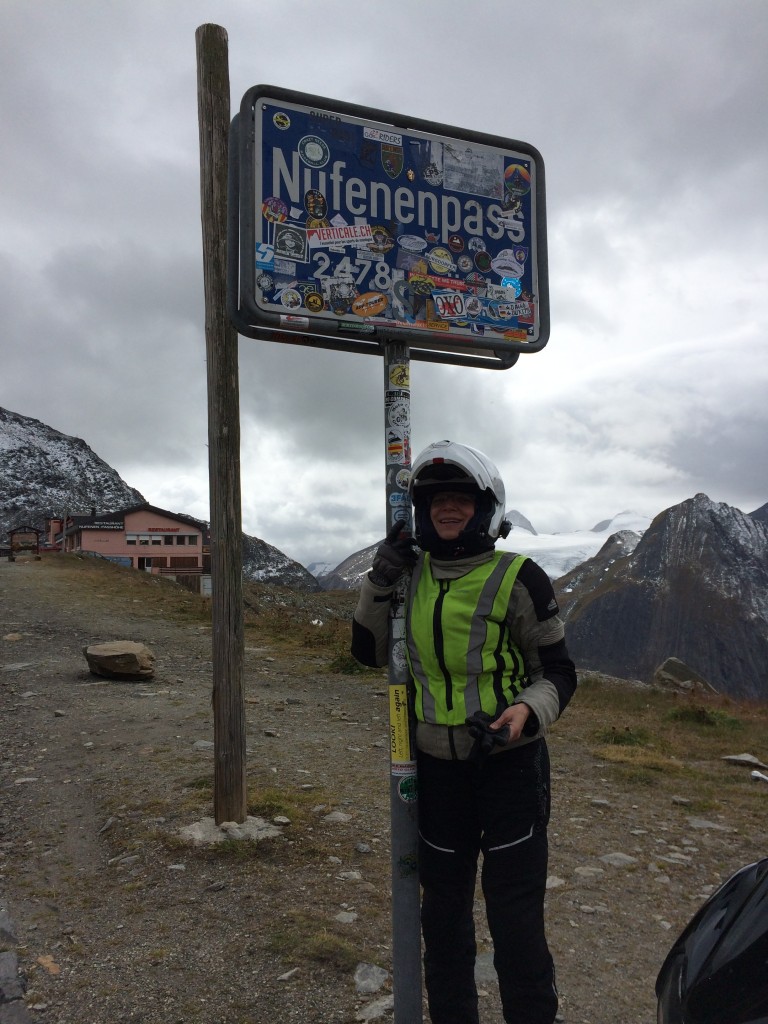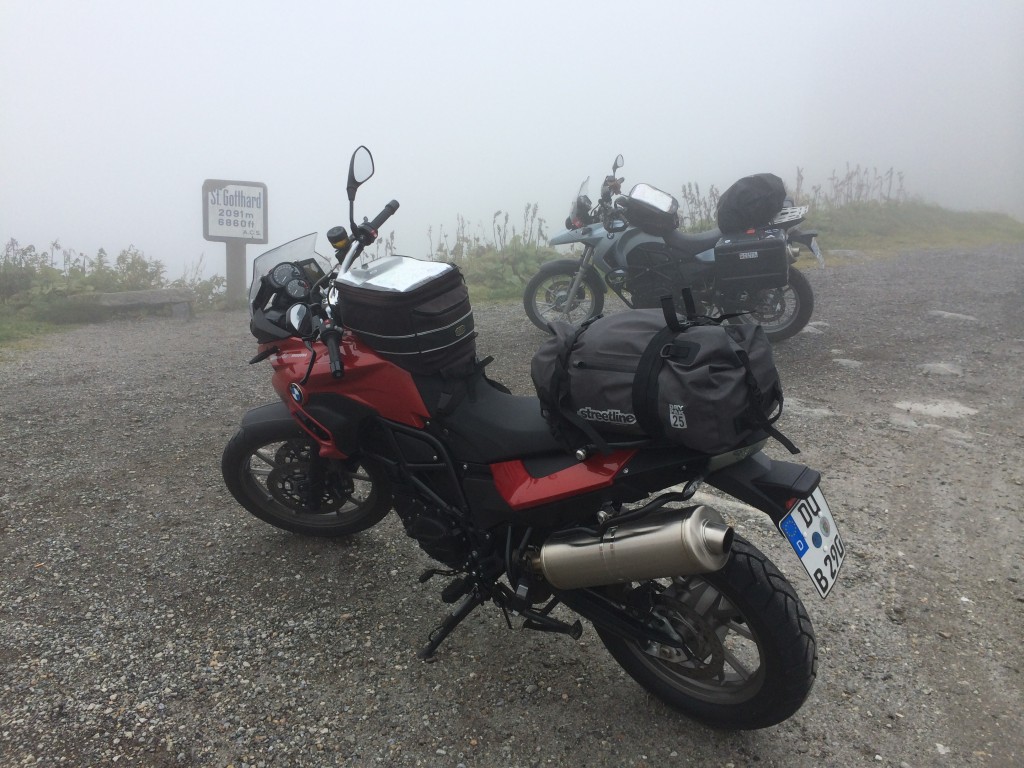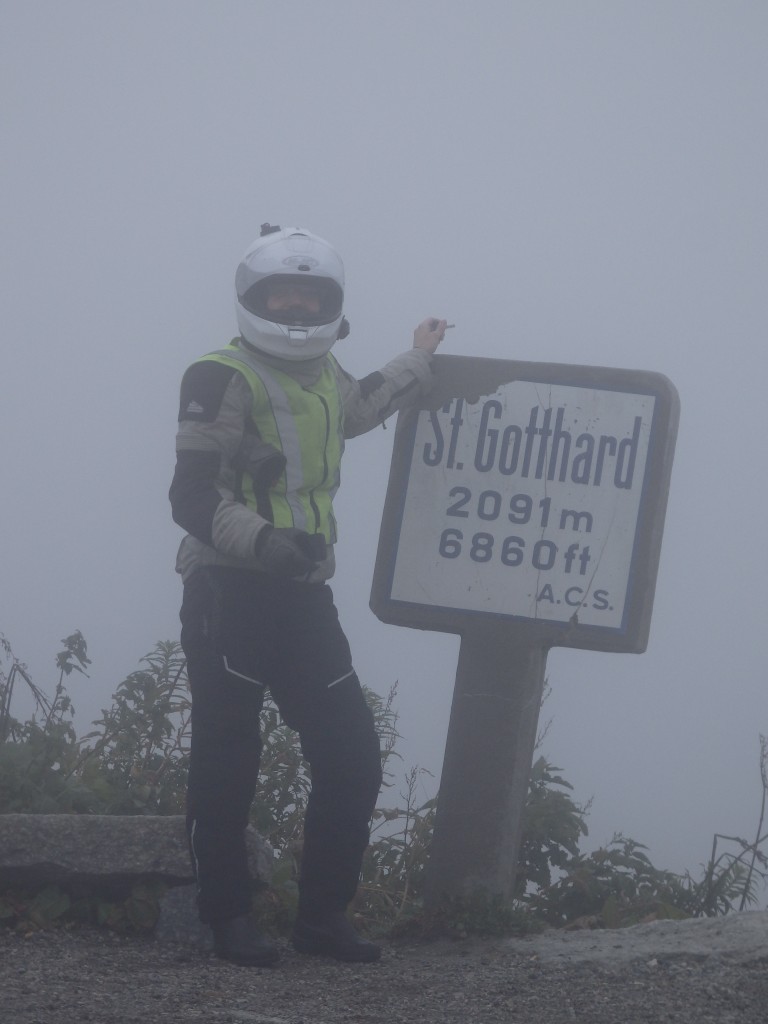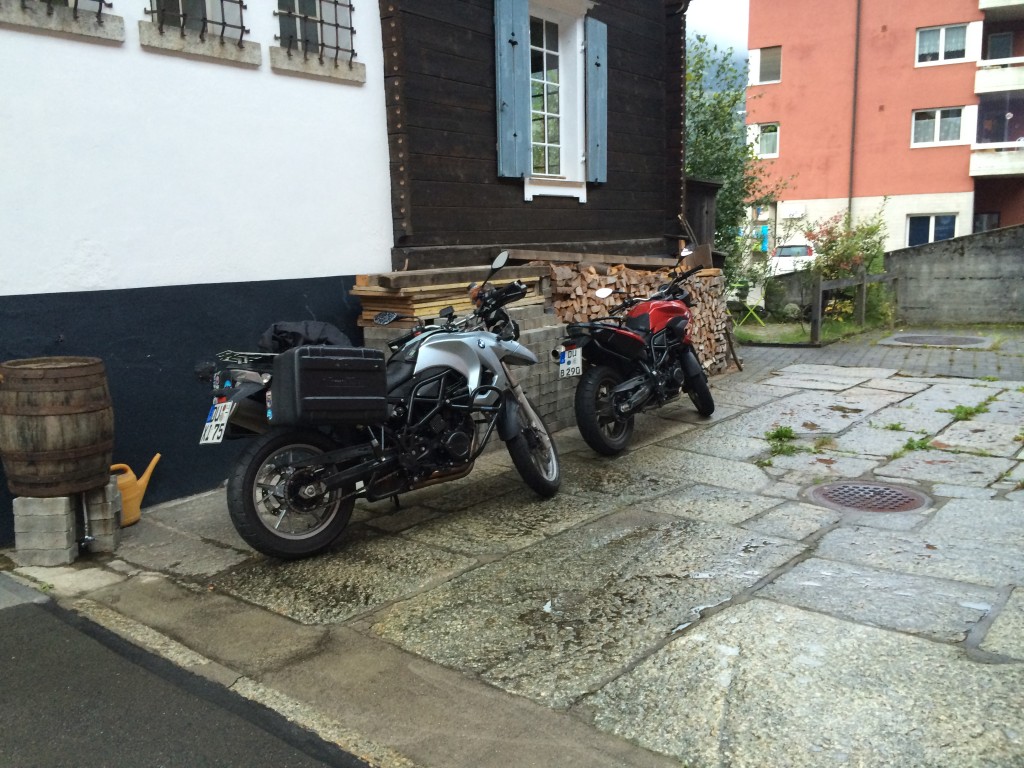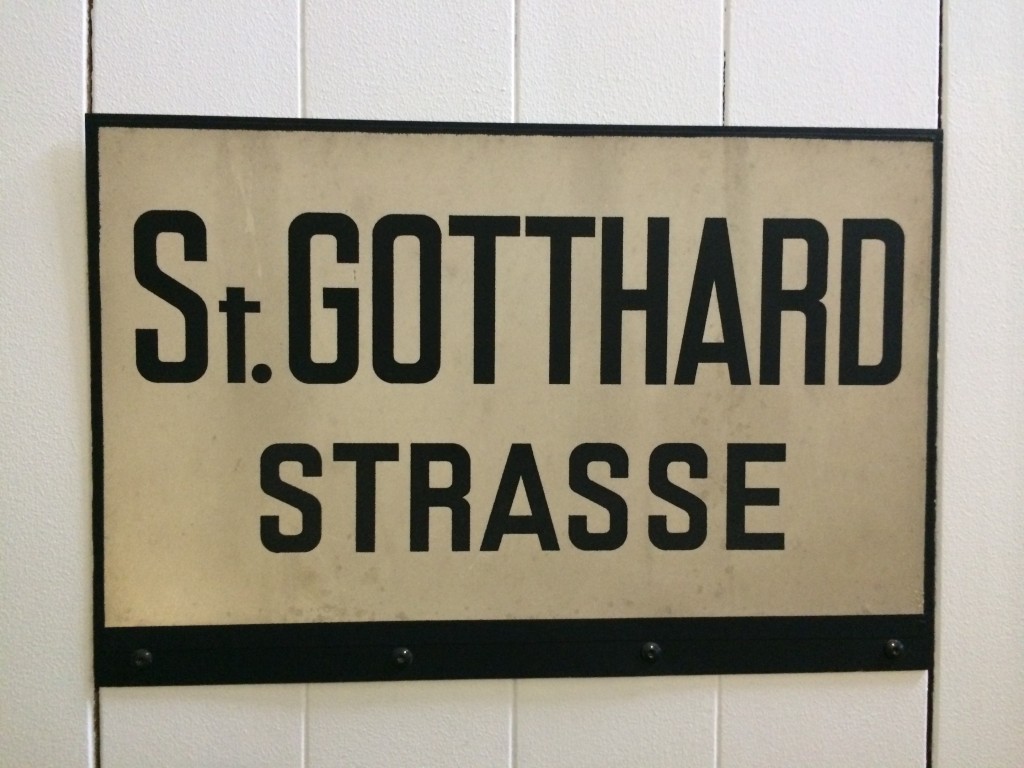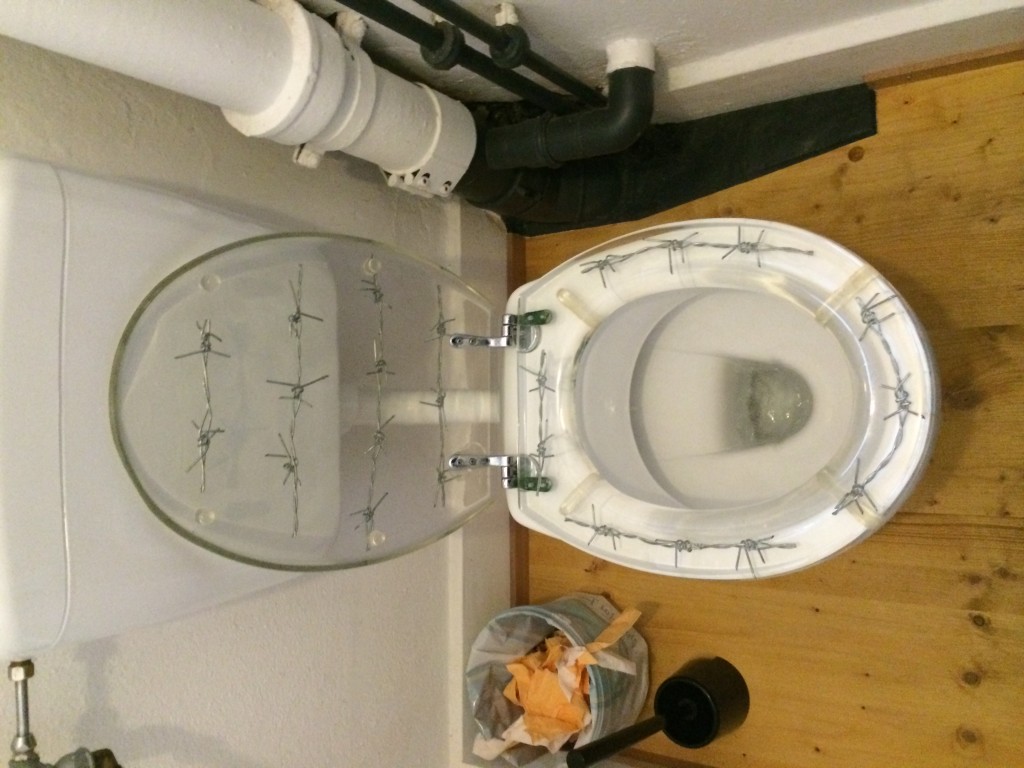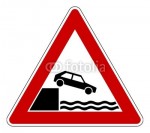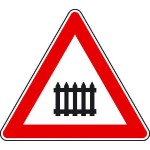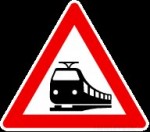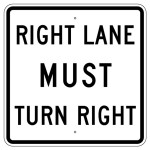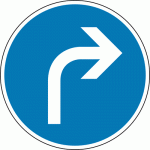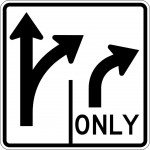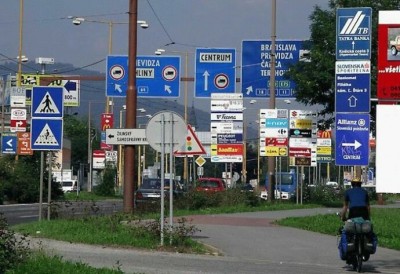I am sick, and forced to admit it. I still do not connect the stress to it all, but ok, does it really matter? I sleep in for two hours and feel almost human. I do not eat.
I leave the B&B and head in the direction of Splügen, thinking to ride at least part of our route today. I turn around after a bit and pull out the iPhone, finding the Gyger Bed and Breakfast in Thusis, which will let me in at 14.00. I ride around a bit more, revisiting the Via Mala, and then plop myself in front of the hotel and order a peppermint tea. I stop at the local market and get a yoghurt and some crackers. At 13.45, I inquire about my room, get my key, and promptly fall asleep. When I wake up several hours later, Thusis is closed for the weekend. I take a walk and find a kiosk near the train station, buying some sparkling water and a yoghurt drink. This is starting to look like a pattern. I sleep for most of the night, and when I wake up, I am still not in great shape, but OK to ride. I eat some of the French gluten-free bread that I picked up a few days before. It is rather fibrous, which I think might be good. I have it strapped to my pack as I have no room inside.
I make my way to Tiefencastle on the 417, giving up Splügen. We have planned to re-ride some Italian passes and spend a day on Stelvio and Umbrail, possibly including Gavia. This does not happen for me. I give it up and decide instead to simply ride Julier and Albula so that I can join my partner, who is riding that section, later after Davos. I take the 3 south and follow it to the 27 in Silvaplana, then the Albulapassroad, and finally rejoin the 417.
Julierpass is light and easy. The Marmorerasee is just as beautiful this time as last. Albula is interesting. In some places, wide and well-built, in others, basically a sort-of paved cattle path. And under construction, too. The construction in both France and Switzerland has been a constant. It seems as if every 20kms, we have been stopped to wait for a washout repair or replacement of some so-called barriers.
After descending Albula, I pick up the 28 in Davos and ride to Landquarrt and Mastris, where I find Tardisstrasse. What will happen there? Nothing exciting, it’s an outlet mall, characteristically open on Sunday so that people have a reason to go there. If it’s anything like the one in Roermond, NL, prices are hardly “outlet” as we know the concept in the US. I stop at the Heidiland rest stop and wait for my partner, grabbing some SP at the shop. SP+Ducati? That’s Italian! And Heidiland… How can I not stop? The ghost of Johanna Spyri will come after me if I don’t. The loudspeakers in the parking lot are yodeling, it’s a little weird. My partner is along shortly and we ride north on the A13, getting off to ride around a traffic circle in Lichtenstein and put on rain gear – a strong storm is blowing in. I can now check Lichtenstein off on the list of EU countries I have visited on a motorbike.
We find the Hotel Sinohaus-Linde in Lustenau and dinner at the Restaurant Olive around the corner. I finish the French bread with my salad.

